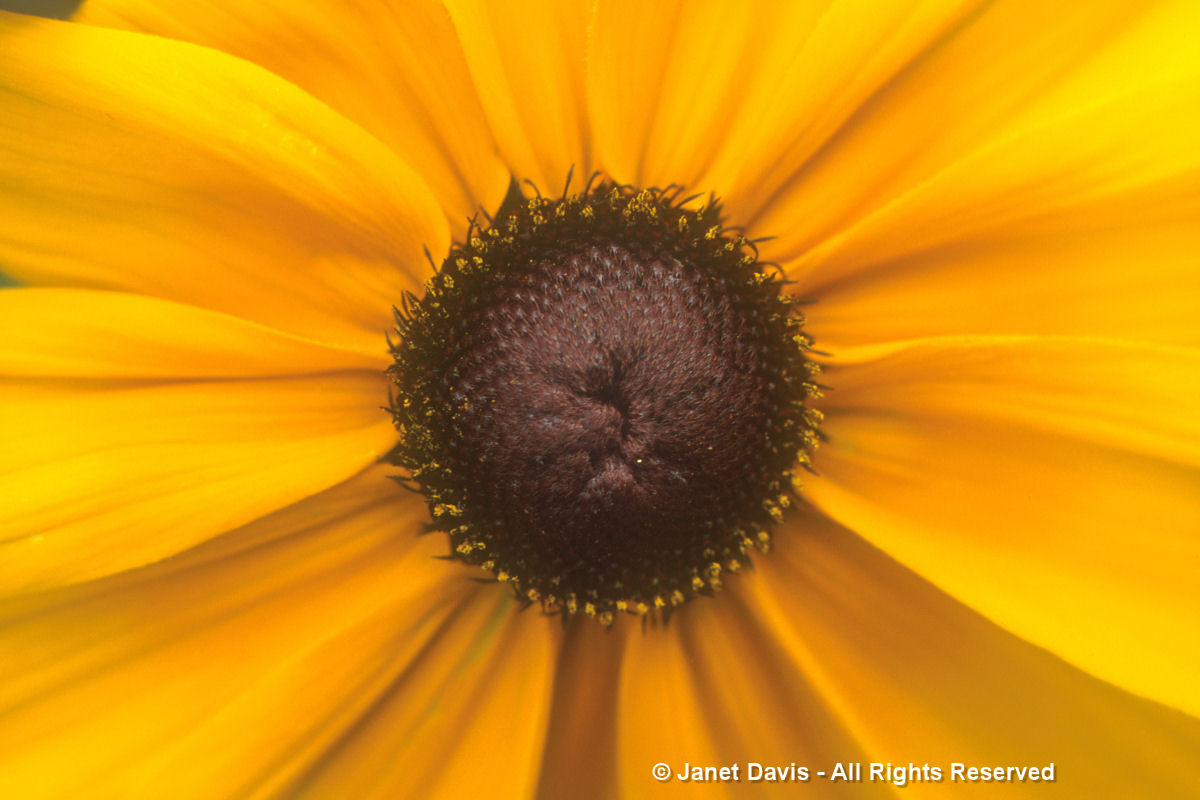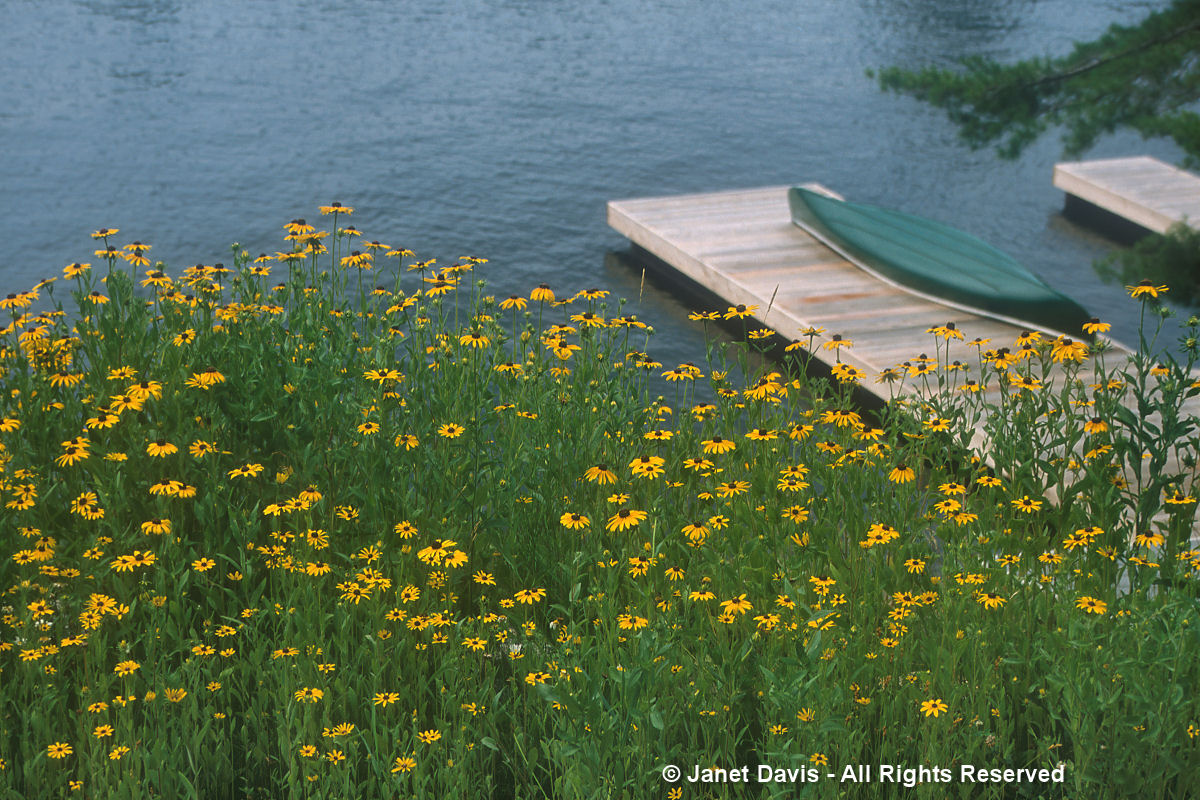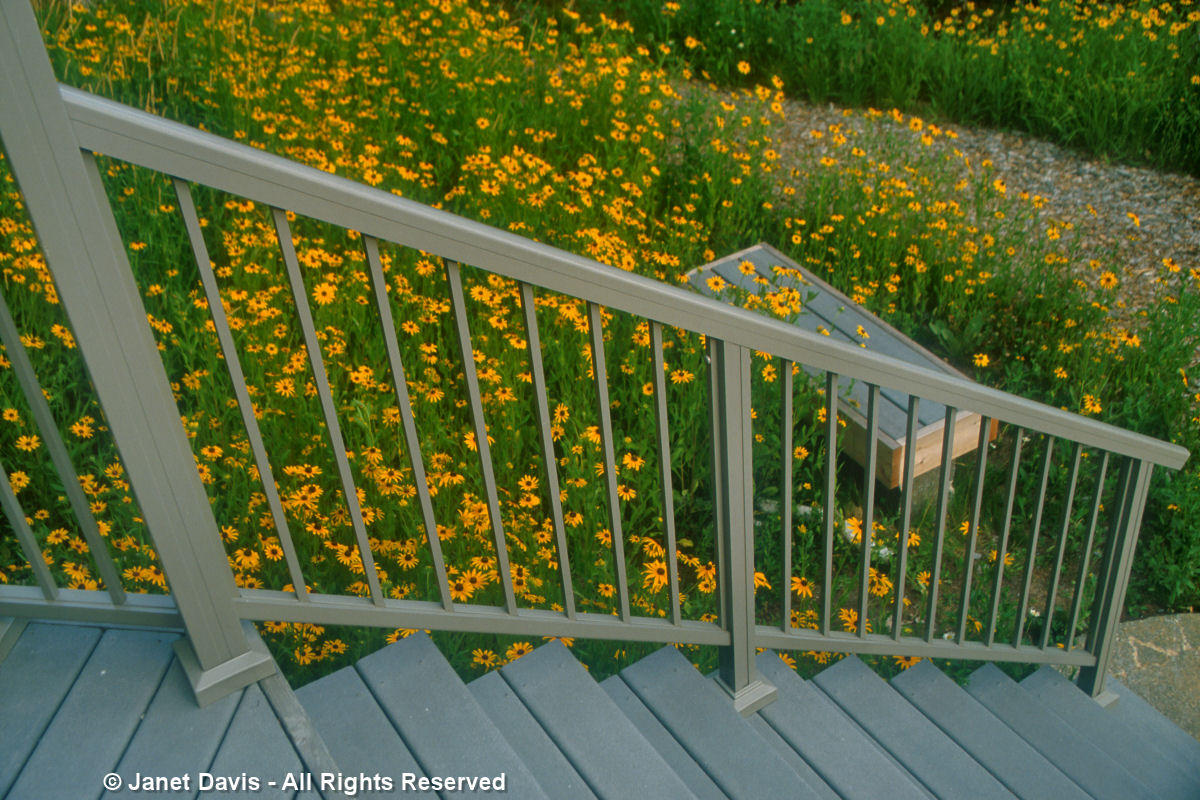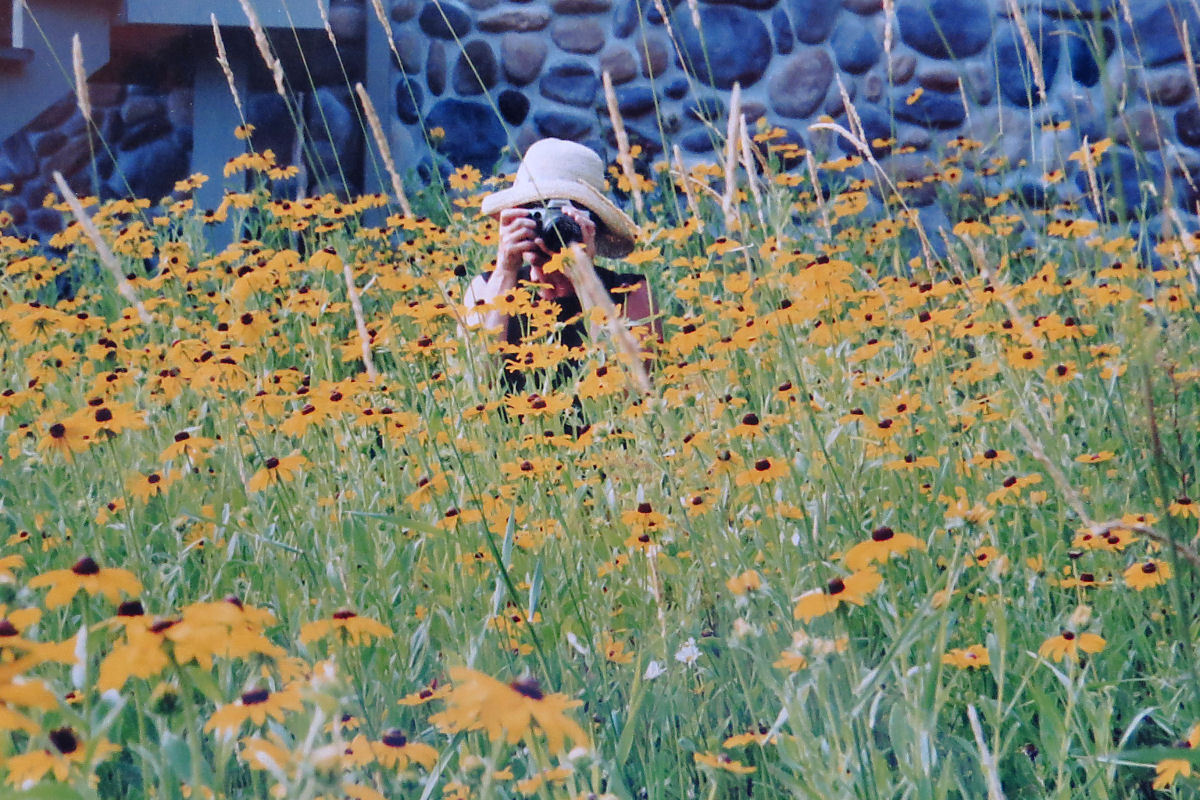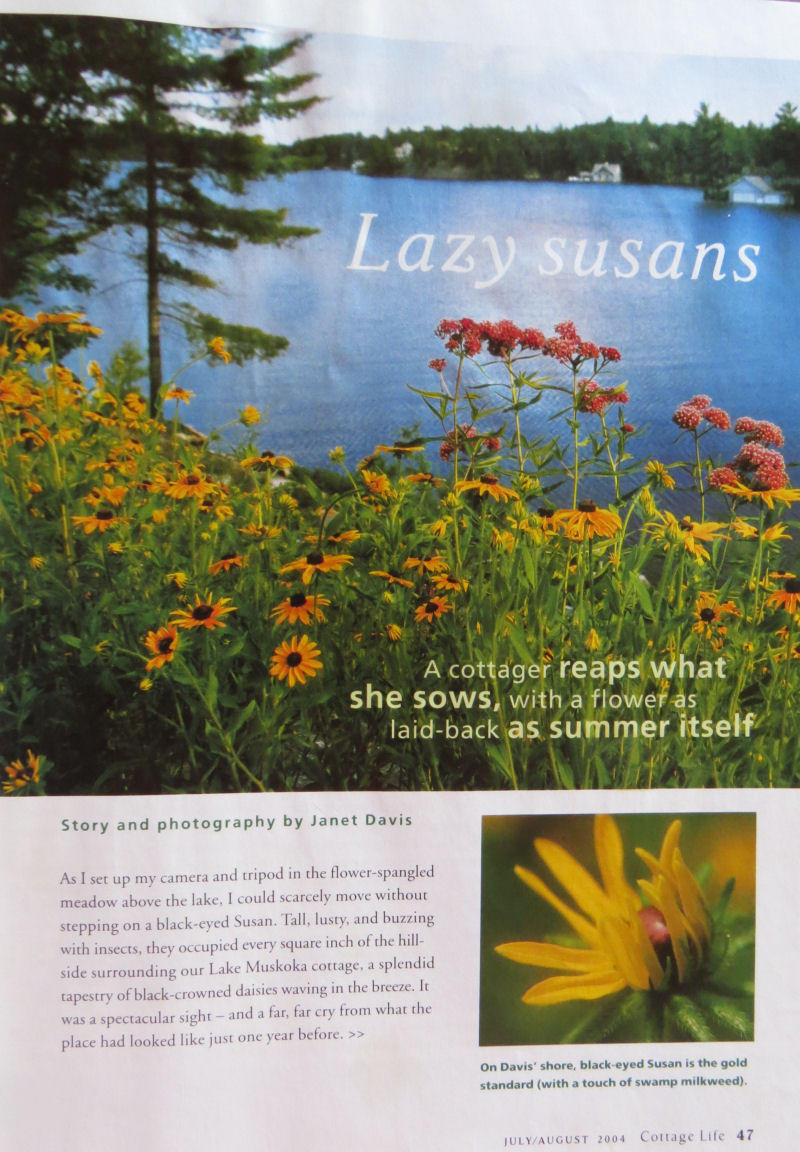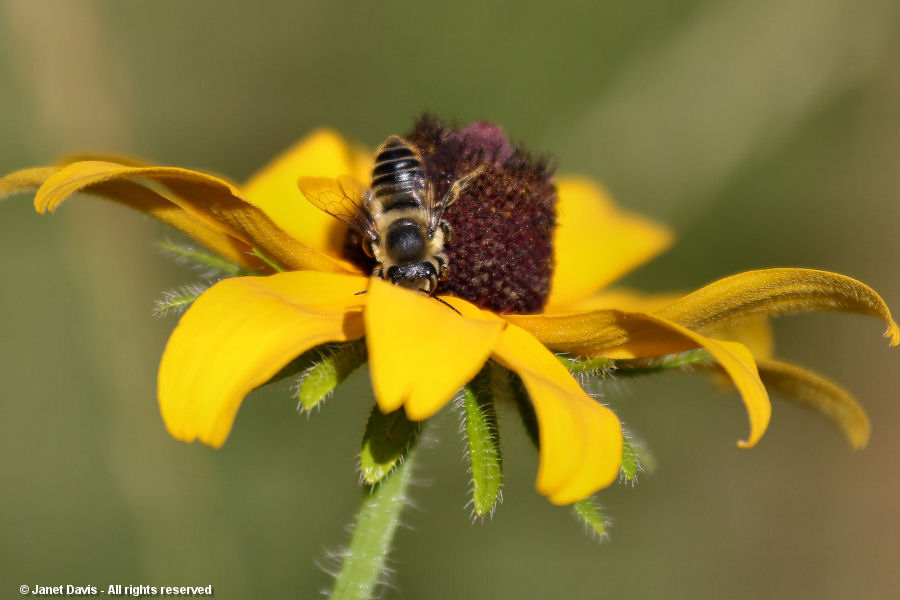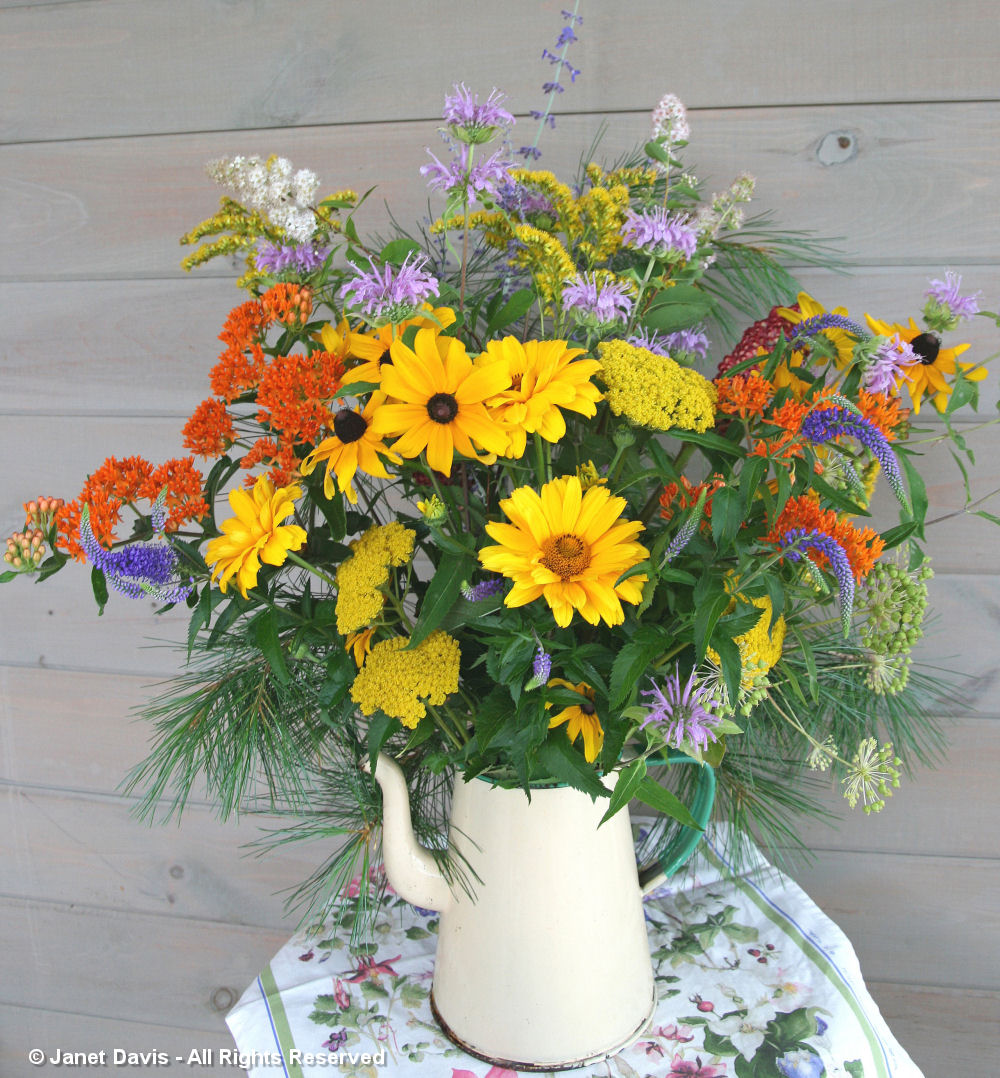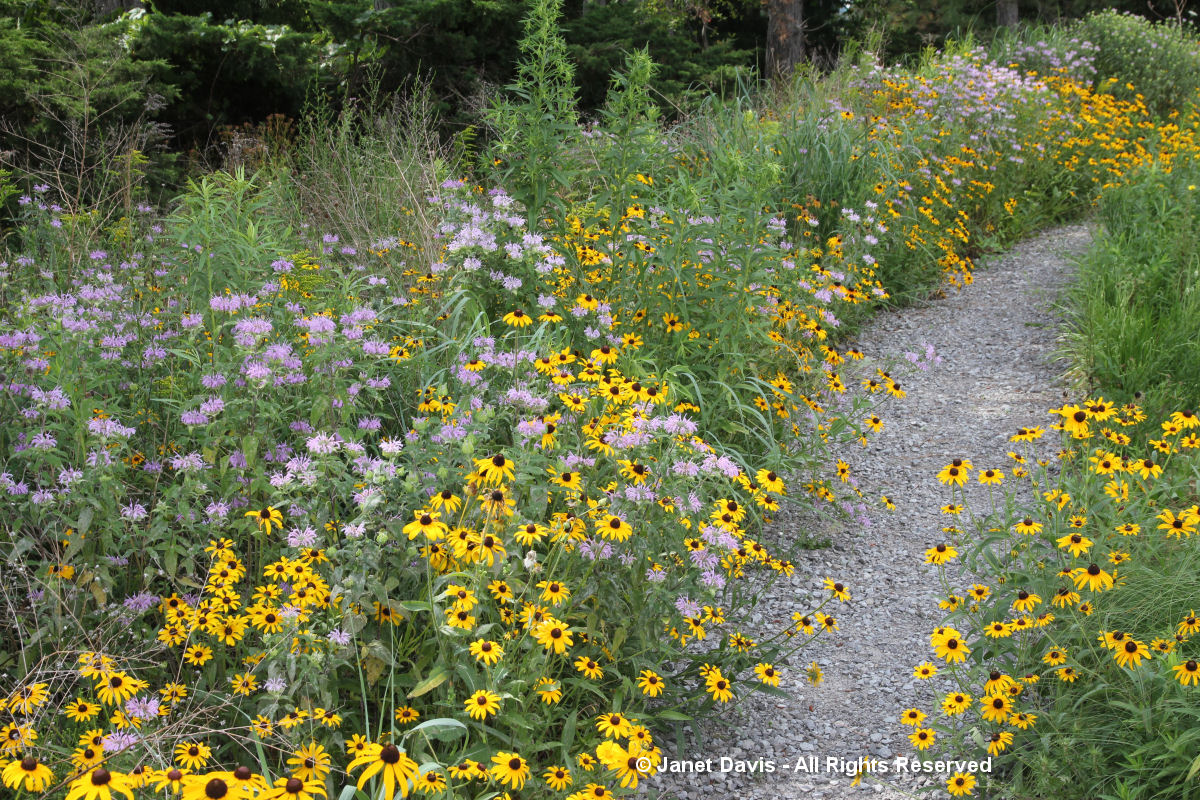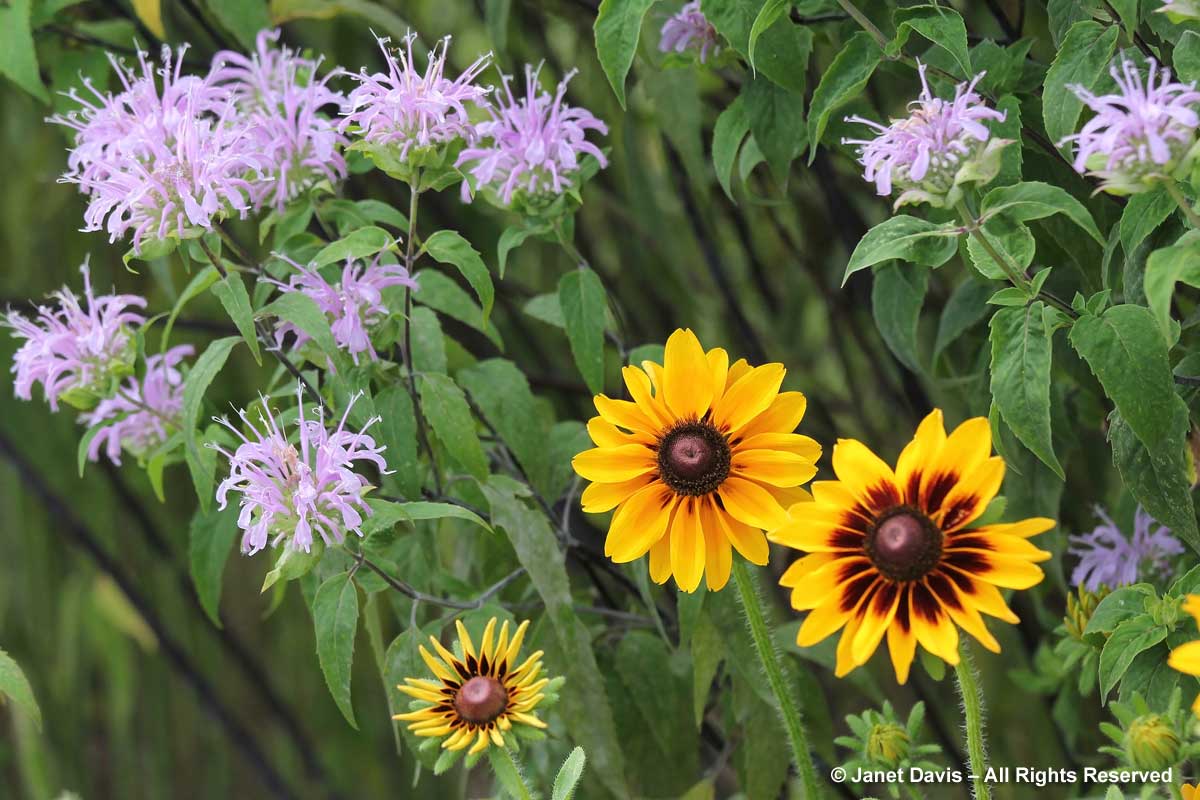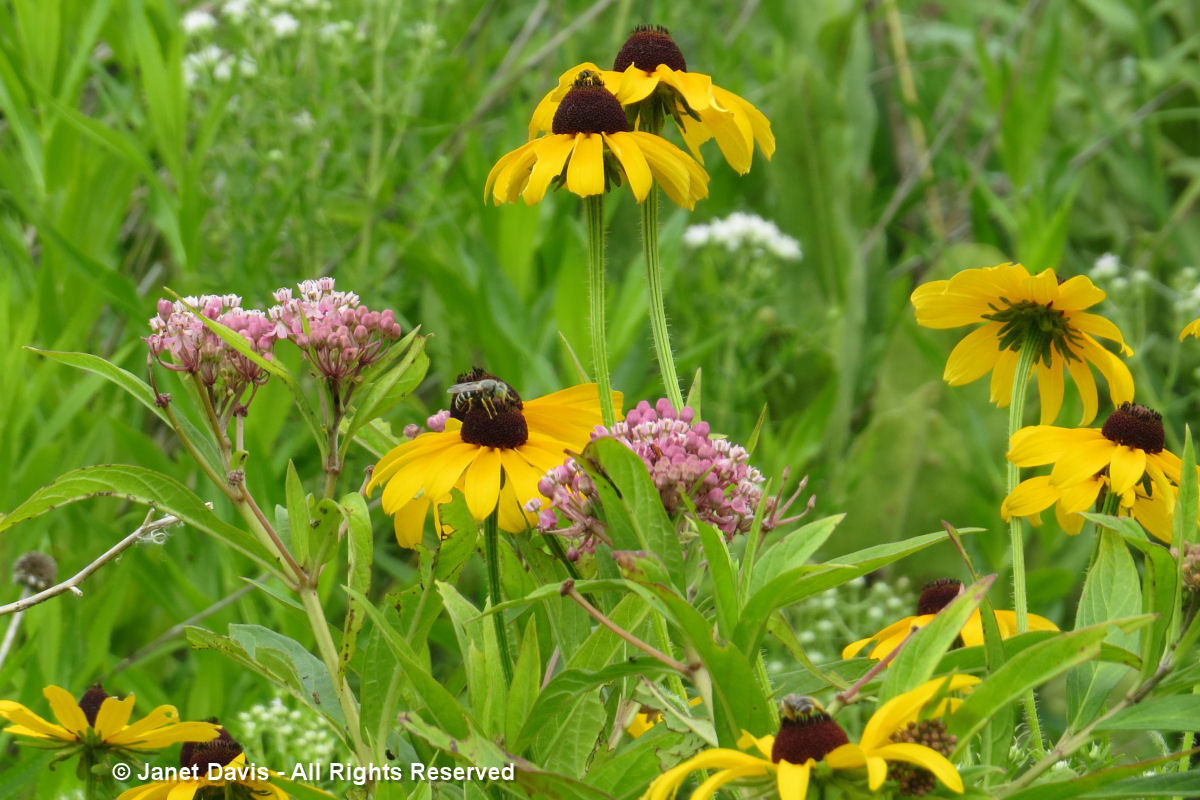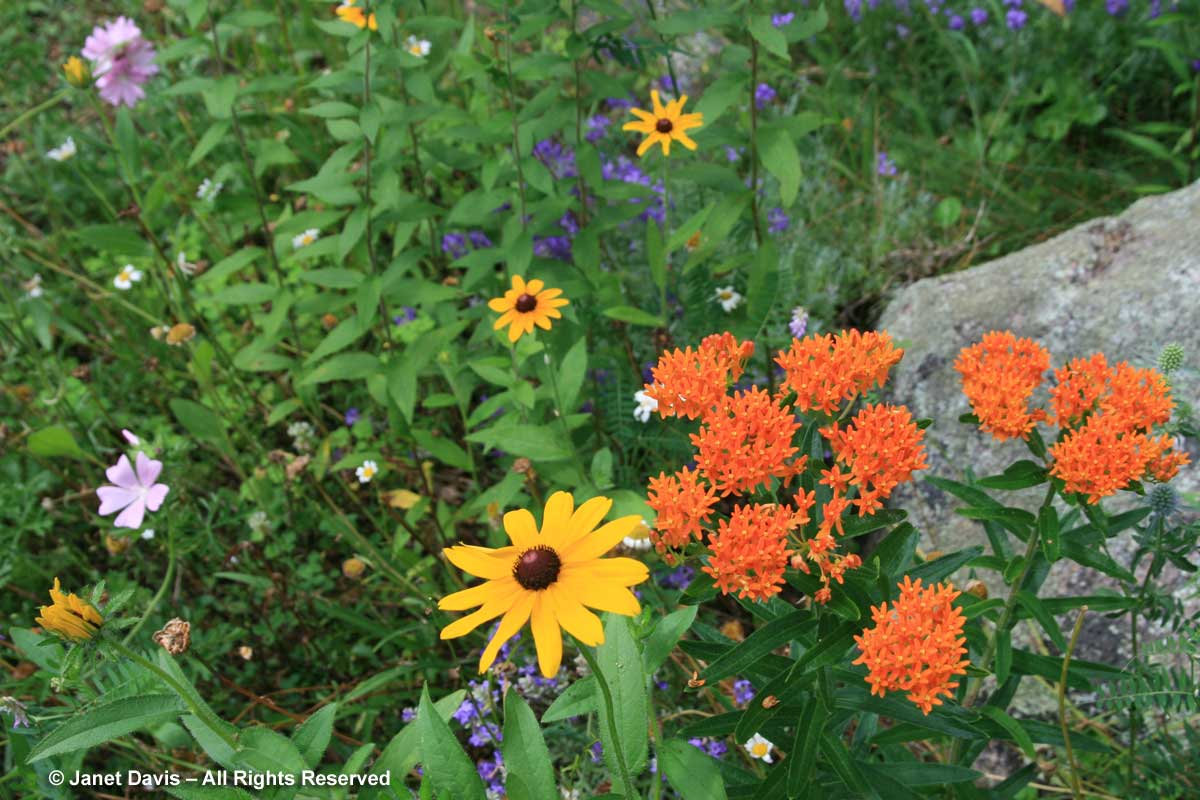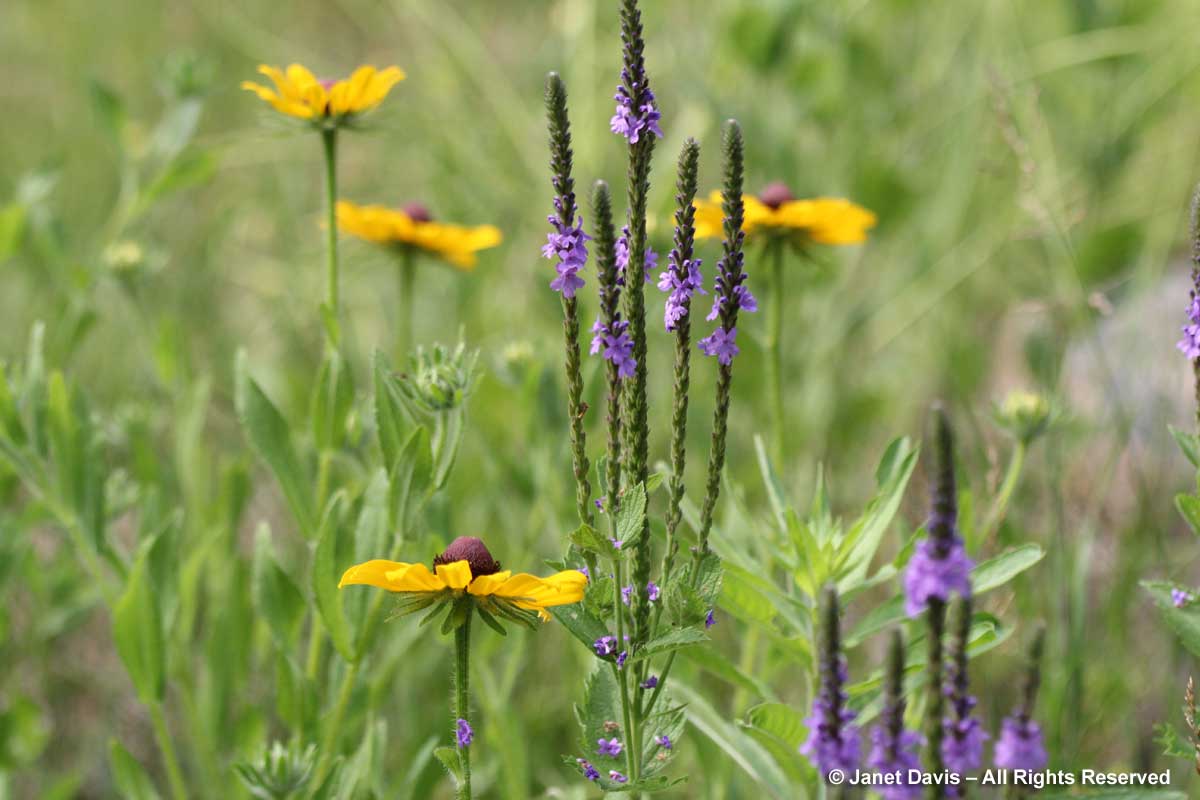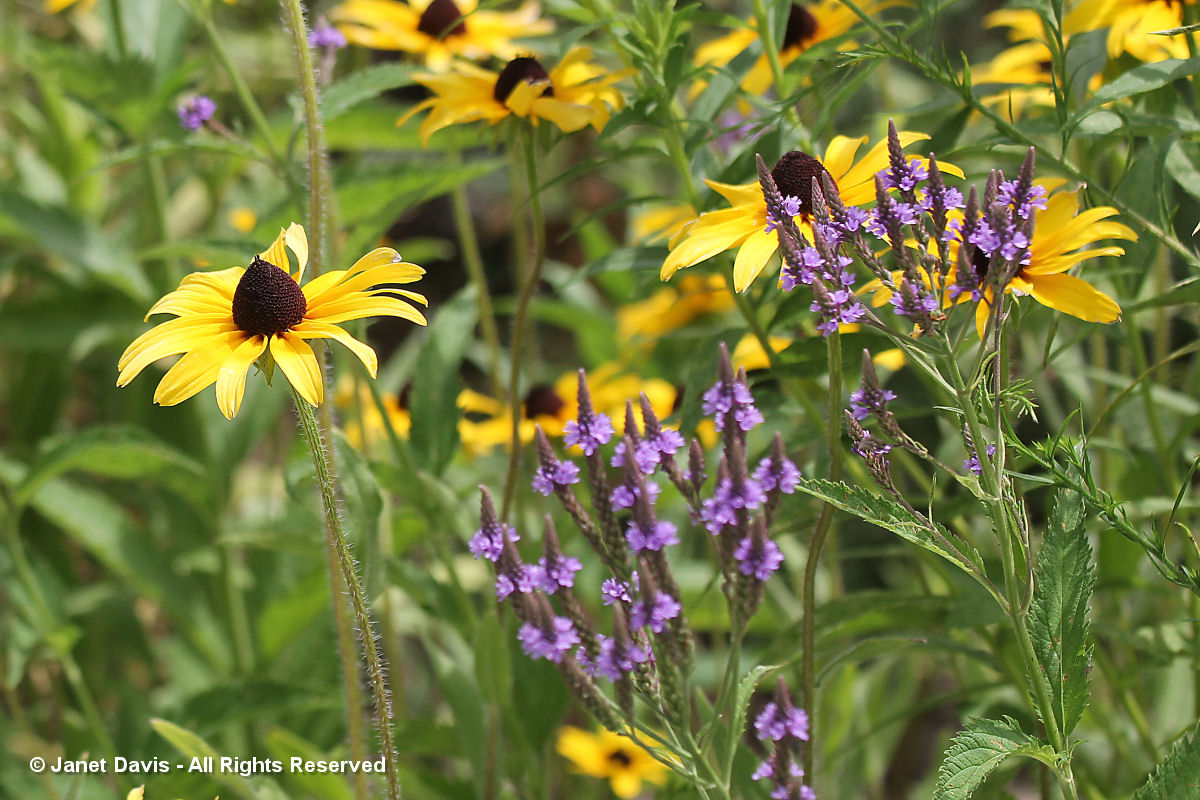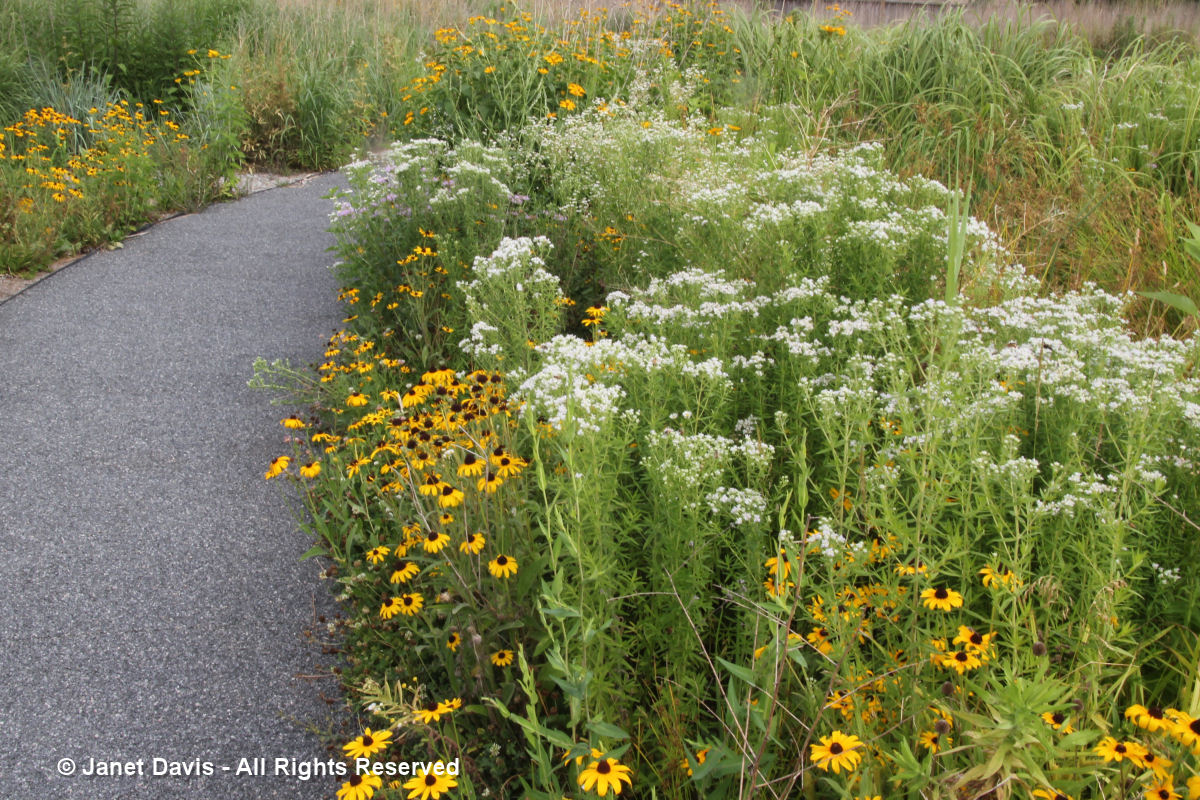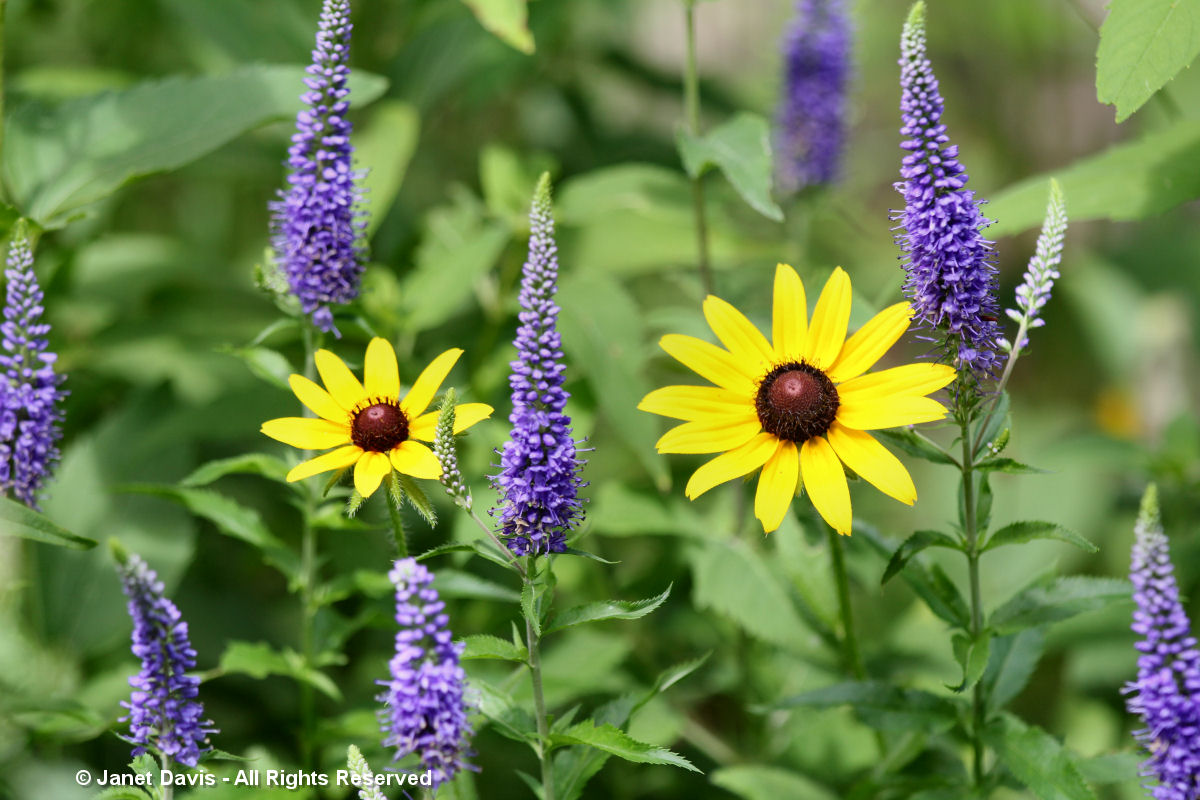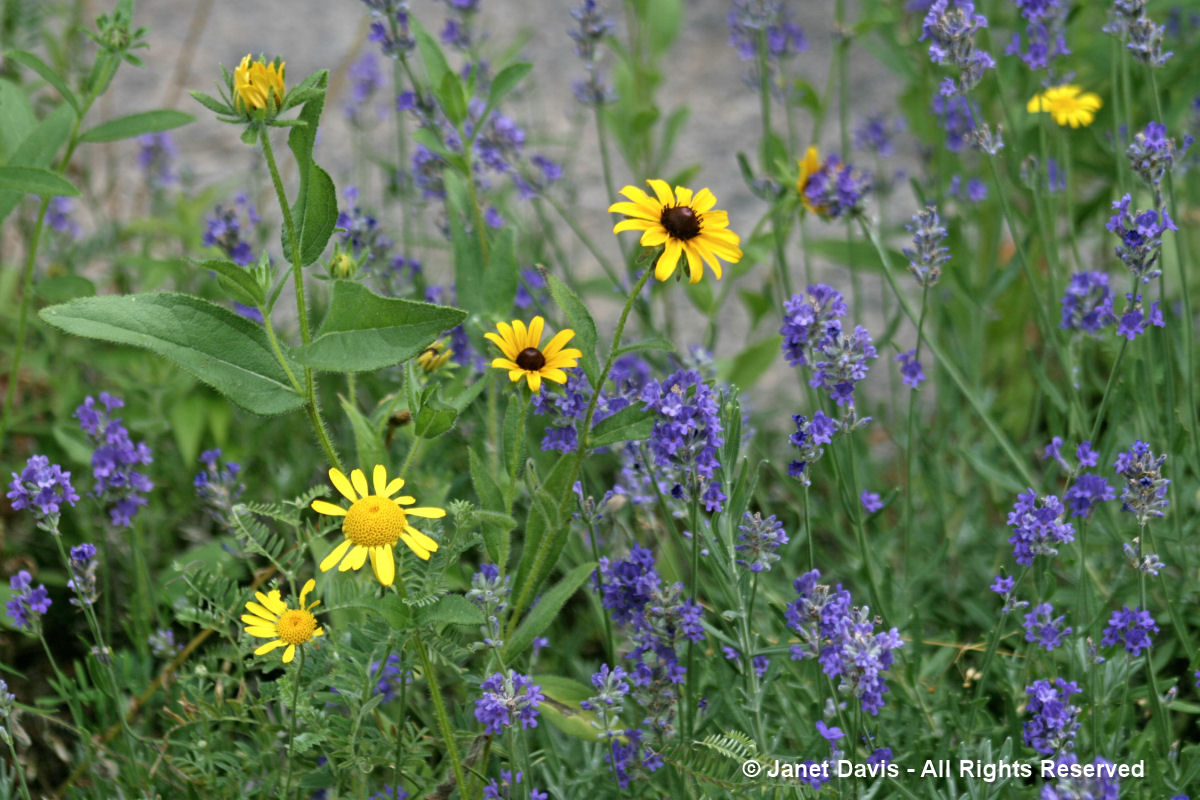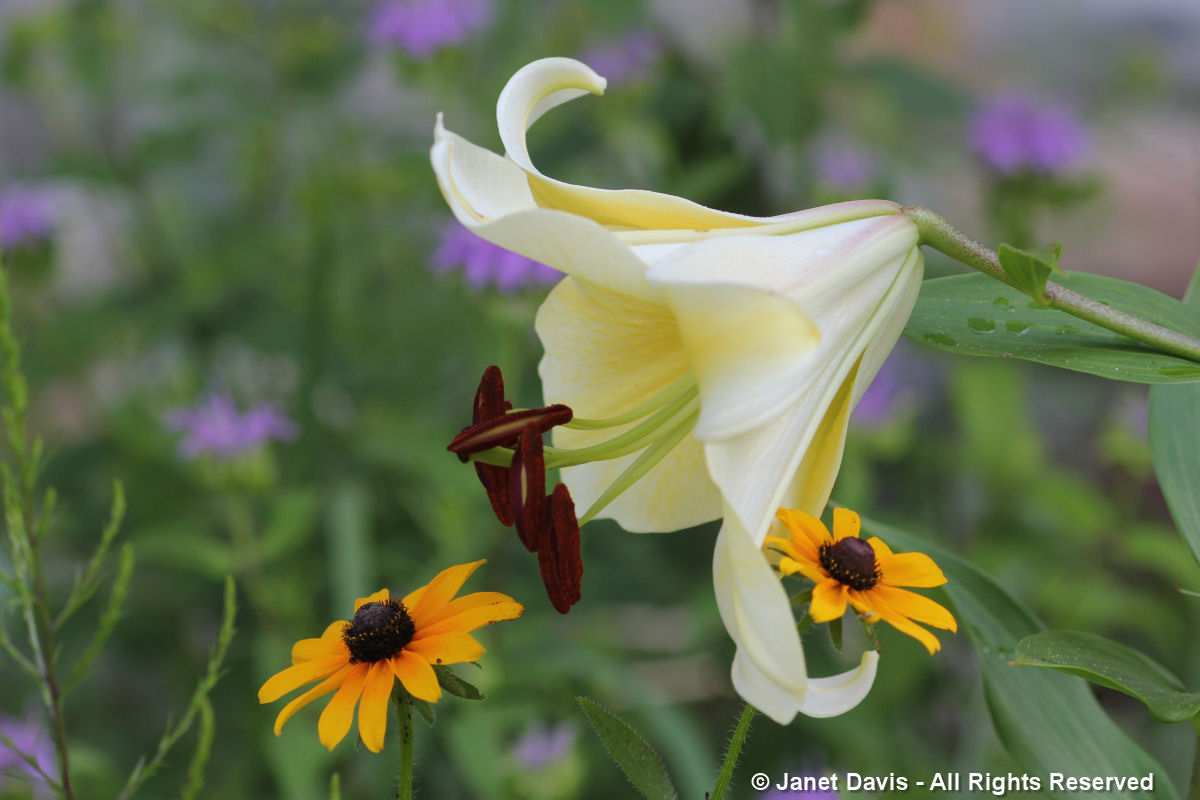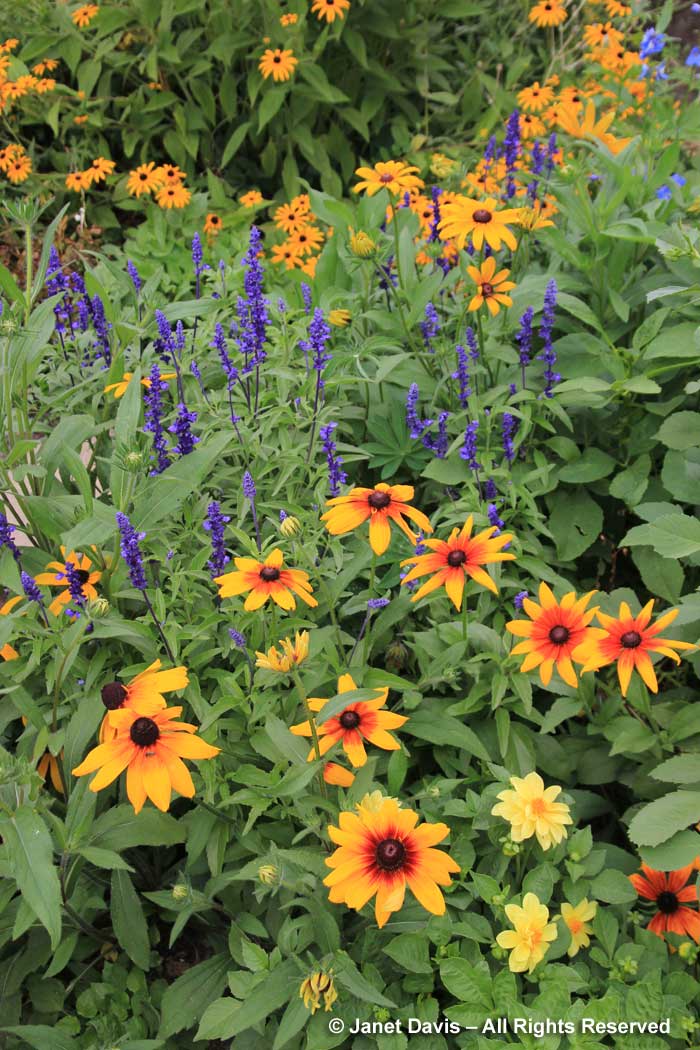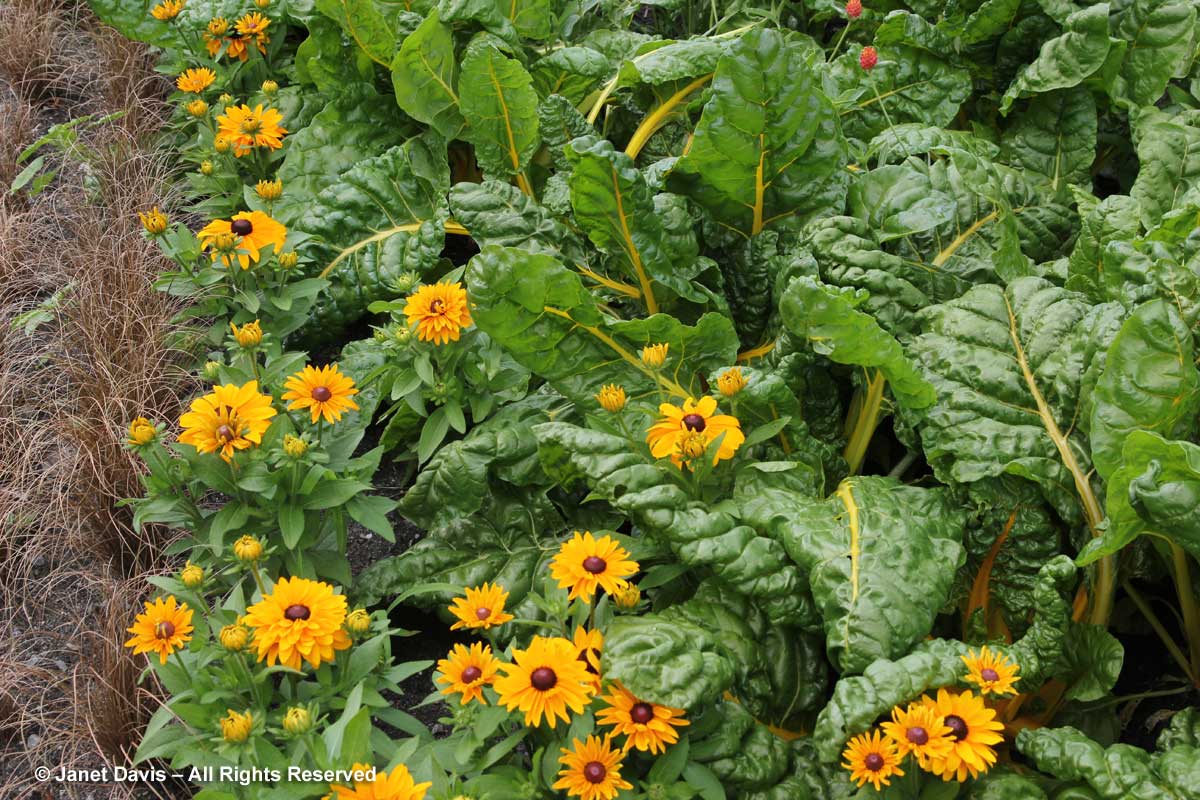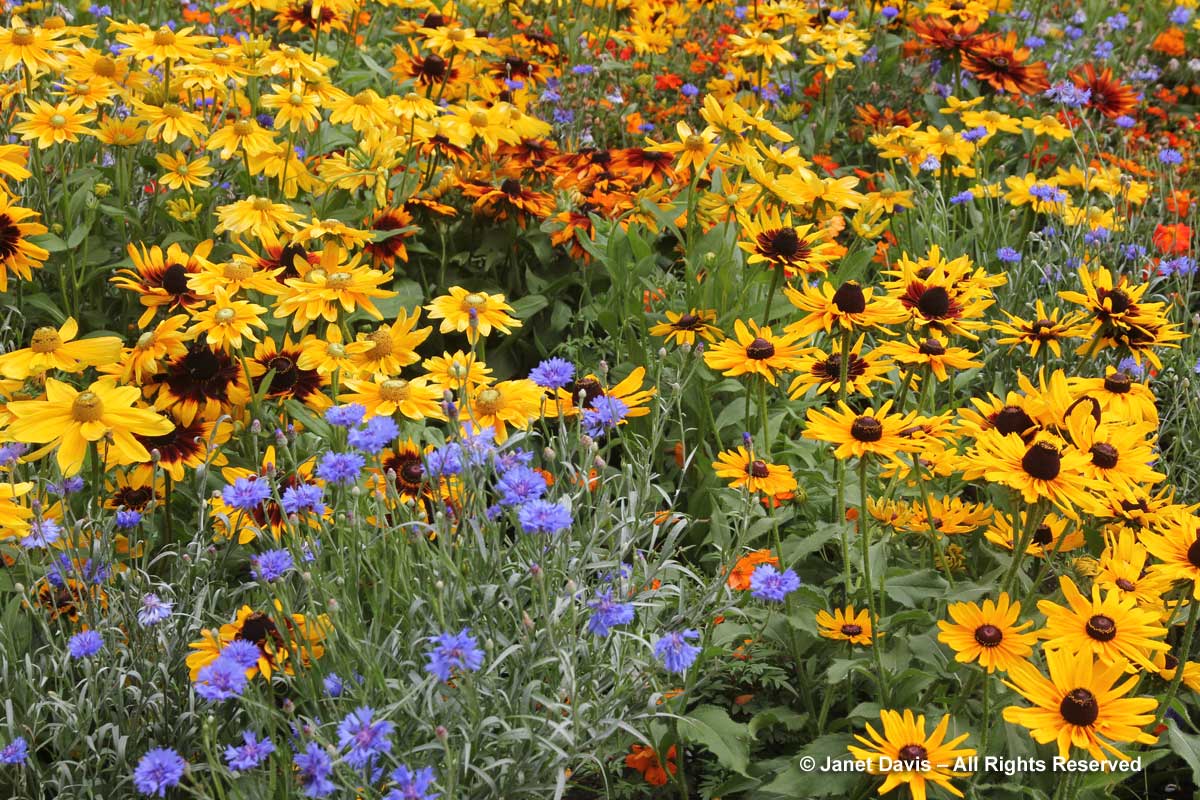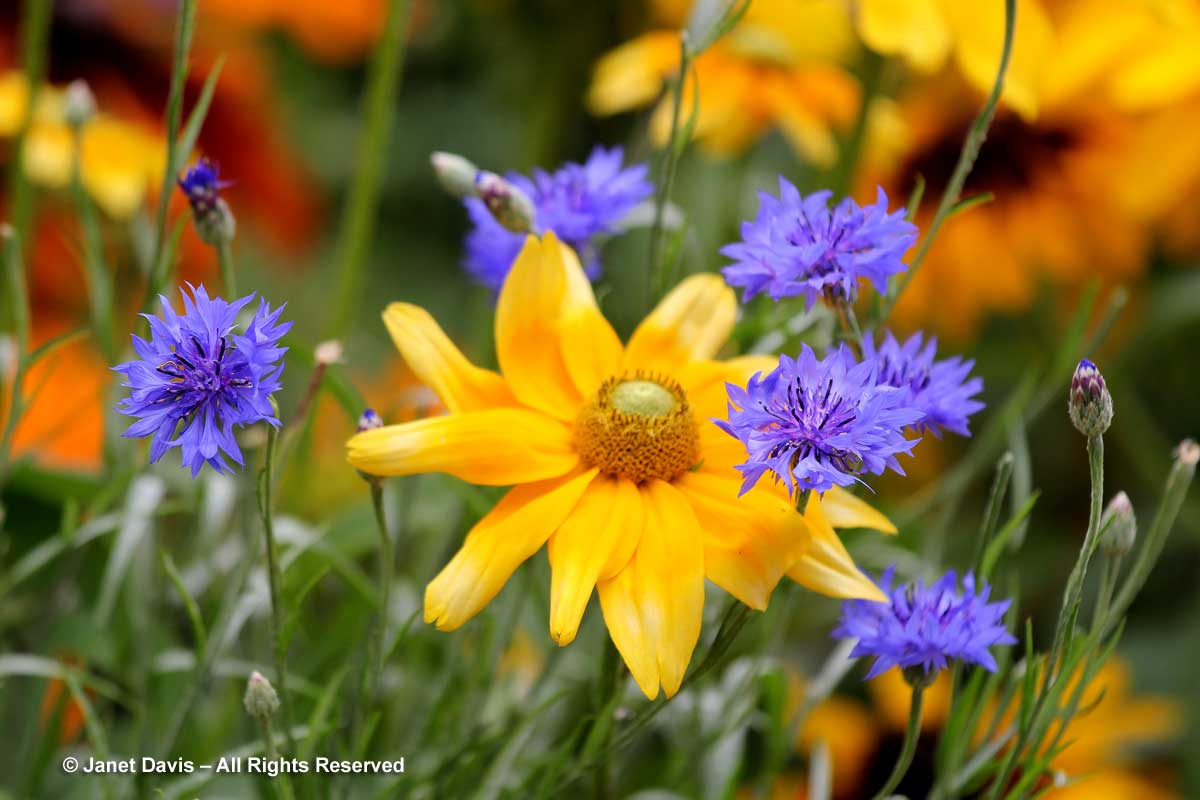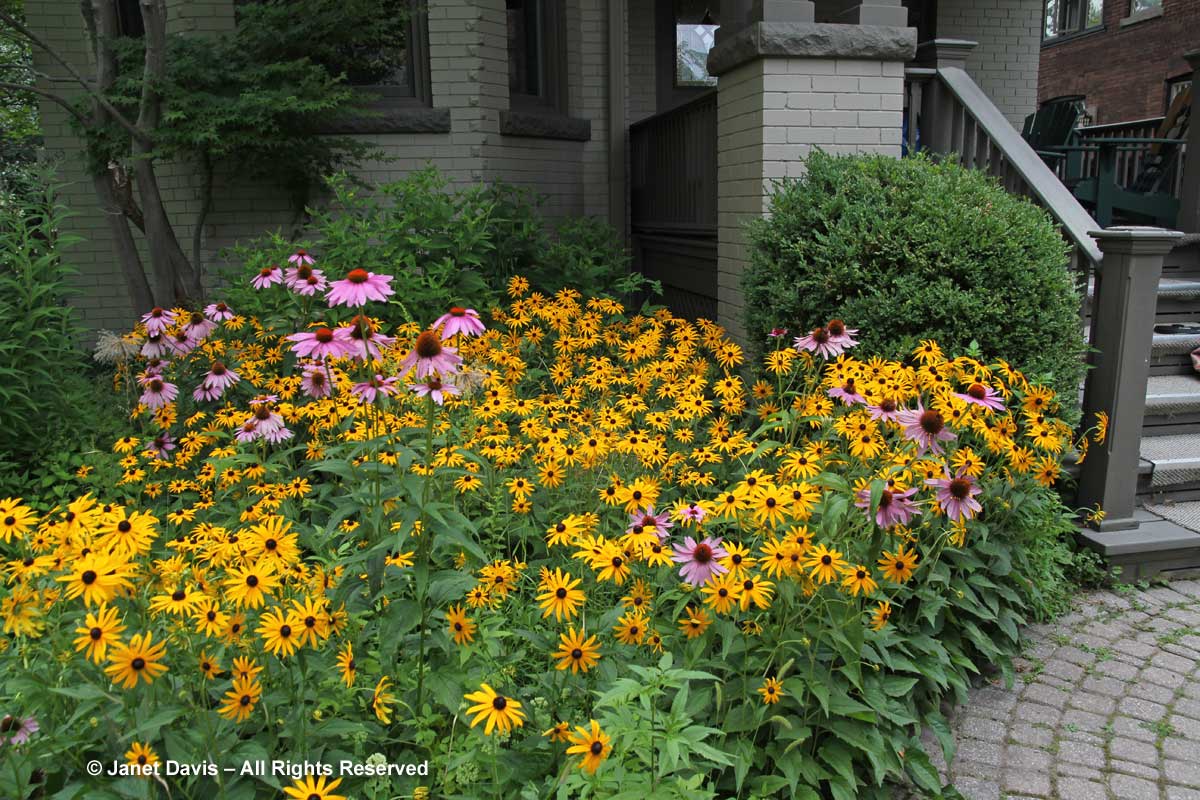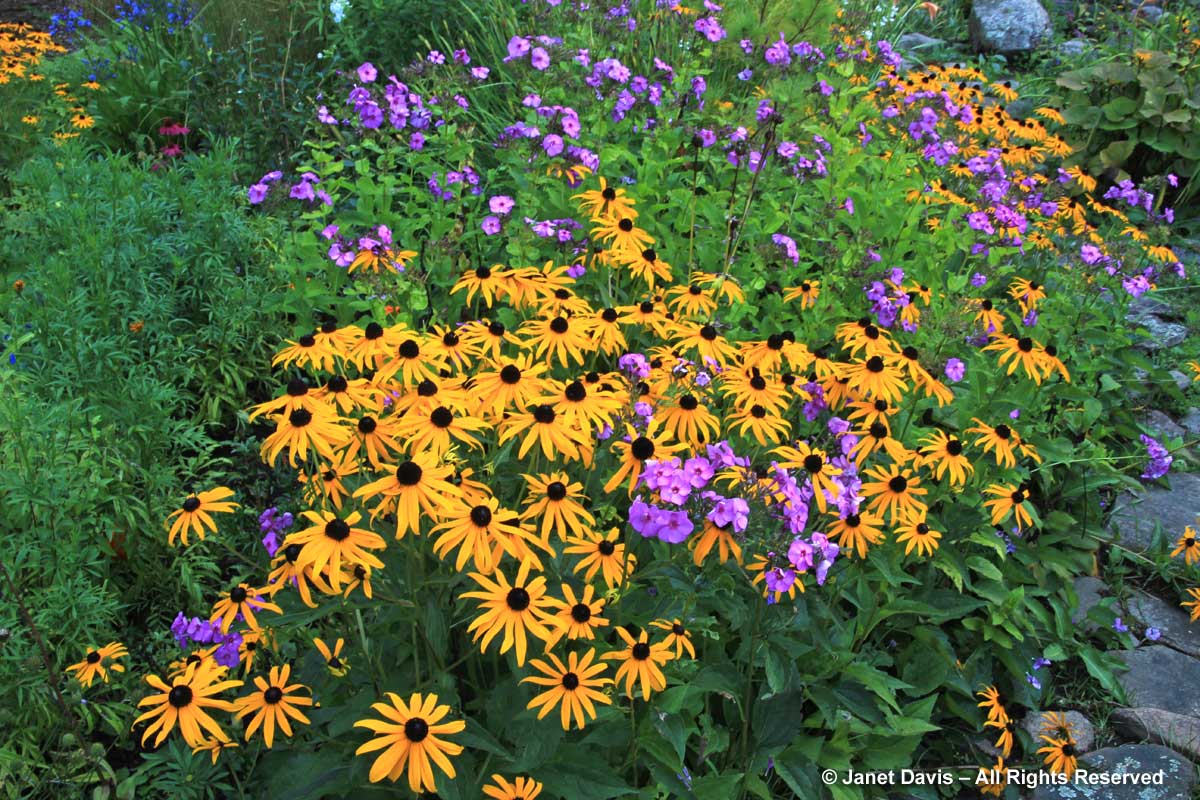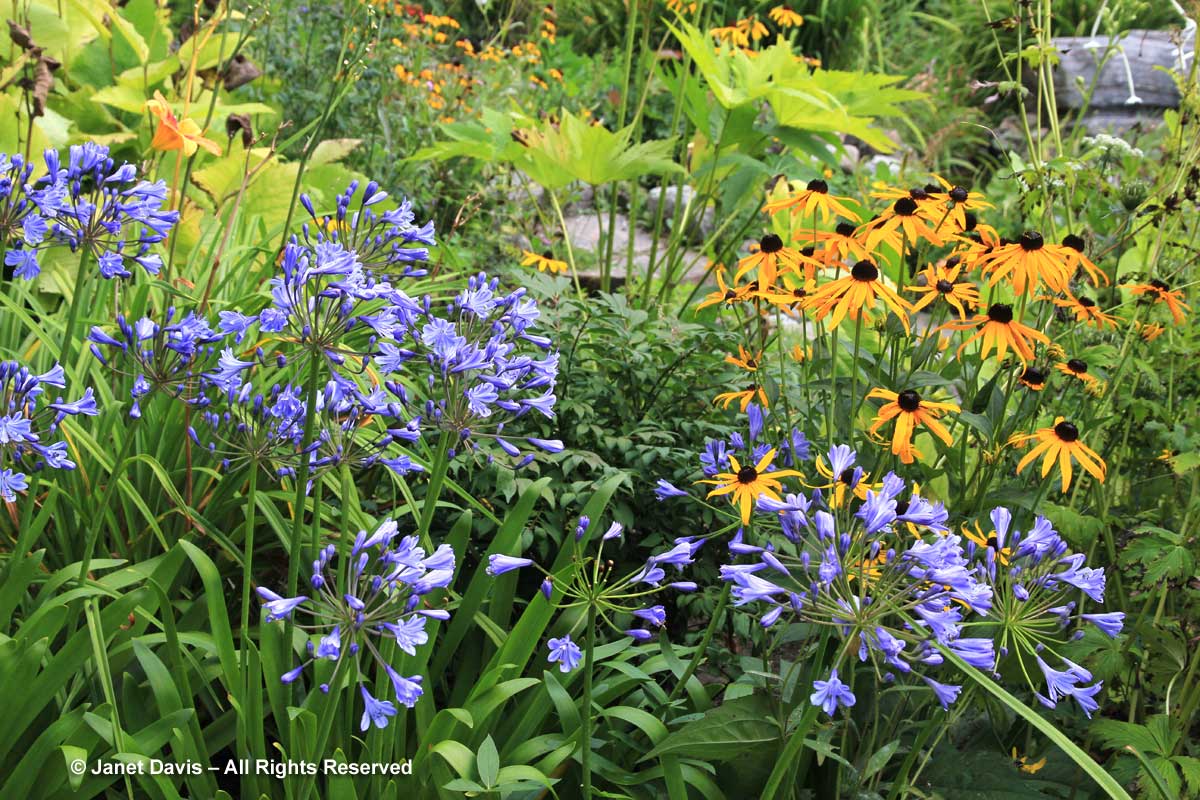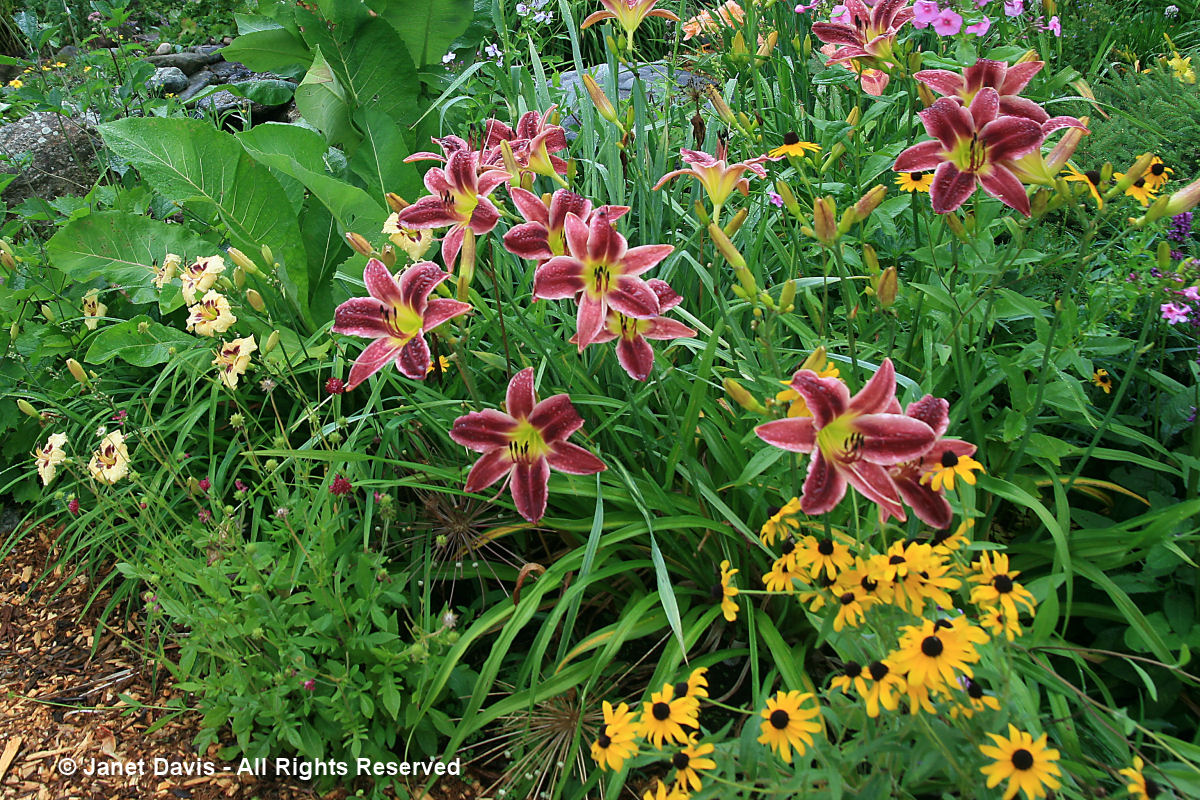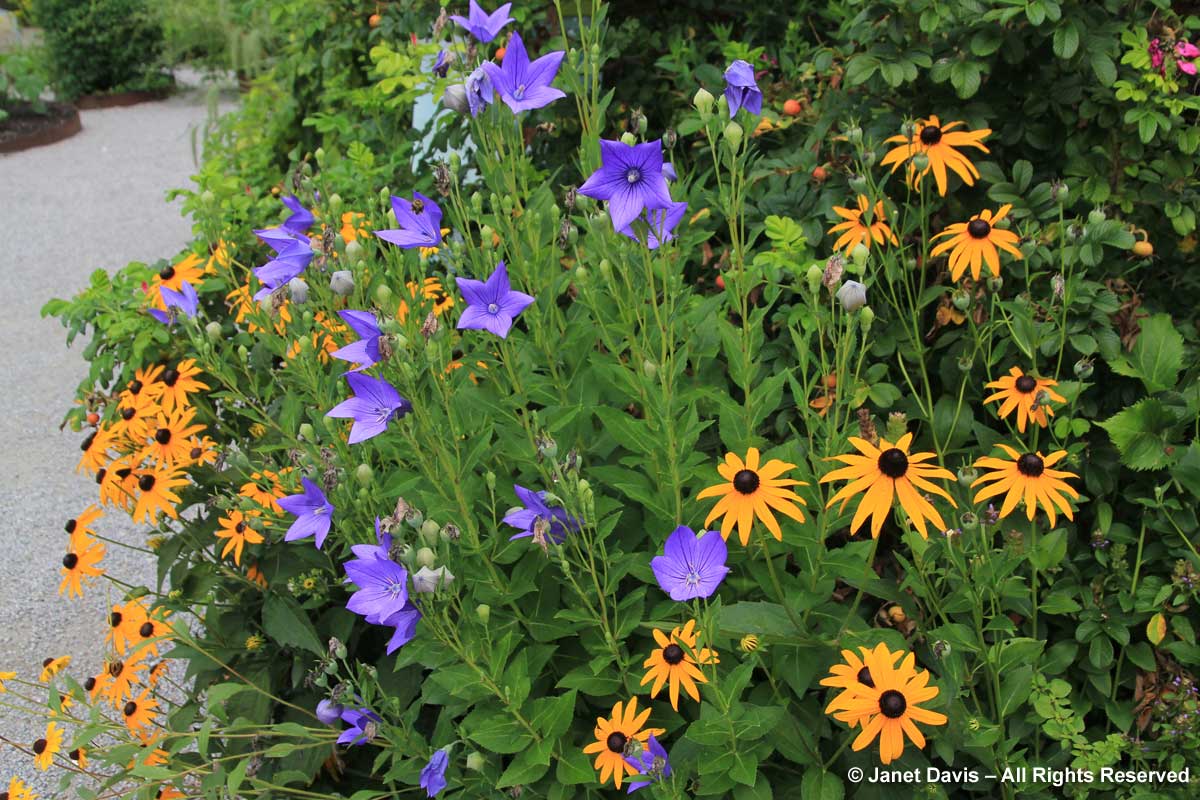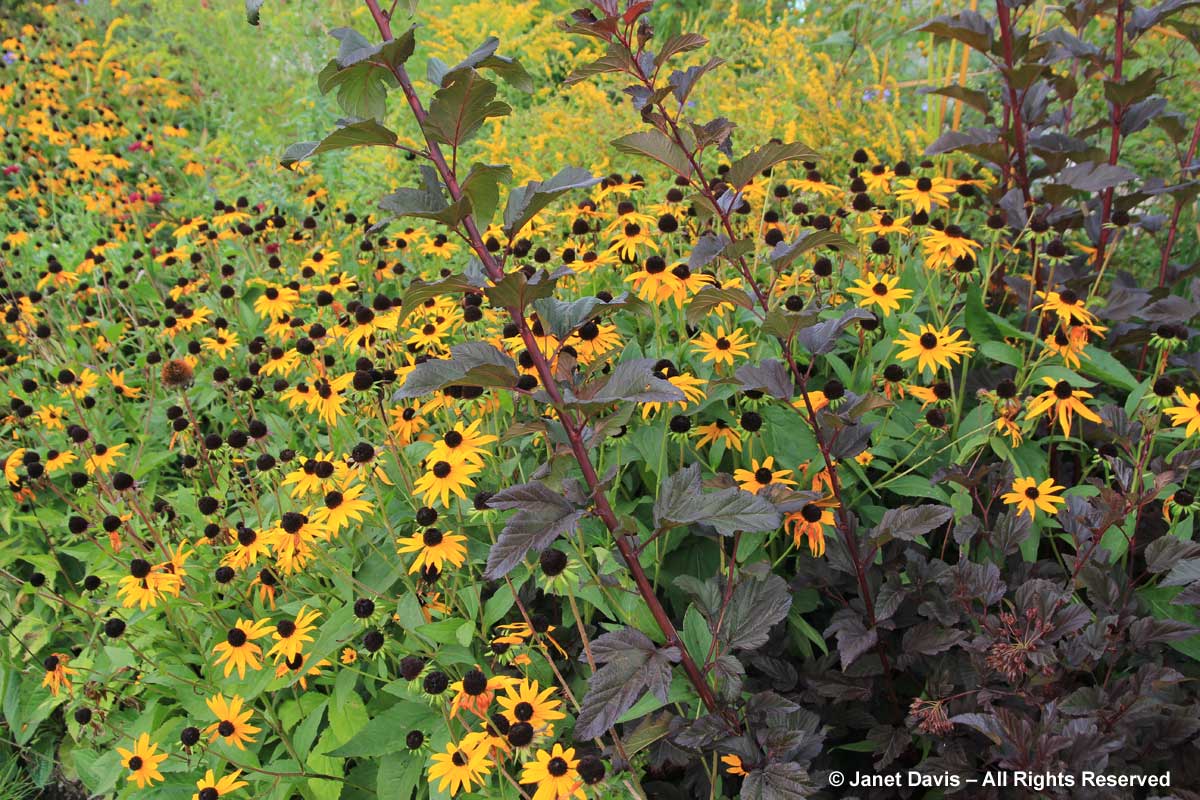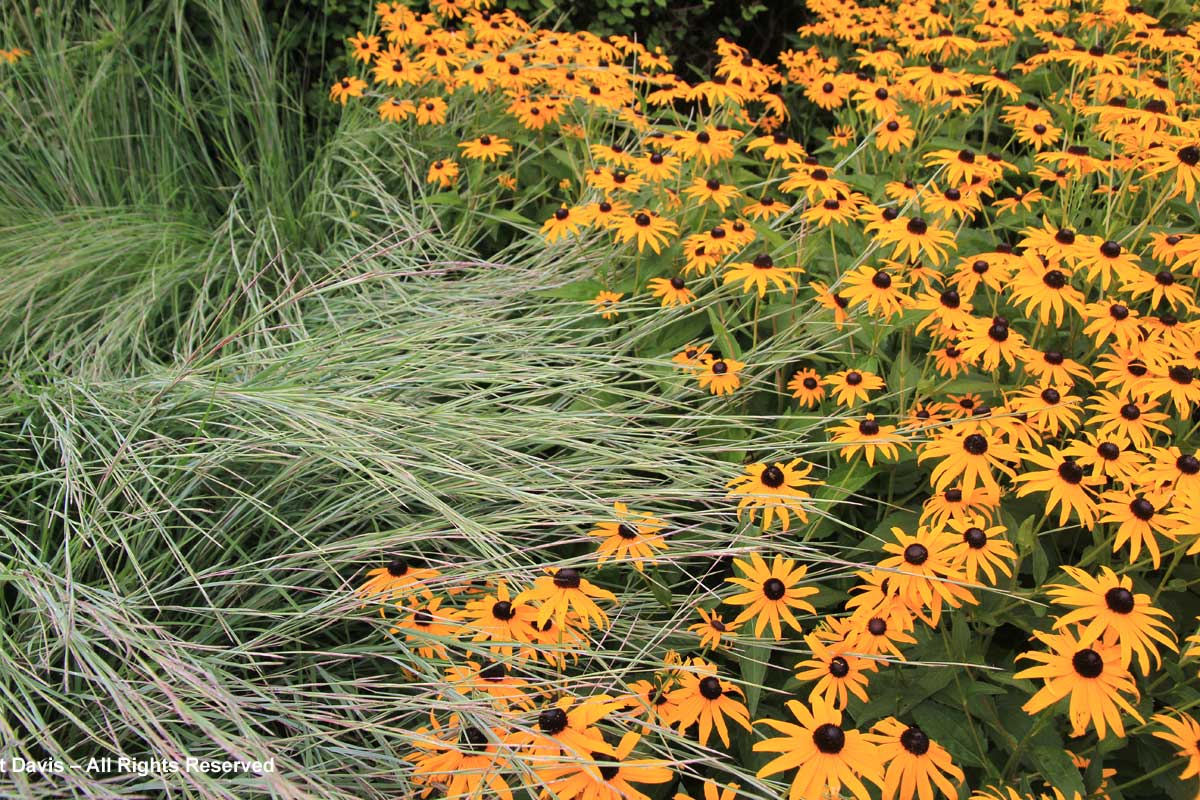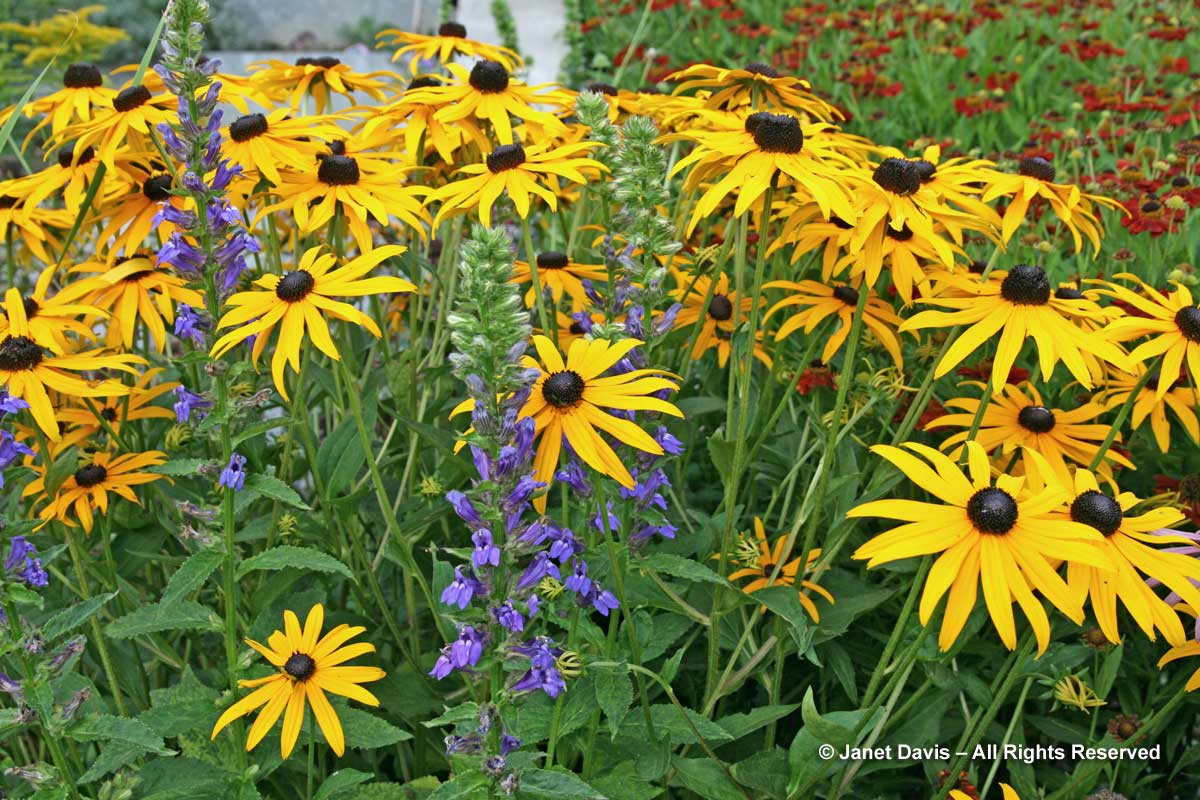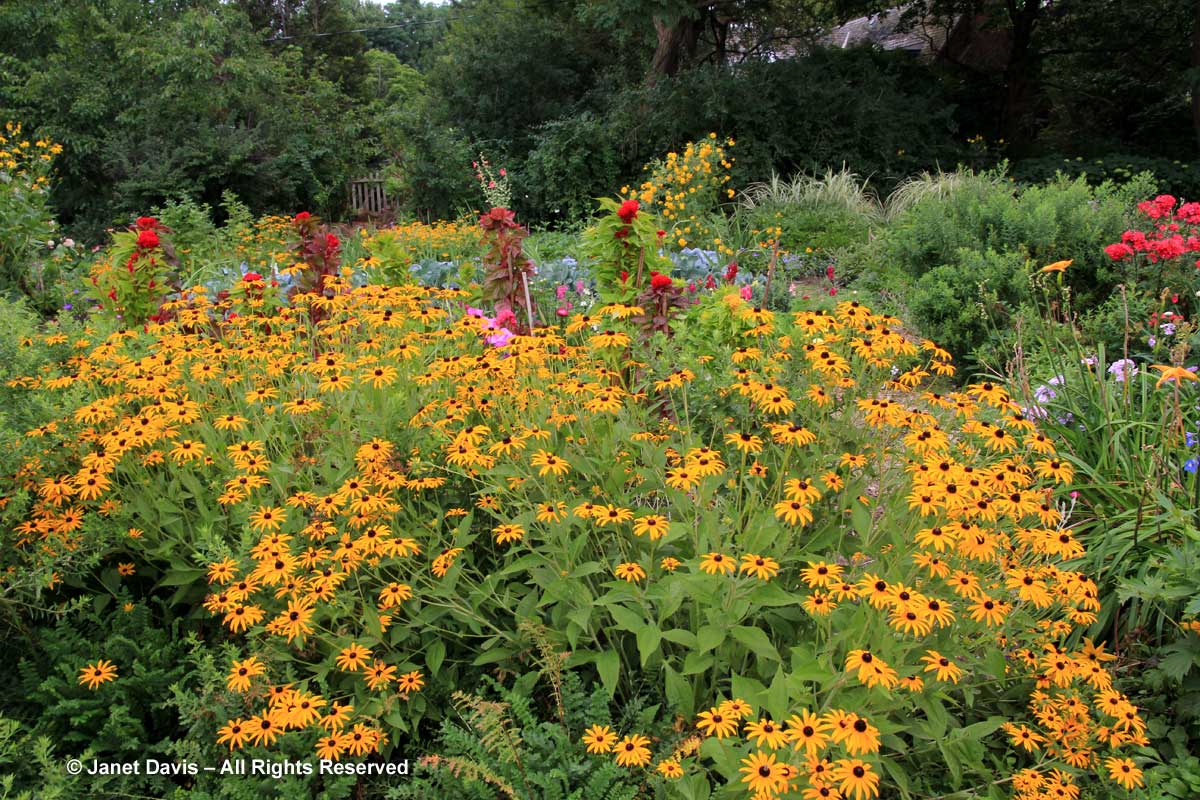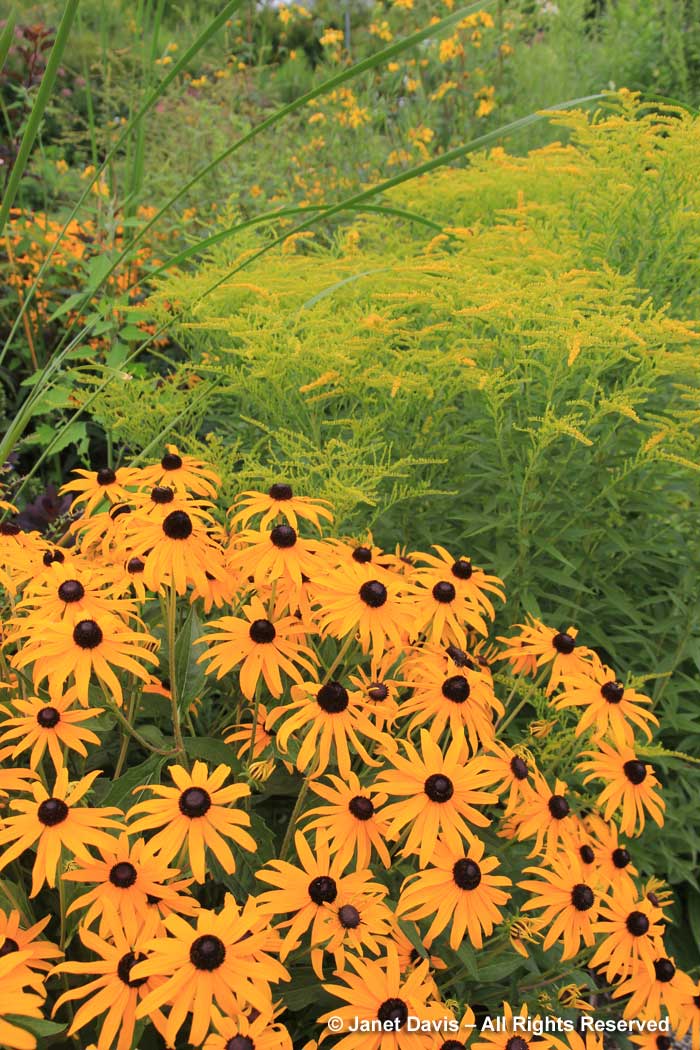In this third edition of my blog series on some of my favourite trees and shrubs, I’m taking a meander through the genus Acer, the maples, specifically those native to eastern North America. And what better way to start than with the spring flowers of the iconic red maple (Acer rubrum)? Always one of the first species to show colour, this tree in Toronto’s Mount Pleasant Cemetery was sporting its fuzzy male or staminate flowers on its bare branches on March 31, 2010…
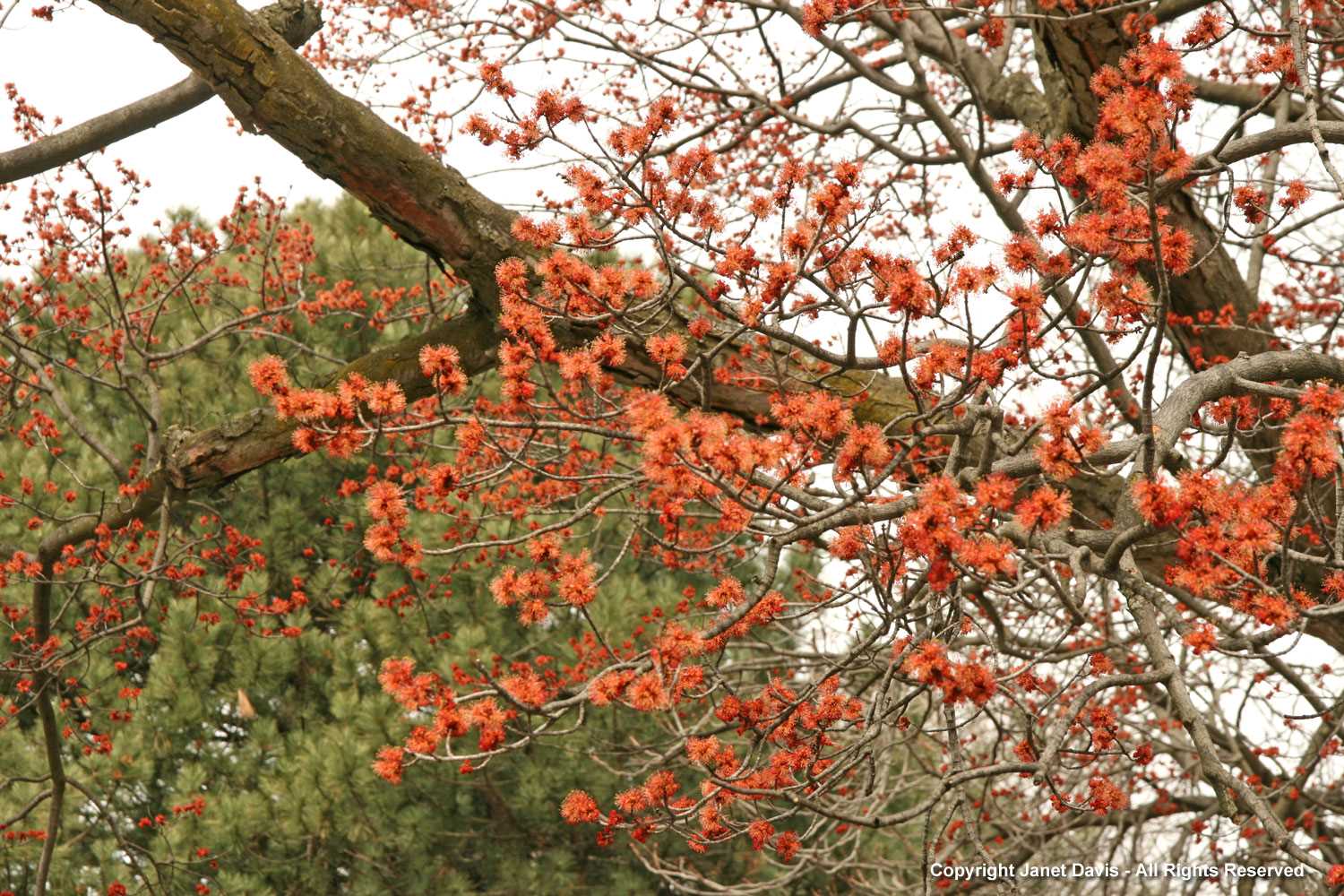
…. with a closer look here. Red maple flowers are an important early source of pollen and nectar for native bees, hoverflies (like the one below) and honey bees.
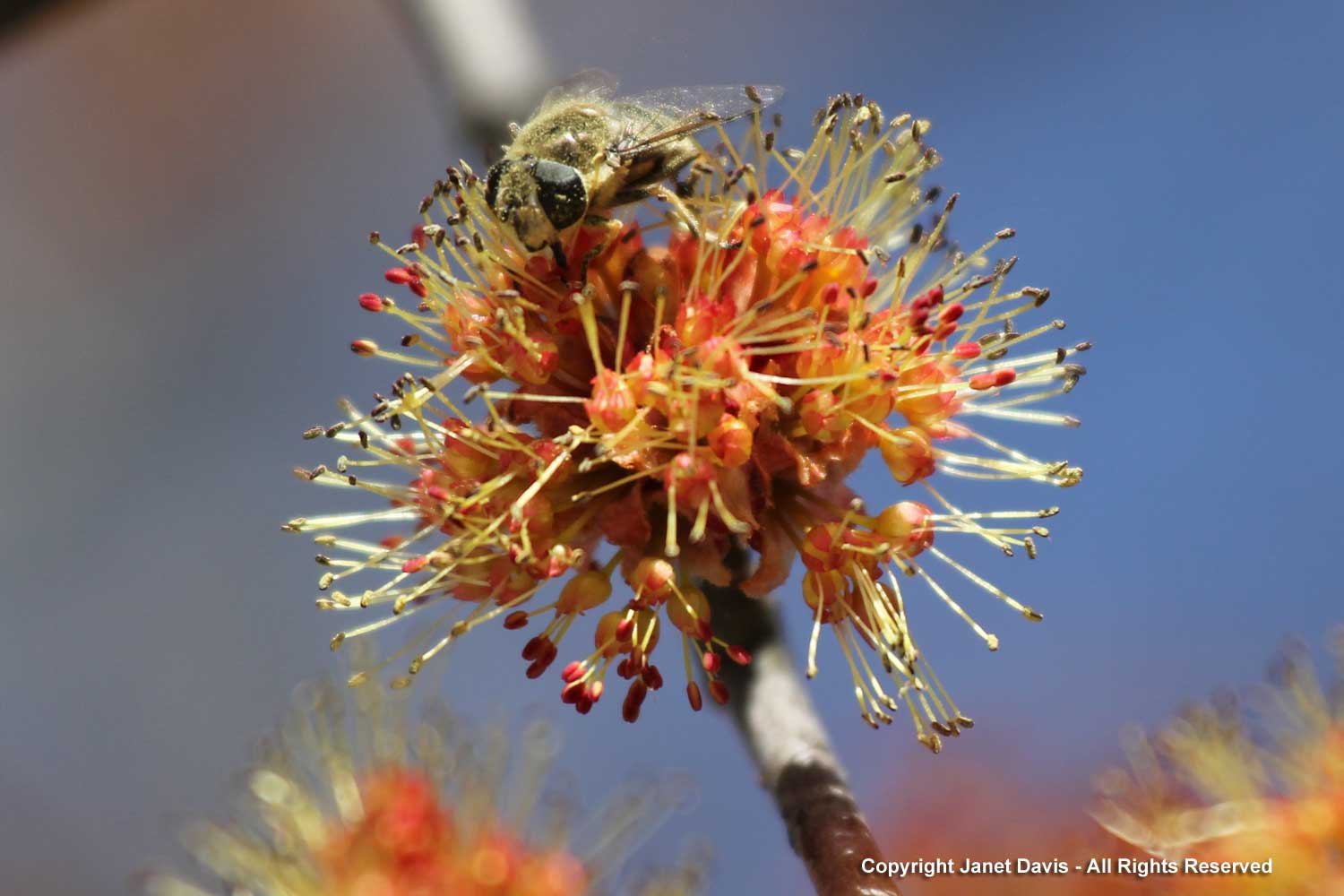
Red maple trees, sometimes called “swamp maple” for their propensity to grow in damp sites, are generally dioecious with male and female flowers on separate trees, but occasionally a tree will contain flowers of both sexes, but on separate branches. Some trees have even been seen to fluctuate yearly between male and female flowers – something botanists call gender inconstancy. This article titled ‘The Sex Life of the Red Maple’ by population biologist Richard Primack in Harvard’s Arnoldia magazine recalls that this gender variation has been called a “polygamodioecious” breeding system. Female or pistillate red maple flowers look like dangling, ruby-red earrings with their curved stigmas. I photographed these April 9, 2010.
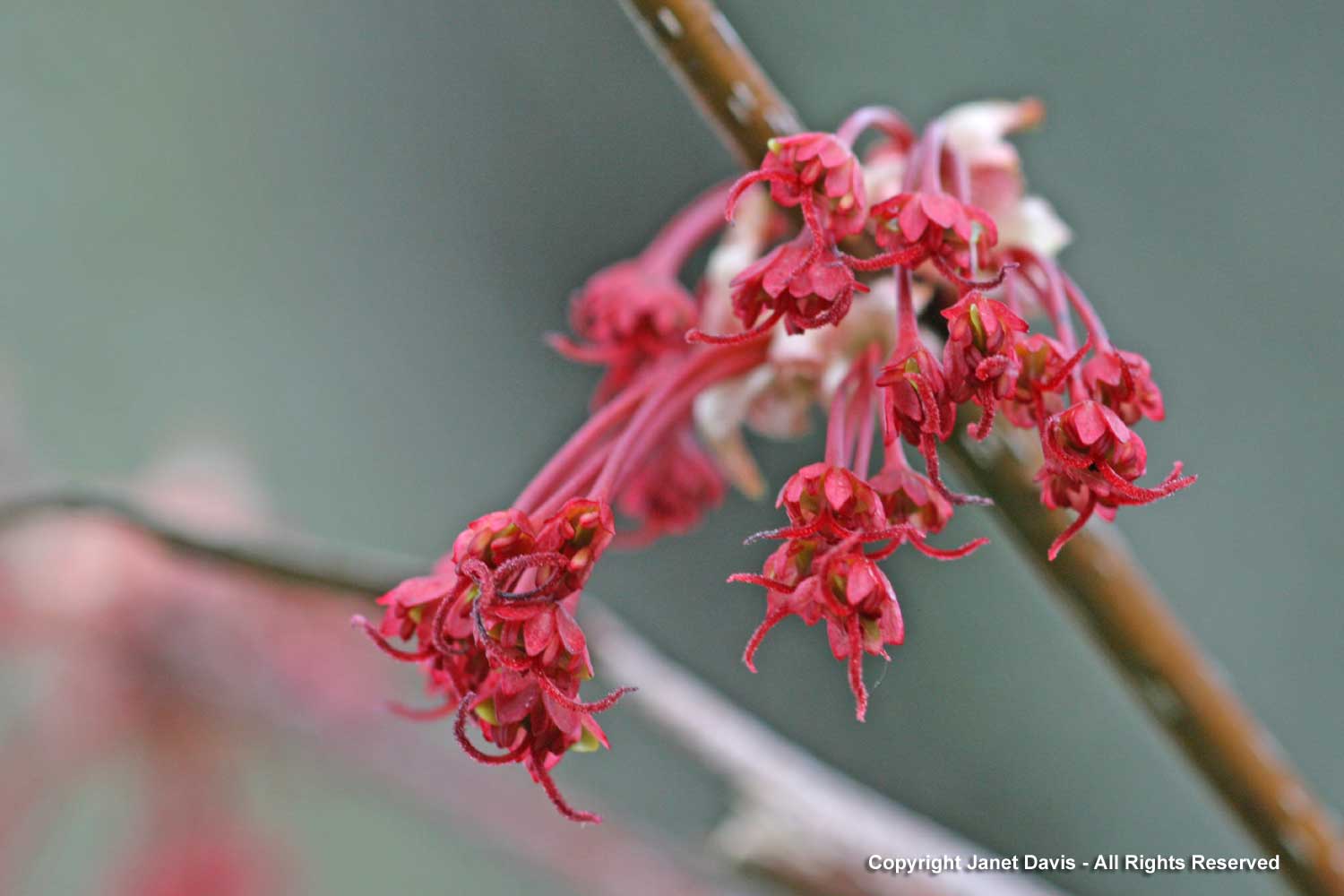
I found our spring-flying polyester or cellophane bee (Colletes inaequalis) foraging for nectar in red maple flowers on April 22, 2016. However, the length of the stamens and stigmas has suggested to botanists that some red maples may also be wind-pollinated, i.e. not entirely dependent on insects for reproduction.
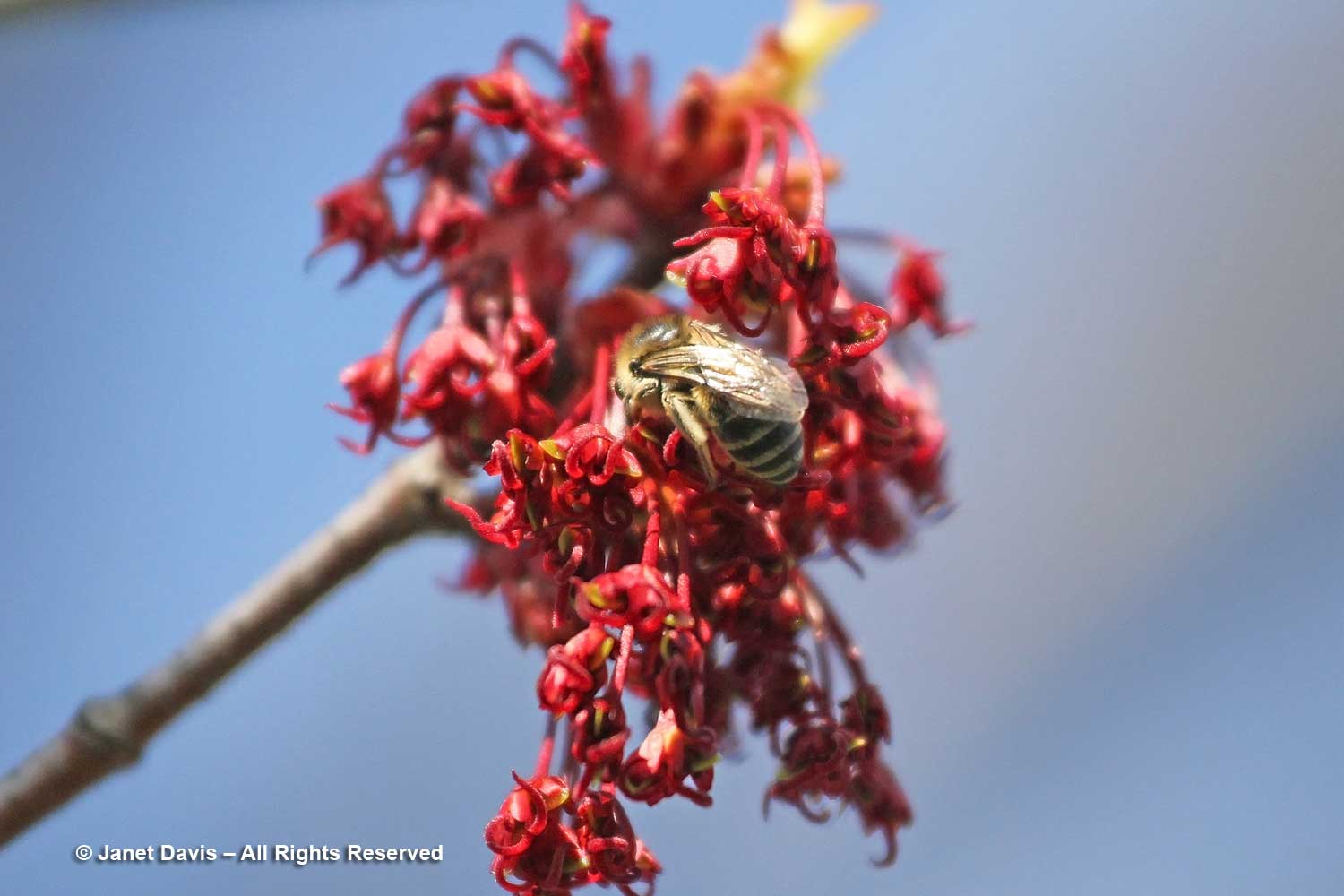
When I hike through the 4700-acre Torrance Barrens (my local ‘sacred place’ on Lake Muskoka) in early spring, it’s always a joy to see the red maples, their red flowers contrasting with the rugged, grey gneiss outcrops.
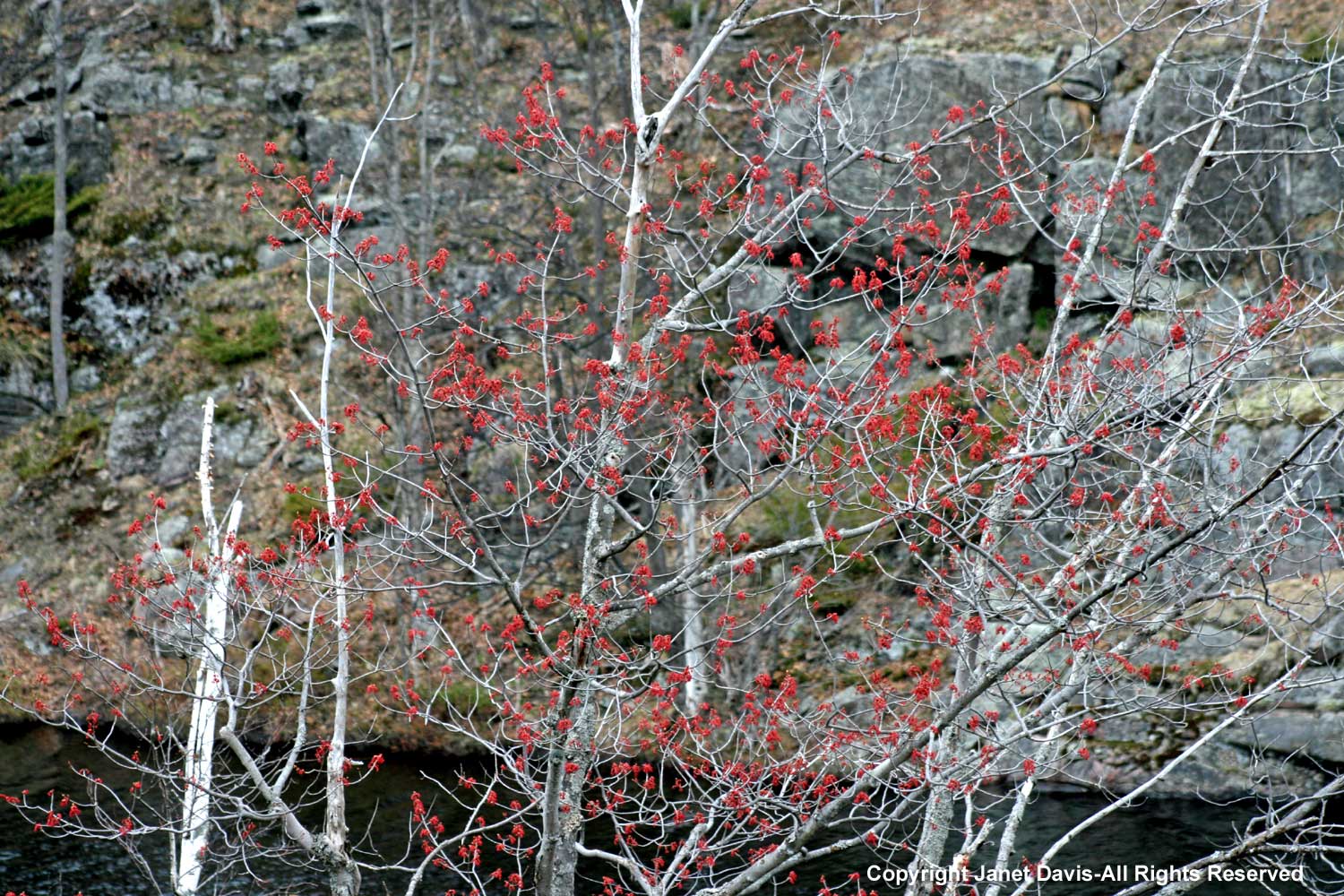
And at our own cottage property in Muskoka, I only have to look out the window to see one of our own wild red maples coming into bloom alongside its faithful companion, the white pine (Pinus strobus).
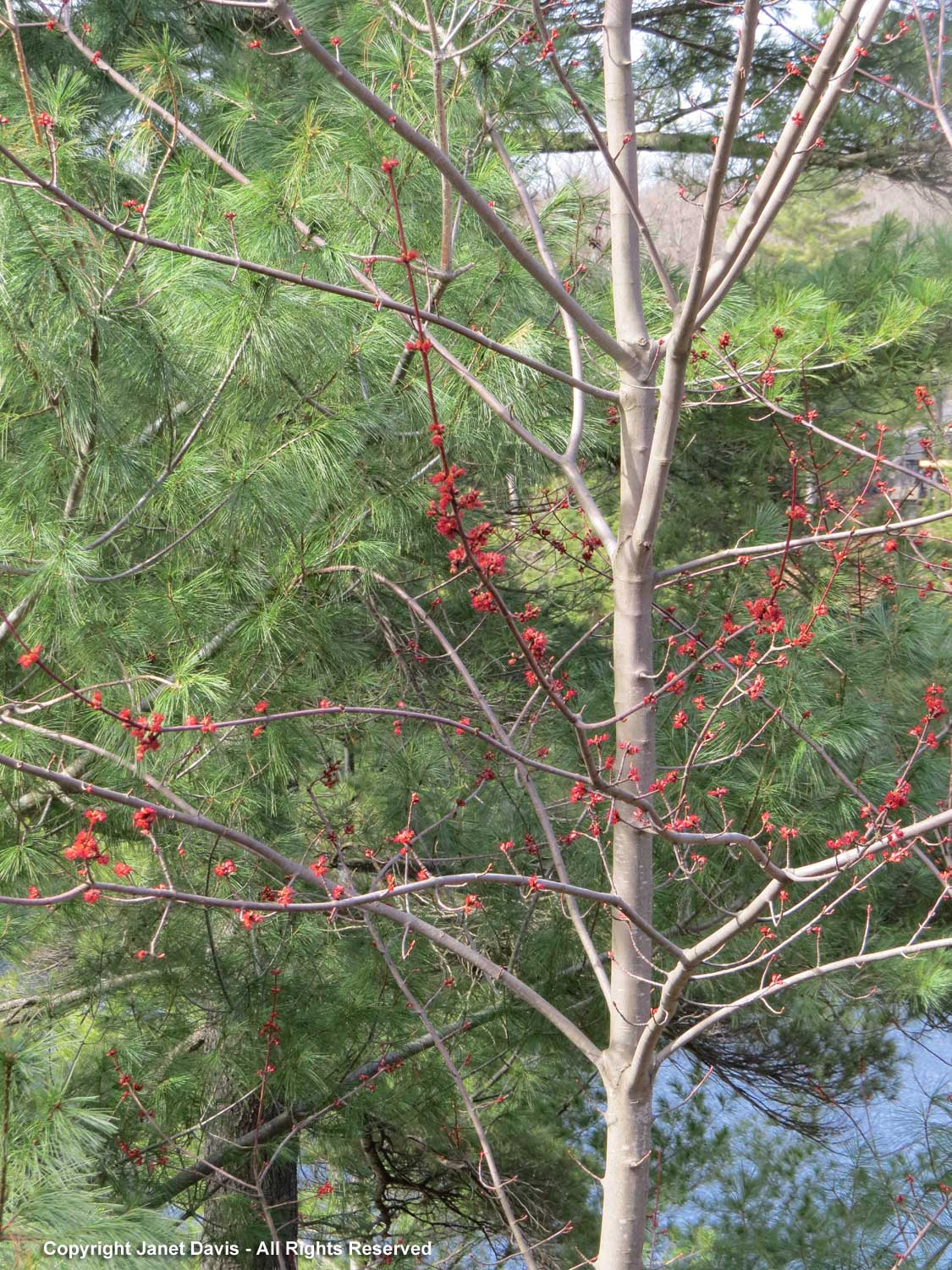
Red maple leaves are green in summer as they absorb sunlight to synthesize the sugars the trees need to survive. The species is well-known for being intolerant of alkaline soils, and leaves often appear “chlorotic” or yellowish in those conditions. The particular array of the leaves in the canopy is often reflected in its autumn colour, with more exposed parts of individual leaves turning red, while shaded portions turn yellow.
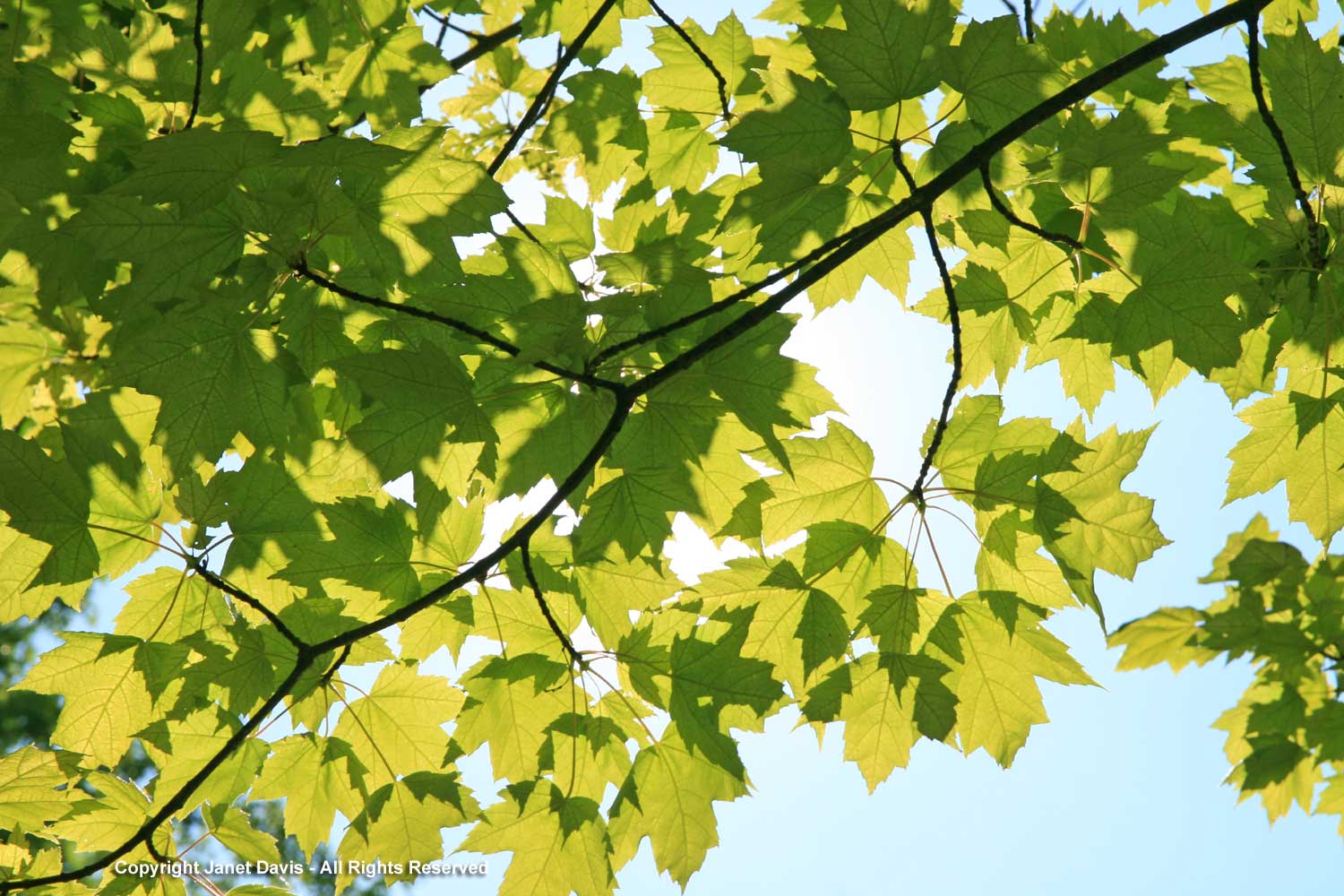
The winged fruit or seed key of all maples is called a ‘samara’.
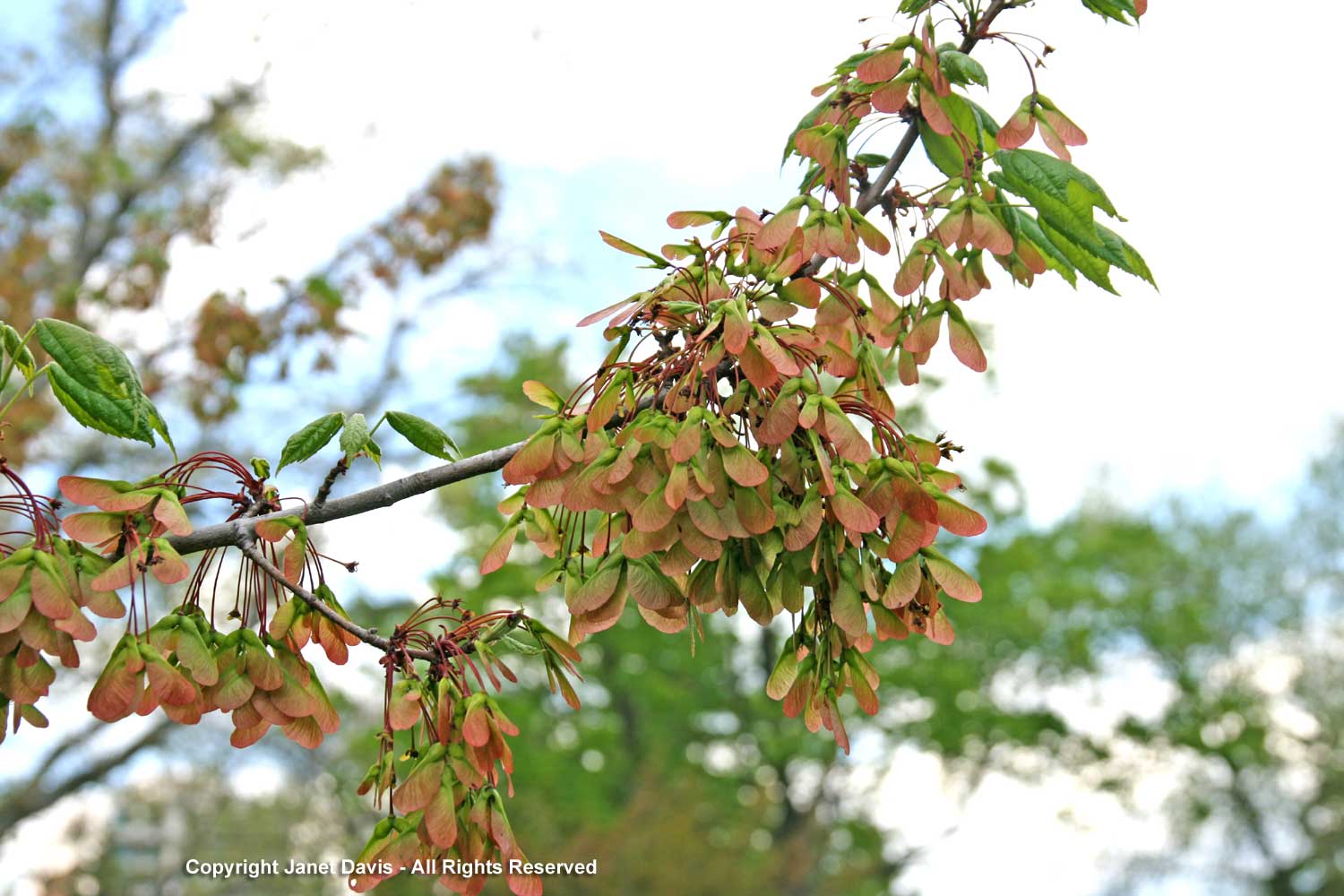
The red maple below in Section J in Mount Pleasant Cemetery is one of my favourite trees in autumn. You can see some of that mixed fall colouration here….
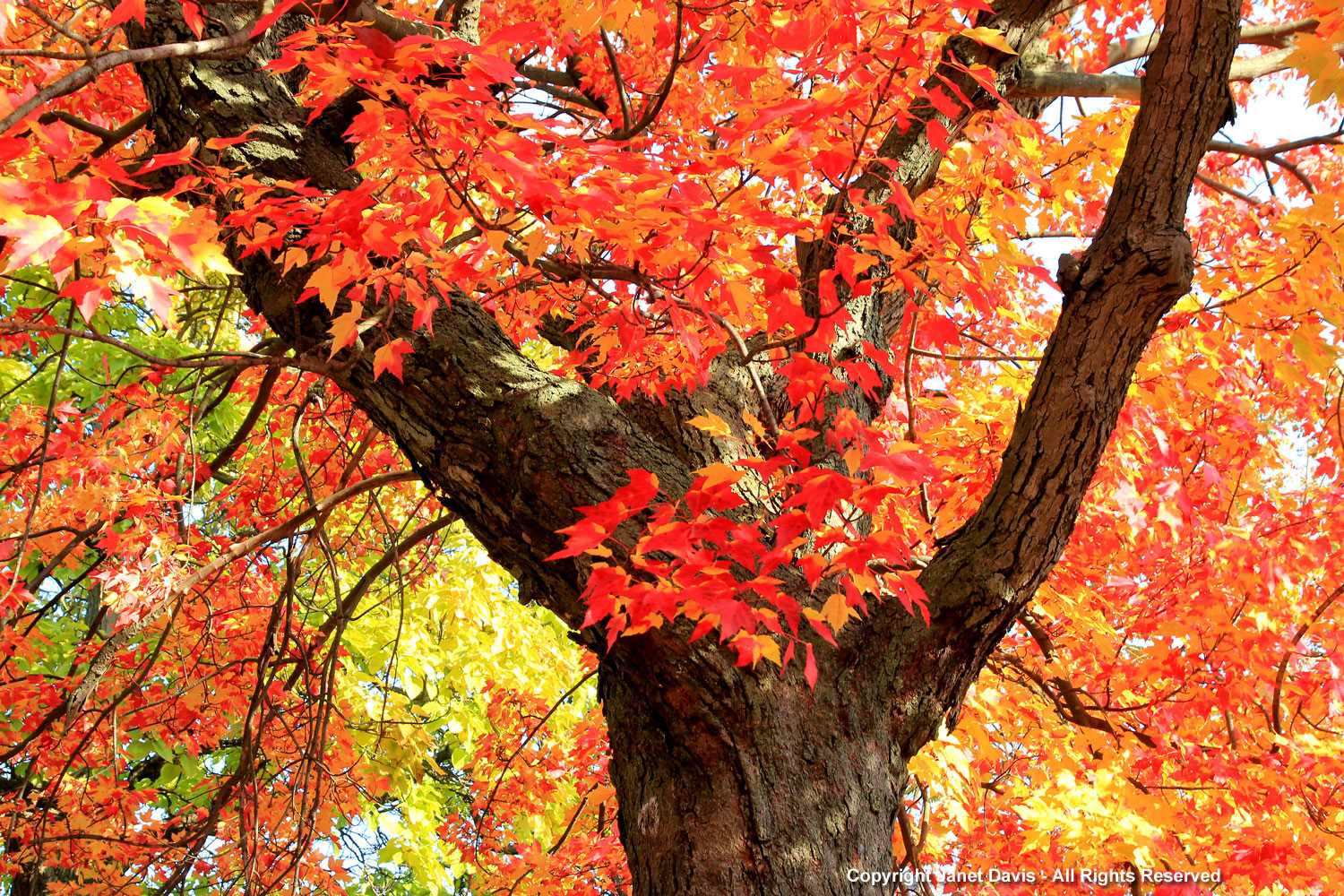
…. and also below in my arrangement of leaves I picked up below another tree. Notice how different these leaves are from the green ones above and others later in this blog. Red maple is known for having a wide diversity of leaf shapes.
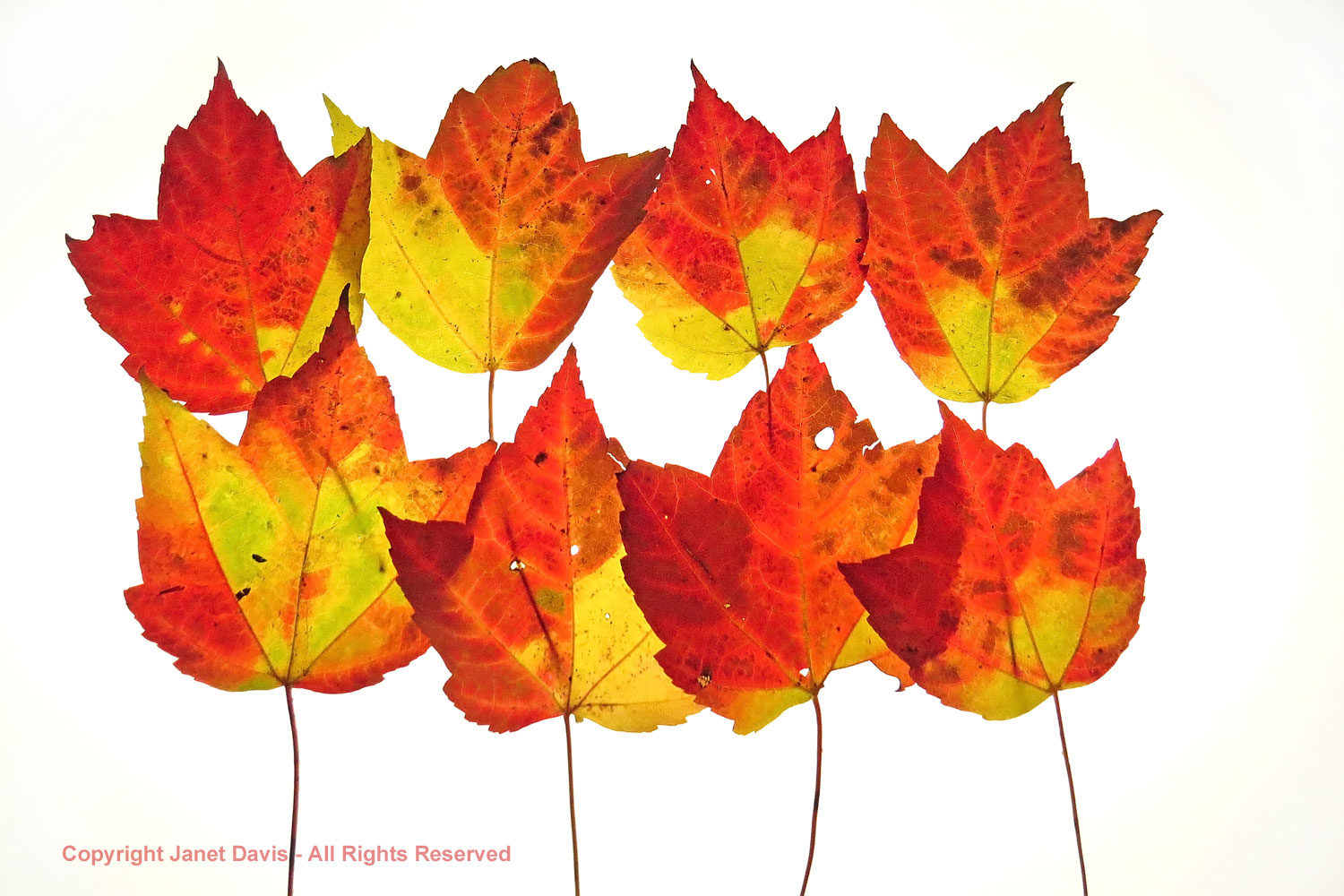
The tree has been a sentimental favourite of writers and naturalists. In his journal, Henry Thoreau wrote this on September 25, 1857: “The red maple has fairly begun to blush in some places by the river. I see one, by the canal behind Barrett’s mill, all aglow against the sun. These first trees that change are most interesting, since they are seen against others still freshly green — such brilliant red on green. I go half a mile out of my way to examine such a red banner.”
But some red maple cultivars have been selected specifically for their biochemistry in producing a reliable show of red fall colour, like the tree below (possibly Red Sunset) which has carpeted the ground in the cemetery after an overnight freeze.
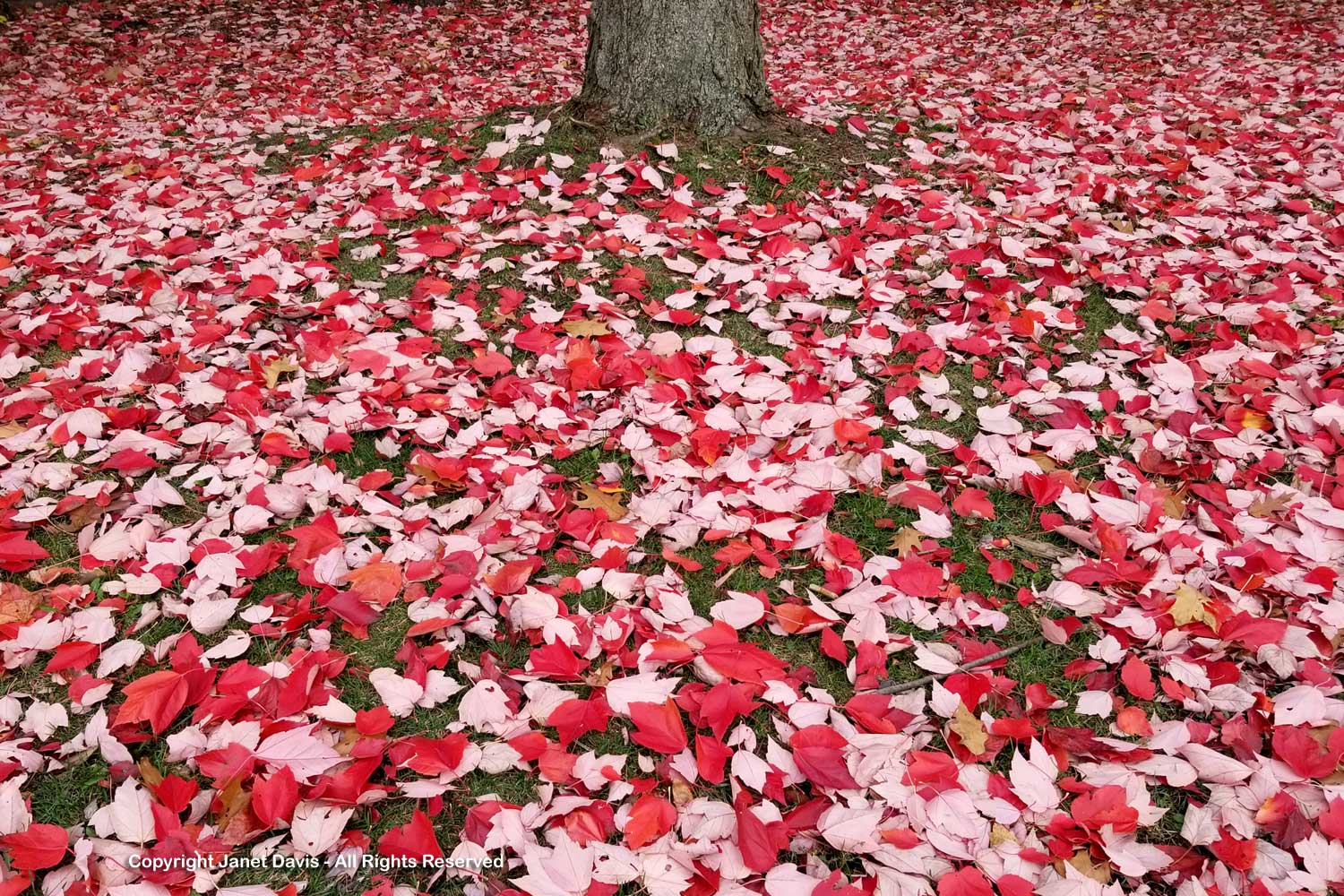
Contrast that uniform colour with the leaves of the straight species, below.
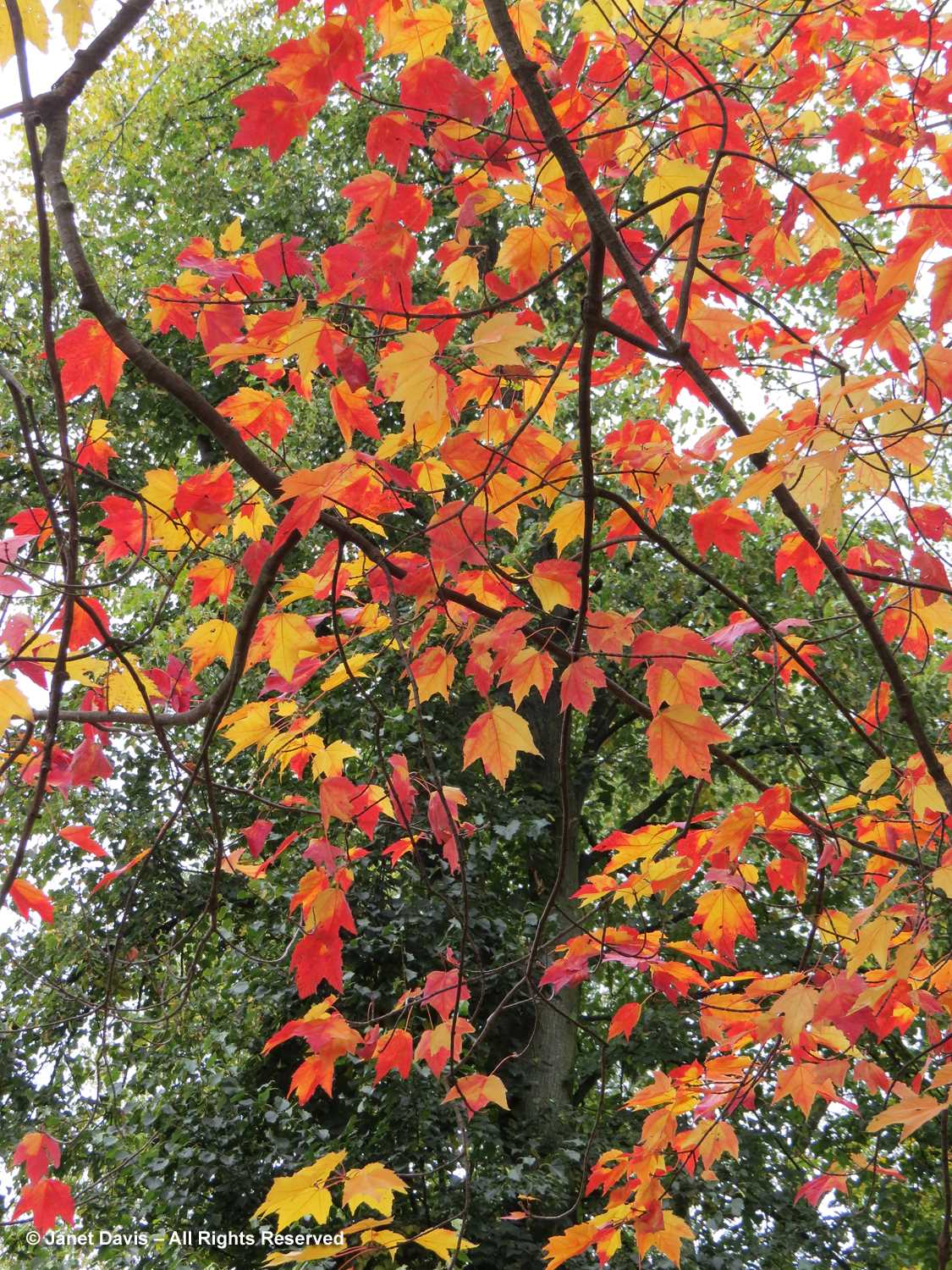
In fact, there are so many mature red maples in the cemetery that I have photographed specimens featuring all-gold, all-yellow and all-red fall leaves, below. Note the serrated margins of the leaves – an easy way to tell red maple from sugar maple, which has smooth margins.
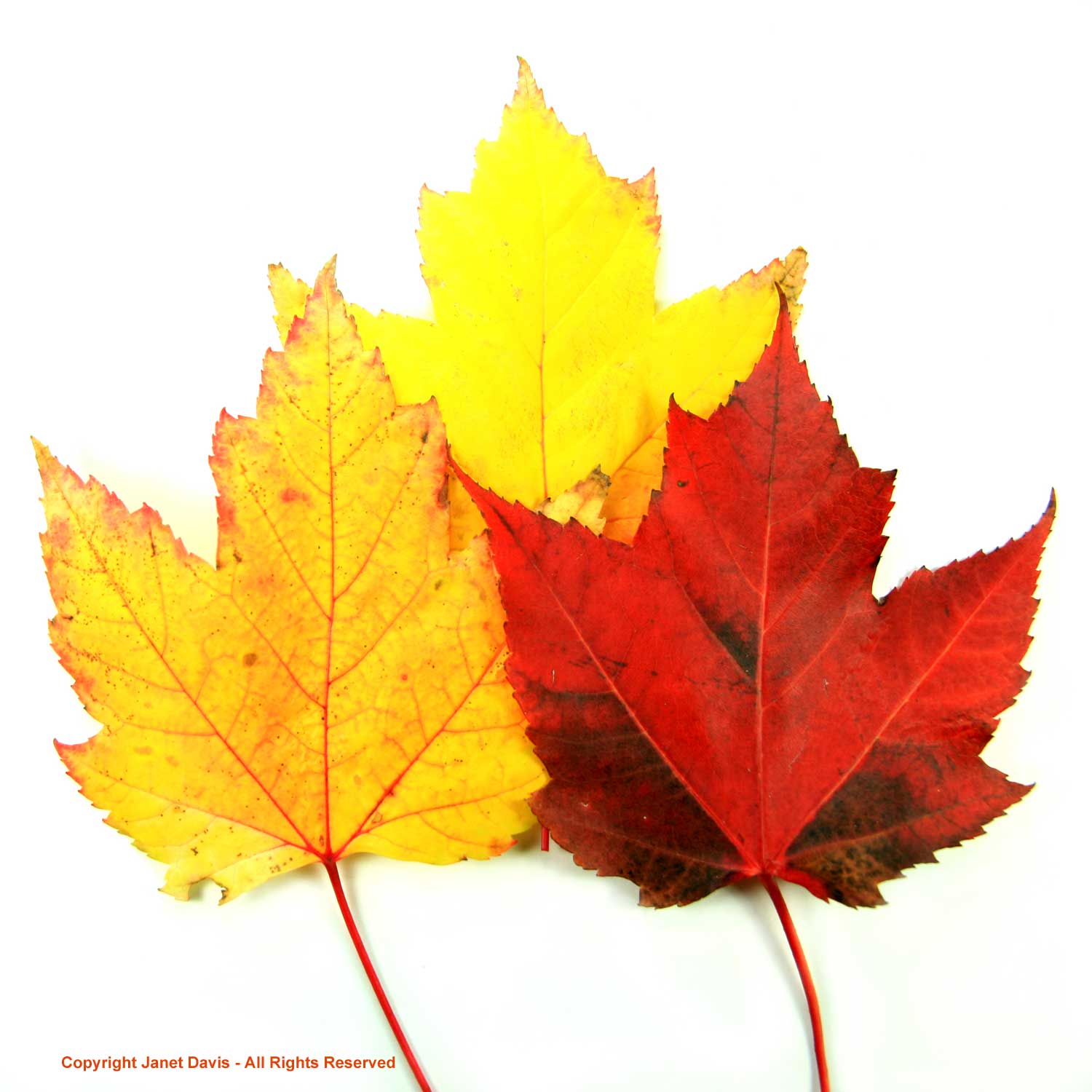
Here is a side-by-side comparison of two large red maples in autumn.
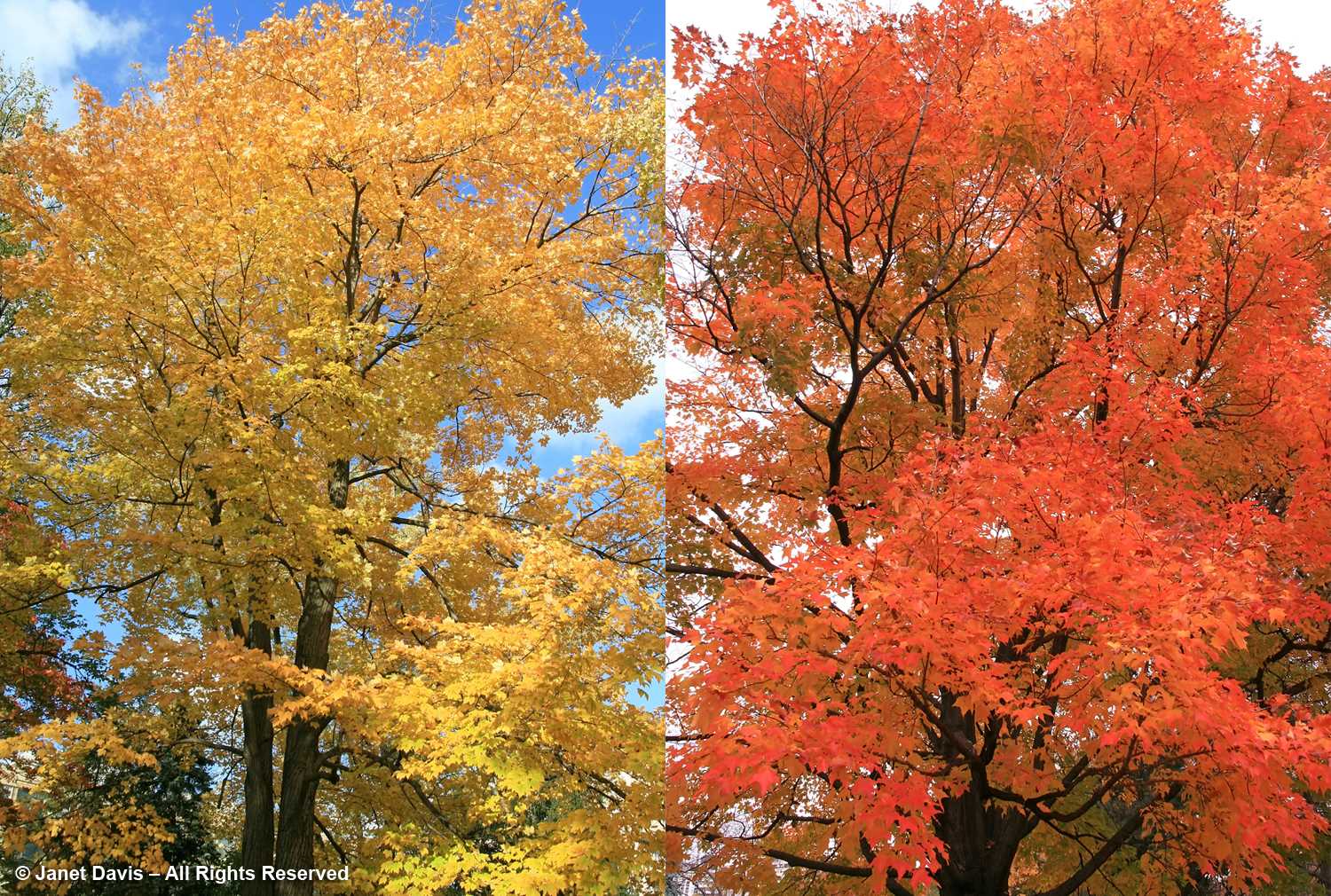
At our own cottage on Lake Muskoka, I photographed young red maples at the shore exhibiting this same colour difference. Things like this are interesting to me because there is a general theory that (red) anthocyanin secondary pigments act as autumn sunscreens for certain tree species, allowing them to continue to photosynthesize well into the fall after green chlorophyll breaks down. Despite my efforts, I have not been able to ascertain why there is such startlingly different pigment biochemistry in this species, particularly when grown on the same plot of land where pH is not therefore a factor. My own theory, backed up by a few speculative references, is that it has to do with sex of the tree: red leaves on males, yellow leaves on females. (Oh, by the way, voracious local beavers cut down these scrubby little red maples. Beavers don’t care about biochemistry, only housing.)
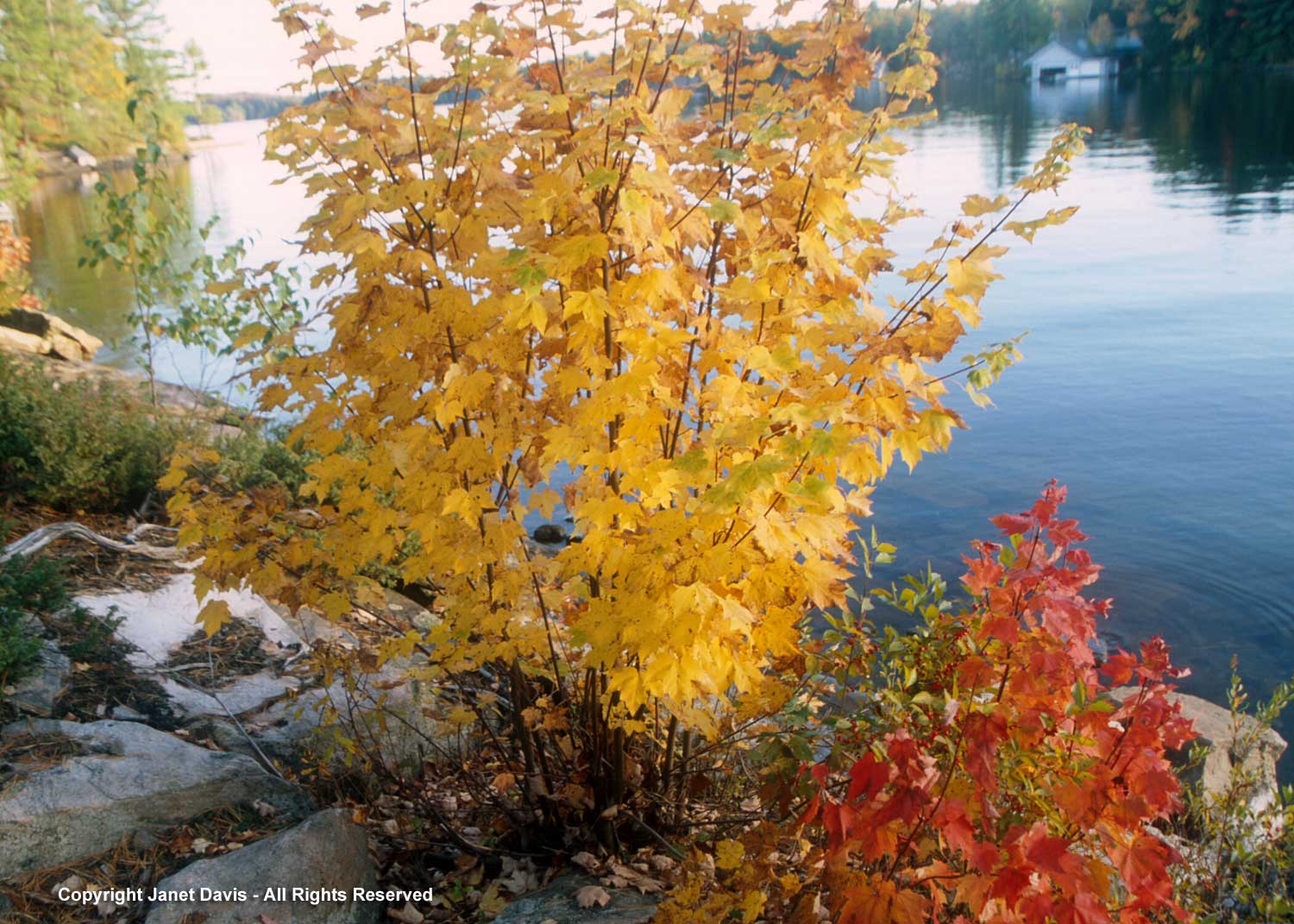
Speaking of the cottage, this is our best red maple in autumn, as seen from indoors. (And that’s my homemade botanical lampshade.)
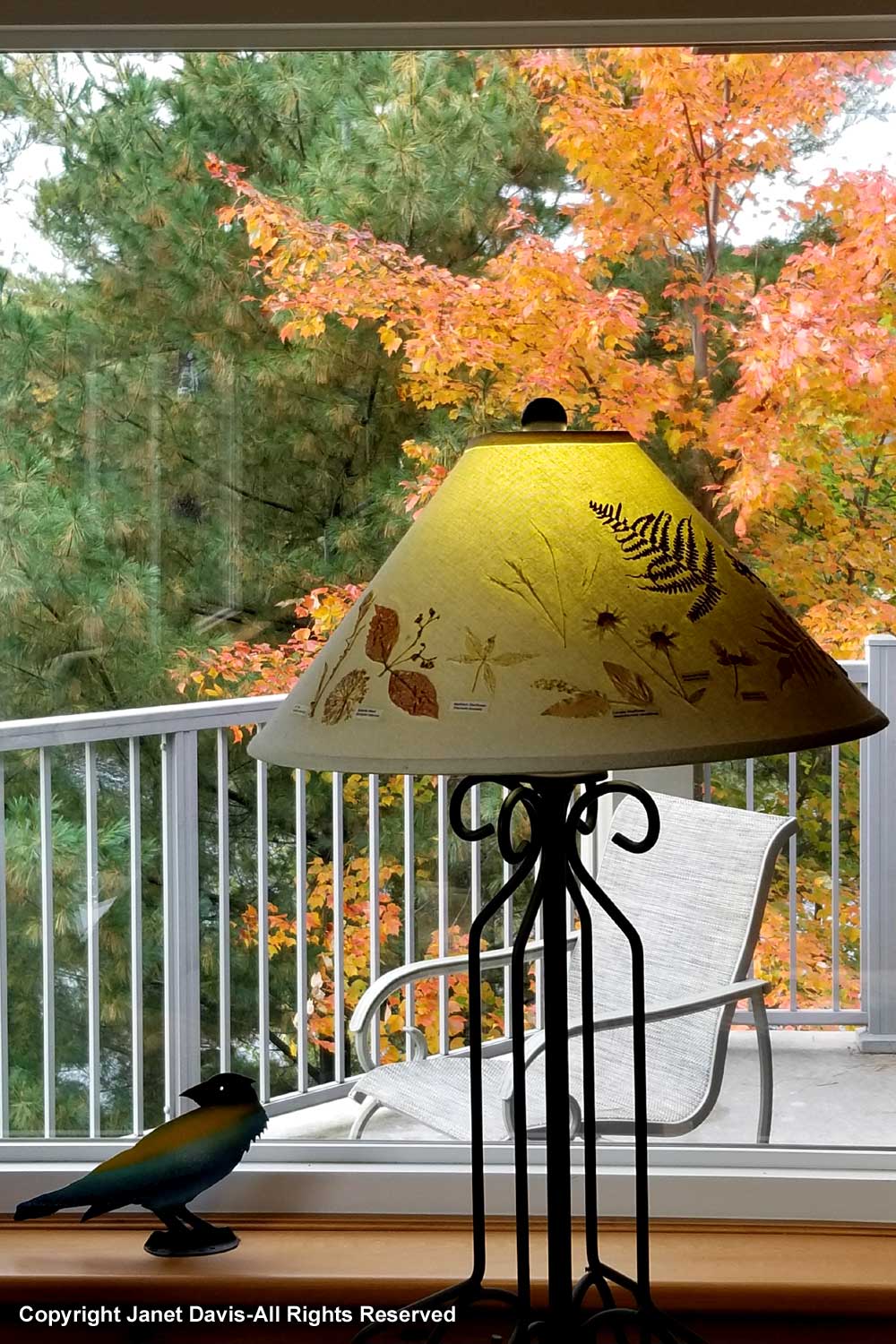
It doesn’t surprise me that Acer rubrum is considered to be the ‘most abundant and widespread deciduous tree species’ in eastern North America. If you hike in our local Muskoka, Ontario woods in May, the little seedlings appear everywhere, including with spring ephemeral wildflowers such as trout lily or dogs-tooth violet (Erythronium americanum), below. This photo is also a good illustration of the “opposite branching” habit of all maples.
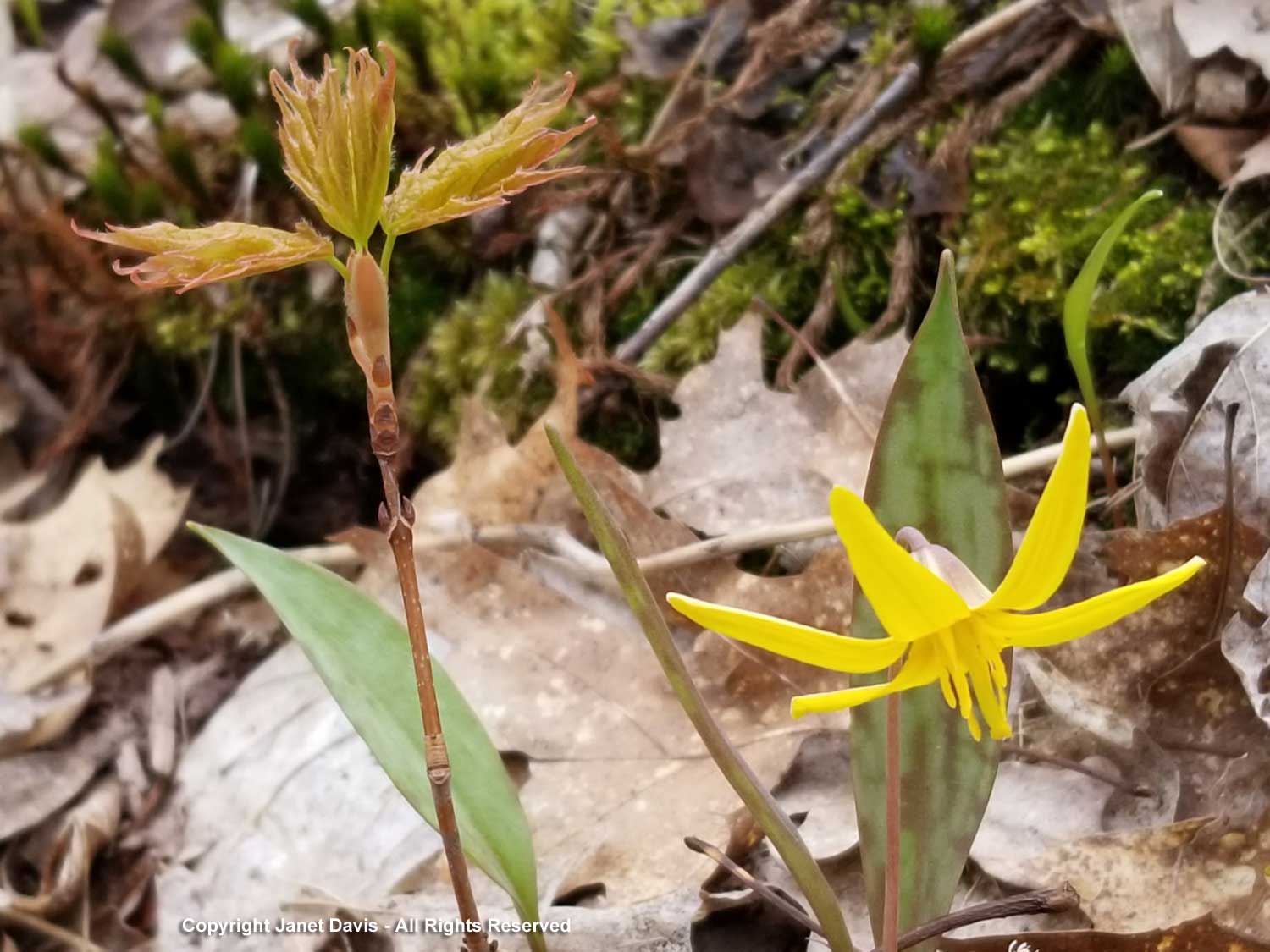
Here it is amidst wild strawberries (Fragaria virginiana) and other native plants.
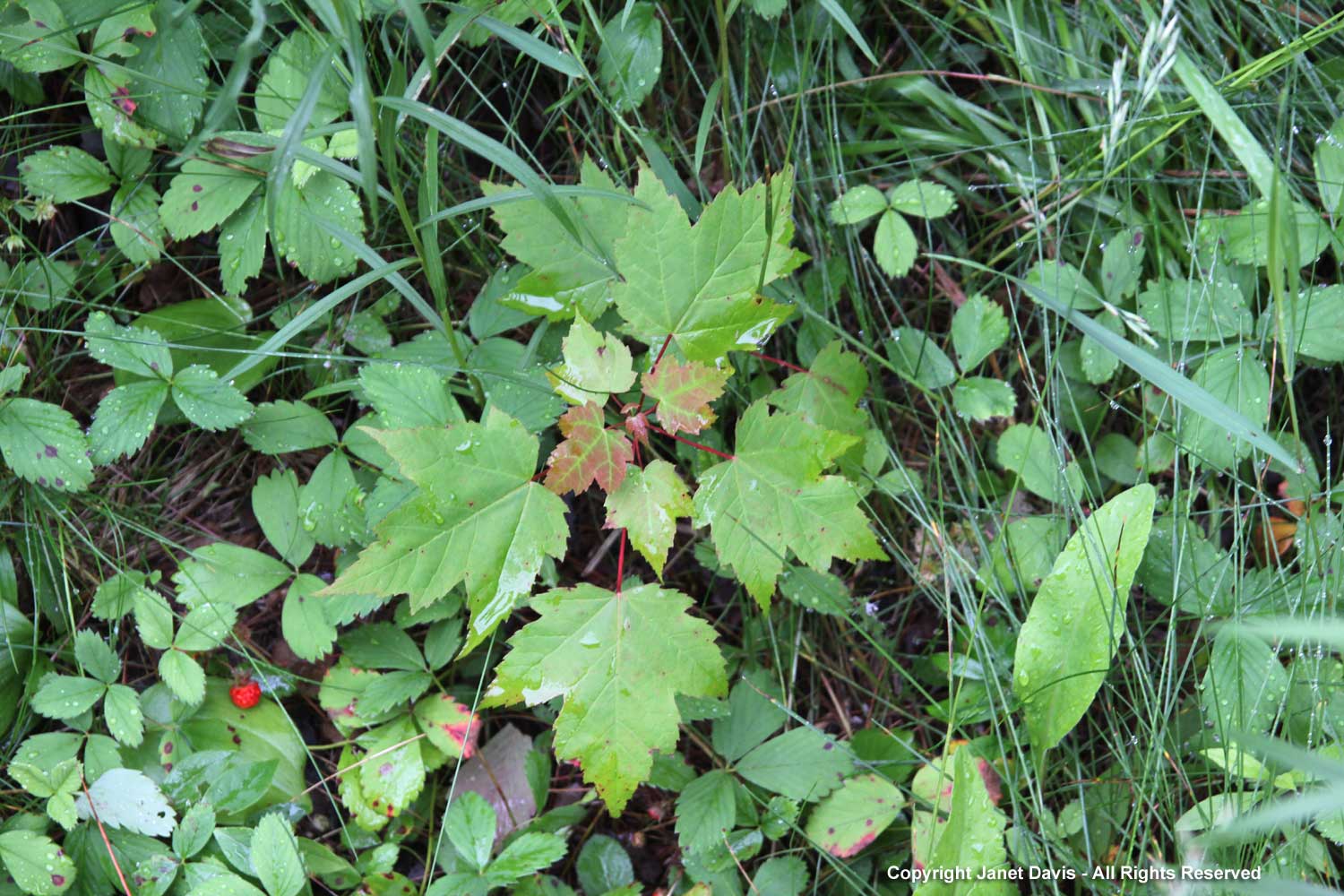
In the same forest, on the same day, we find a sugar maple (Acer saccharum) seedling. Note the smooth margins and the opposite branching.
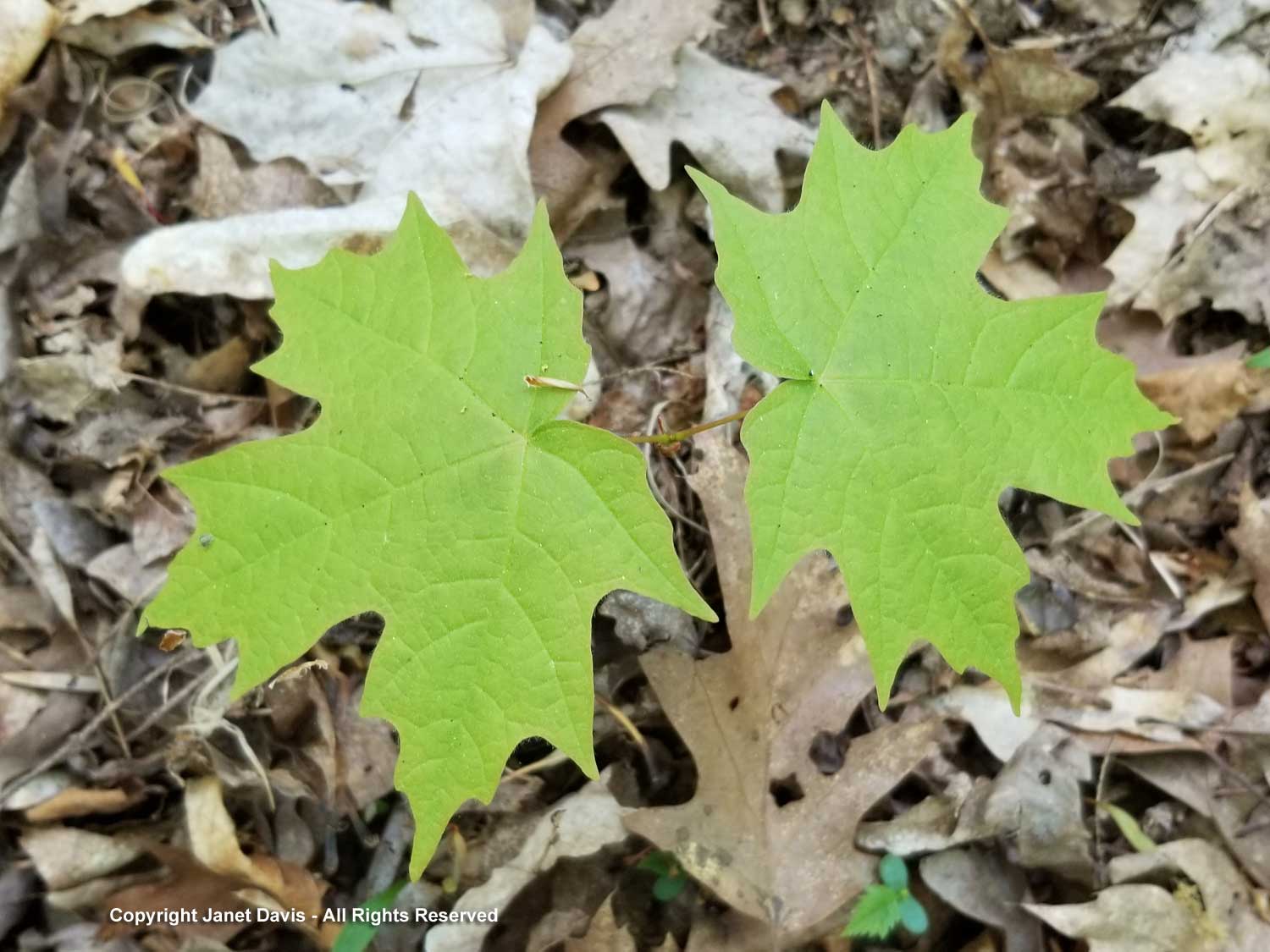
Sugar maple’s flowers are unlike those of red maple; they are ‘perfect’, meaning male and female flowers are on the same tree. Here you see mostly male flowers with their dangling anthers, but also a few female flowers with the curved stigmas. Sugar maple also flowers later than red maple.
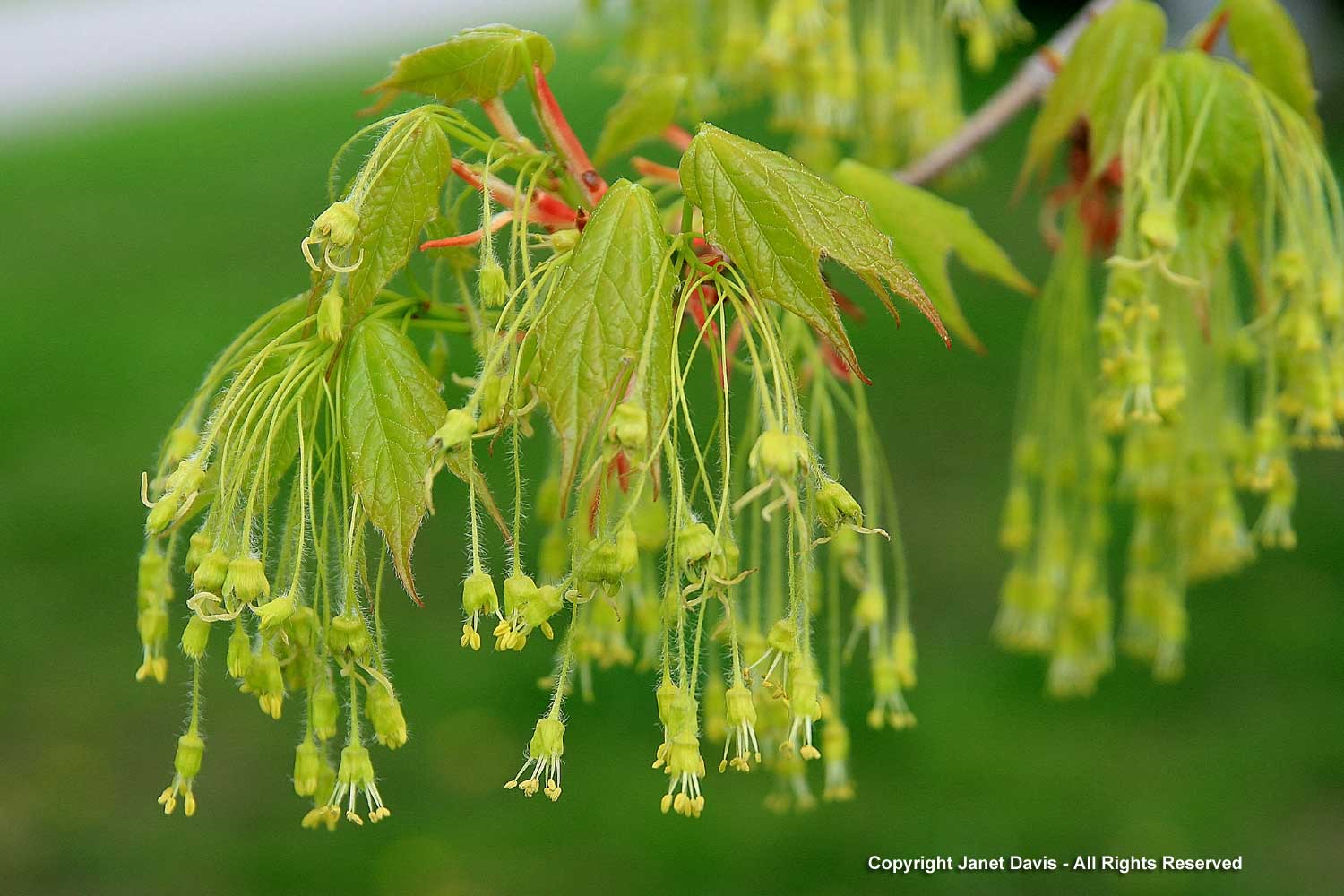
In autumn, sugar maple trees colour early, often with salmon-scarlet leaves covering an entire tree but sometimes with many hues at once, as you see below in my photo from Mount Pleasant Cemetery.
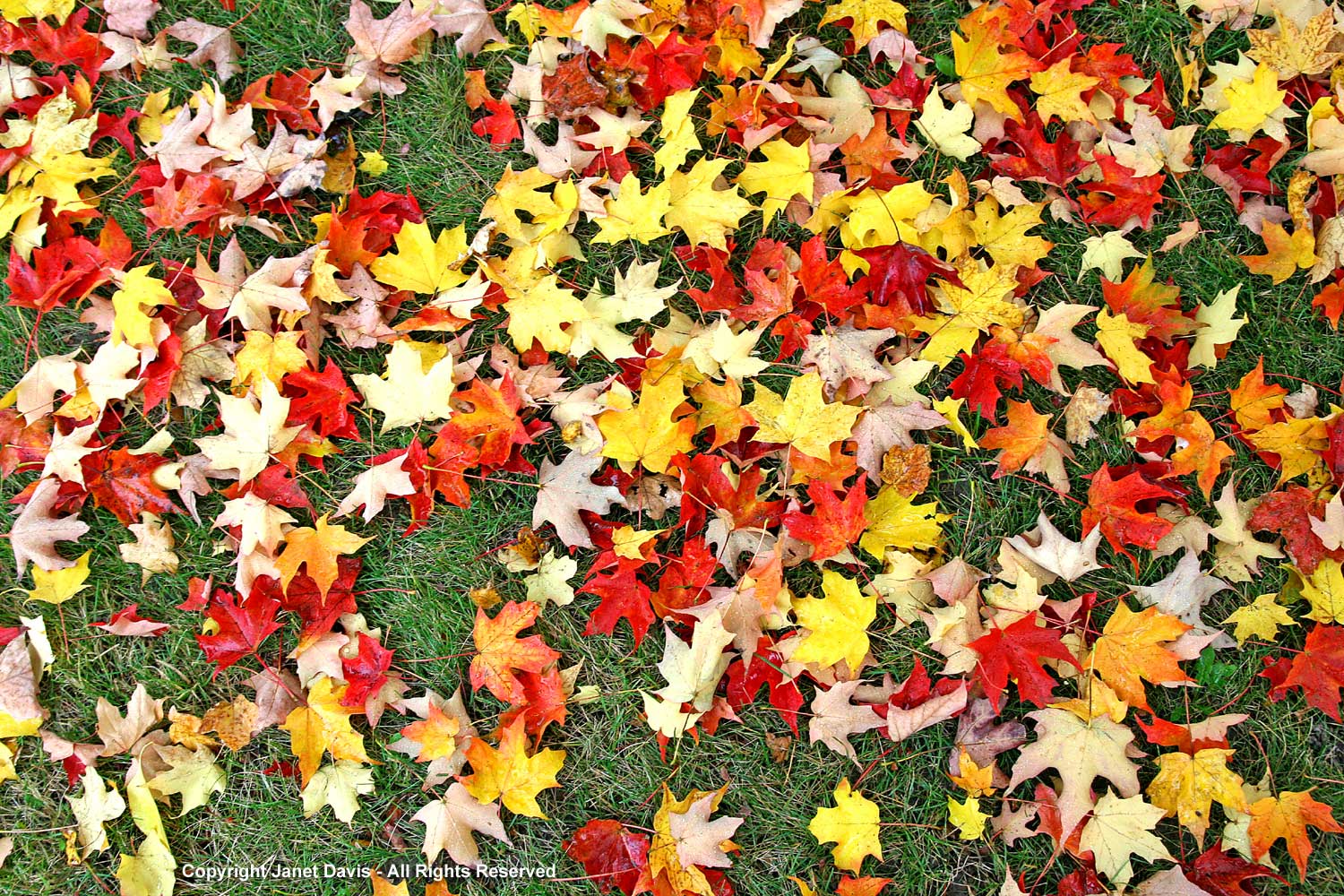
Between them, red maple and sugar maple produce the most vibrant autumn colours in northeastern forests. One year, a relative with a small plane took me up above the forests of Muskoka. Looking down, this is what I saw: a spectacular combination of red maple and sugar maple, with birches and aspens offering yellow contrasts. Oaks would change colour later.
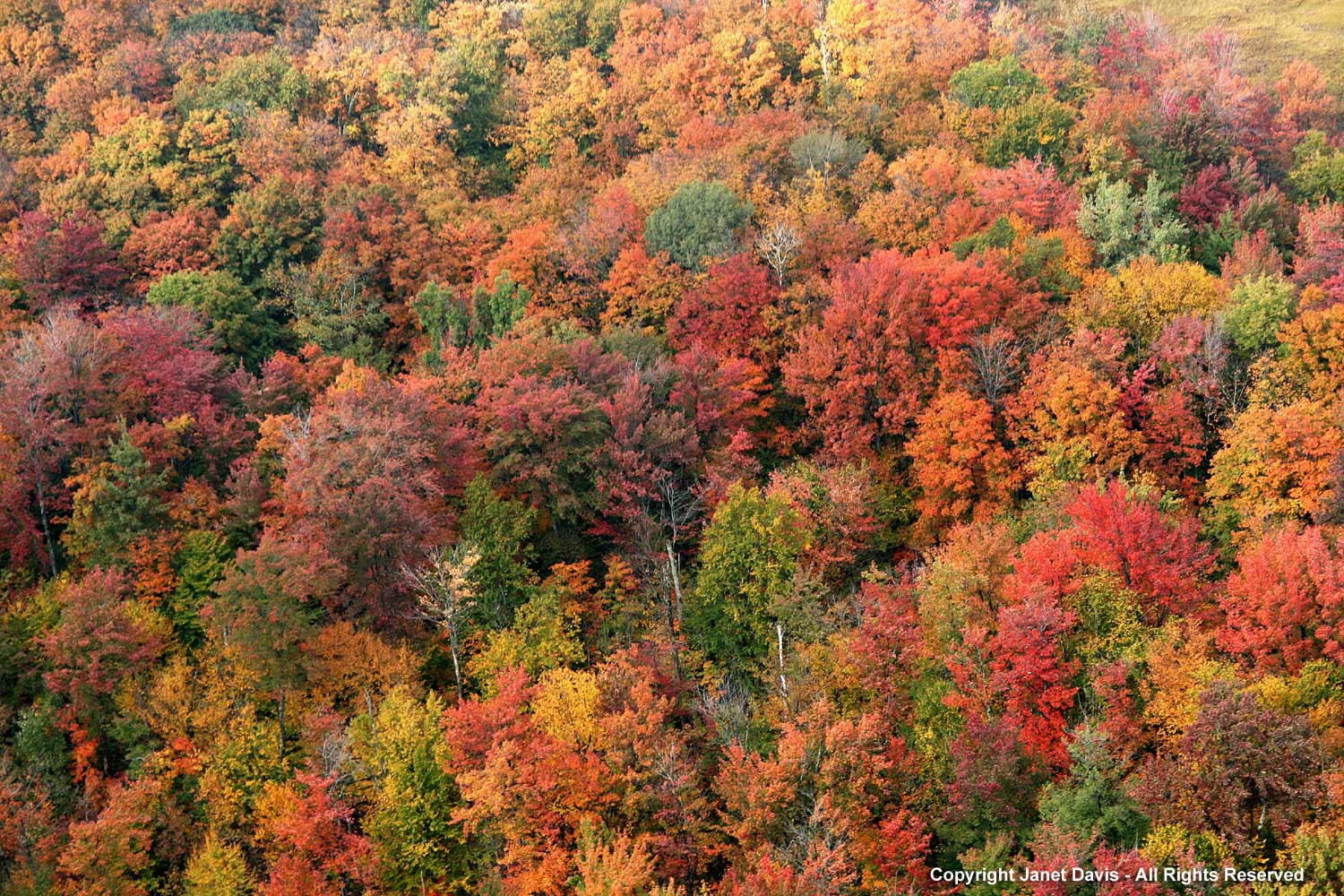
In the ravine in the park at the end of our street in Toronto, the population of native sugar maples, in fall colour below, struggles to survive against the incursion of exotic, invasive Norway maple (Acer platanoides), at right. That European maple takes on yellow fall colour later, along with its normal coal tar spot disease which is visible on some of the leaves.
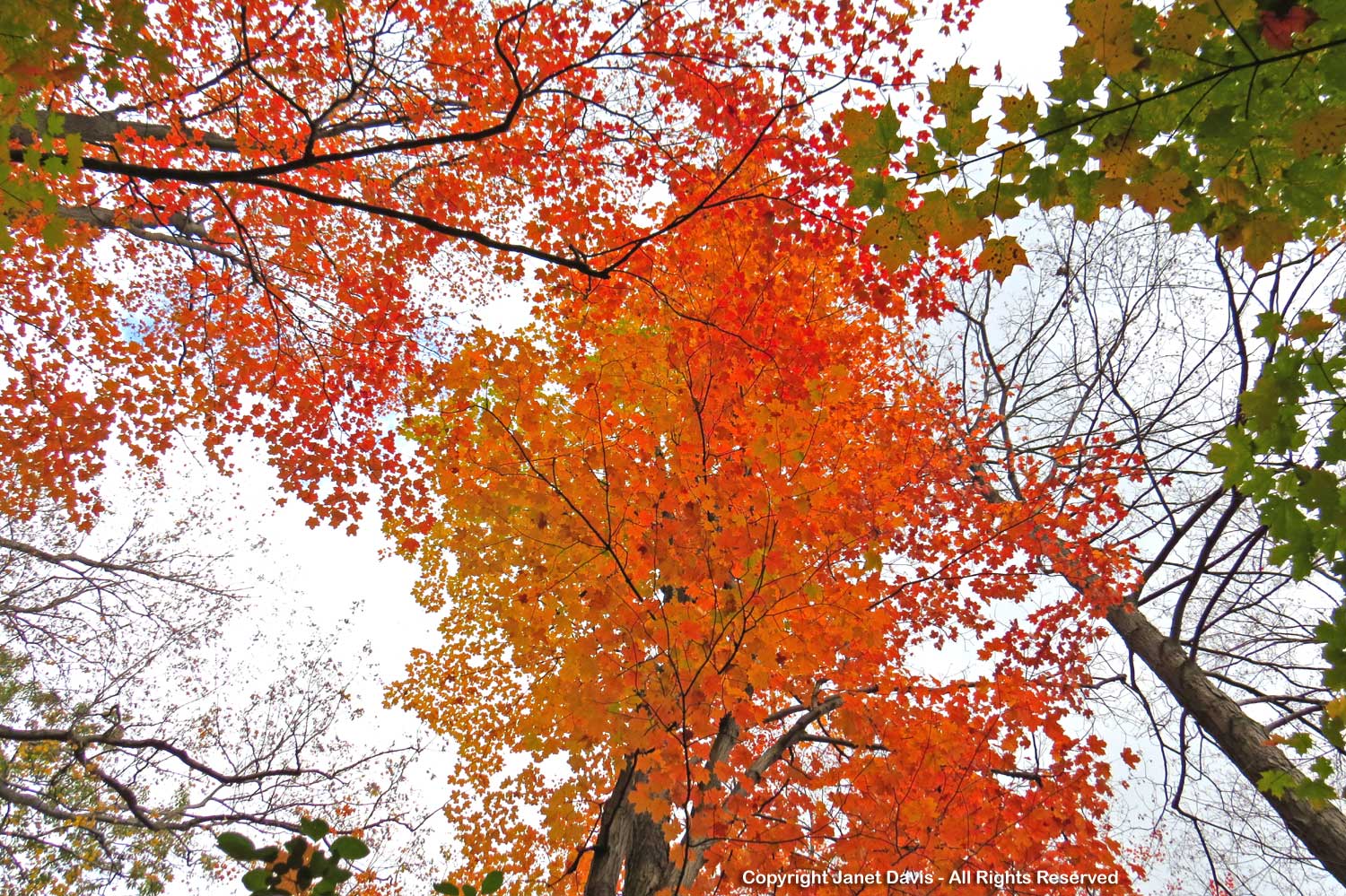
On the boulevard in front of the pollinator garden at our house in Toronto, we have a columnar tree that I ordered as “red maple” with its presumably spectacular fall colour, to go along with the ginkgo at right. Imagine my disappointment when those red leaves turned out to be dishwater yellow. Across the street is a Freeman maple – more on that one below.
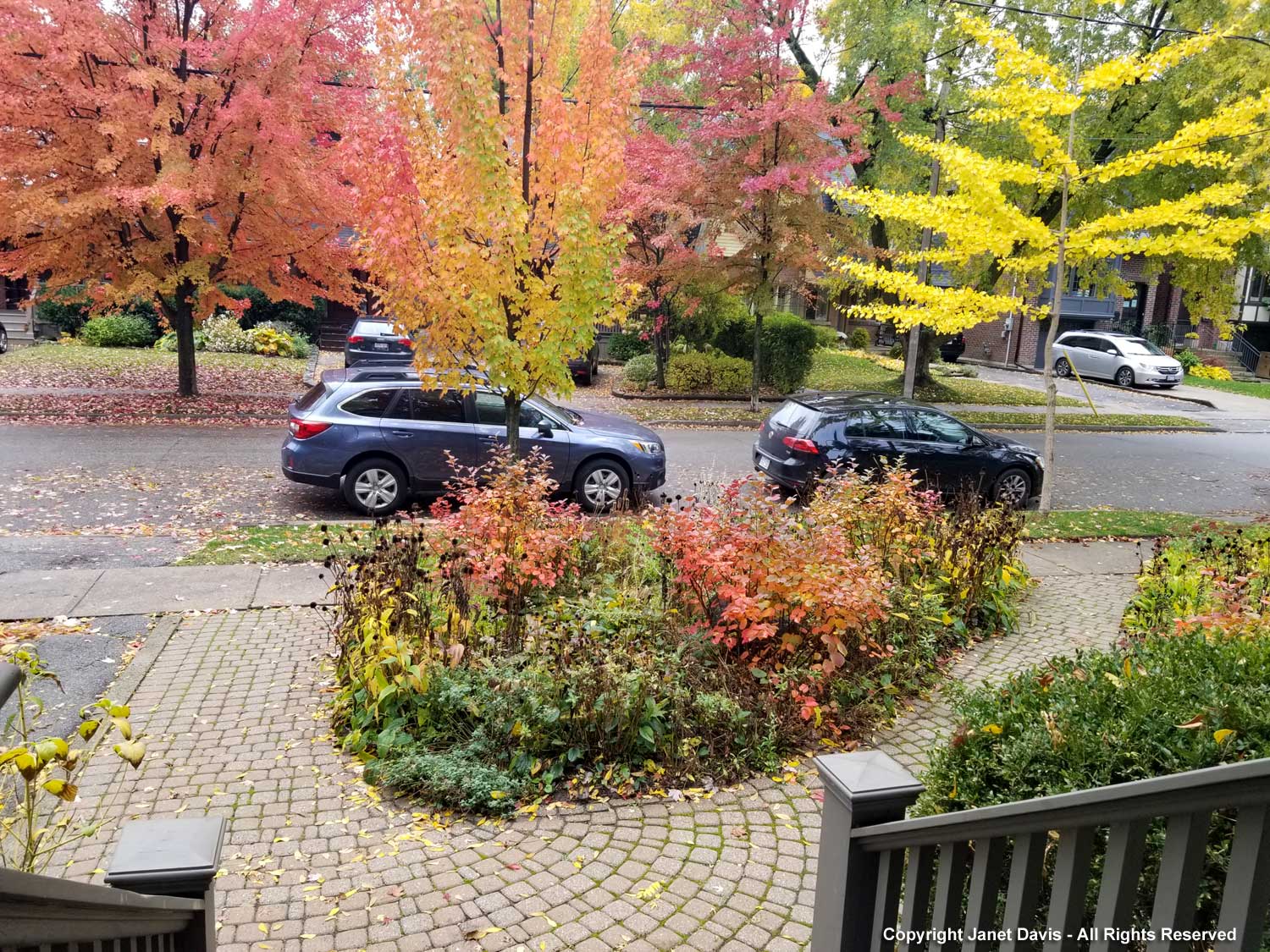
The ginkgo and red maple on my boulevard were replacements for the 100-year-old silver maple (Acer saccharinum) tree that had dominated our view and given us shade for all the years we’d lived in our home… until 2007. That’s when the city’s water department came through the neighbourhood upgrading the plumbing. I looked down from my 2nd story windows at the workers having their lunch one day.
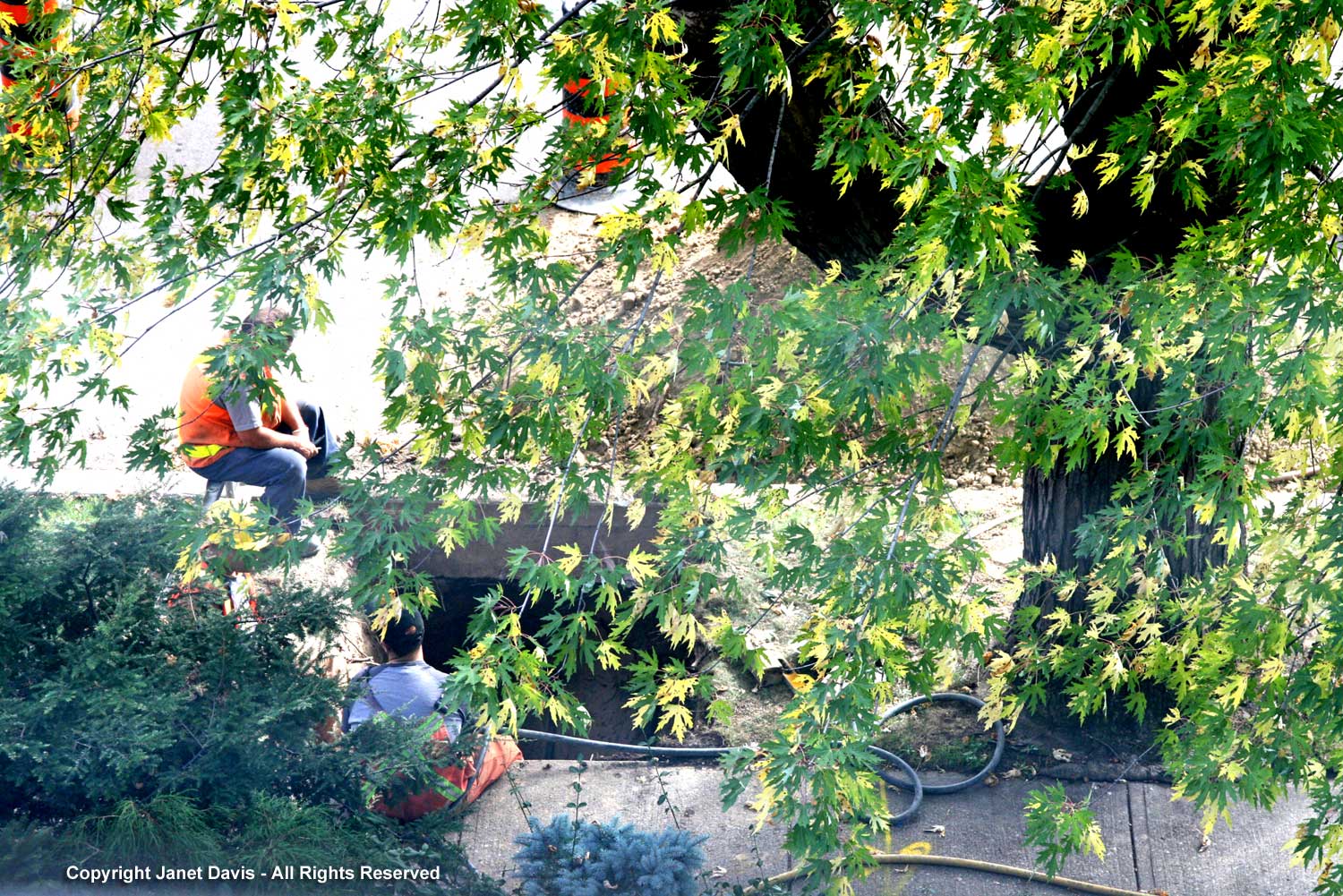
After they went home, I looked at the excavation on the boulevard. How could any tree survive the kind of root cutting that this would involve?

Sadly, it did not survive (though silver maples are considered short-lived compared to other native trees.) In 2011, it received the dreaded orange dot that designated it for removal. But note the weeping area in the bark; this is called ‘bacterial wetwood’ and is caused by bacterial infection of a wound. It happens to many trees and does not bode well for them.
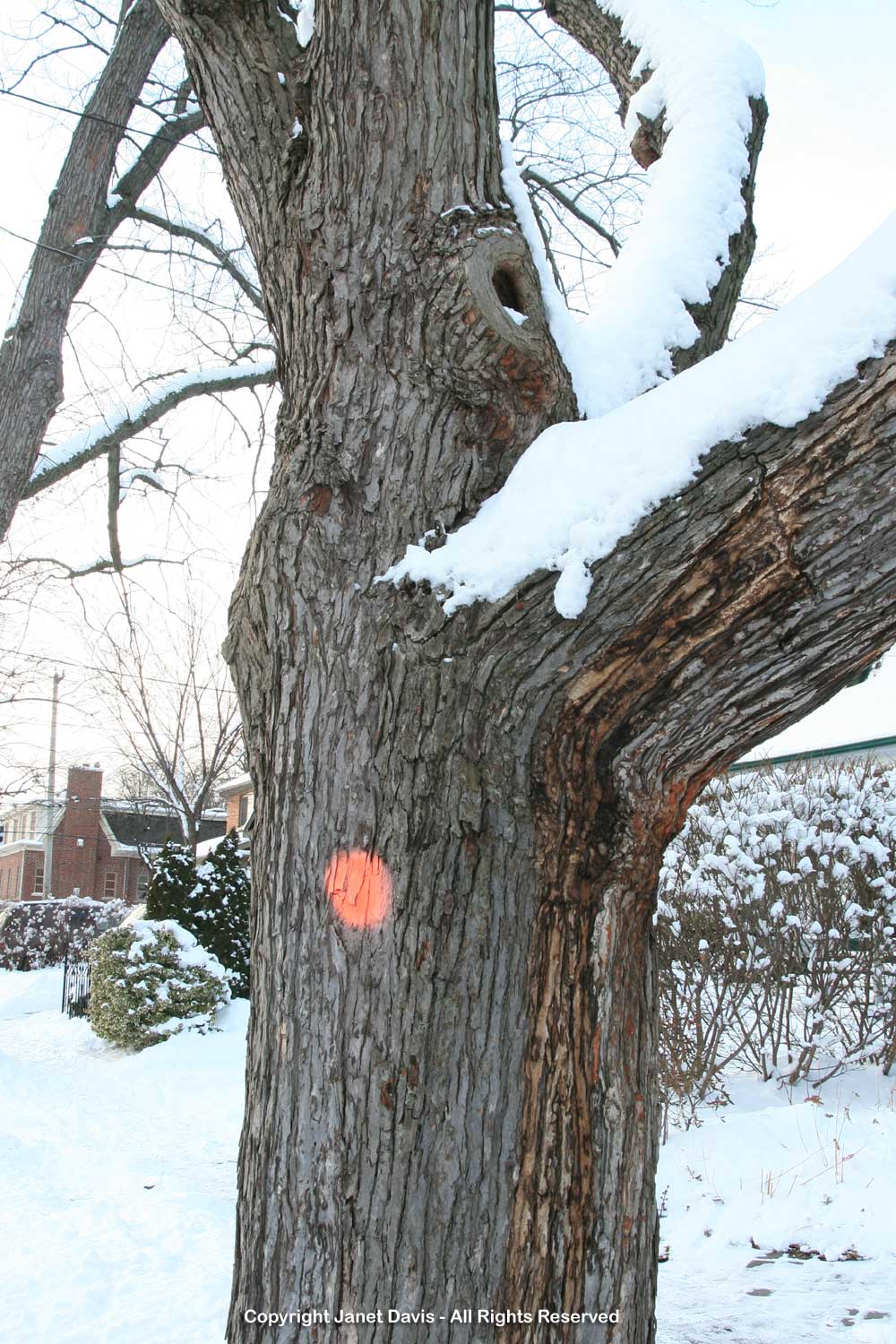
Silver maple trees usually bear male and female flowers separately, but can also have ‘perfect’ flowers containing both male and female organs, like the one below where you can clearly see the male anthers and female stigmas.
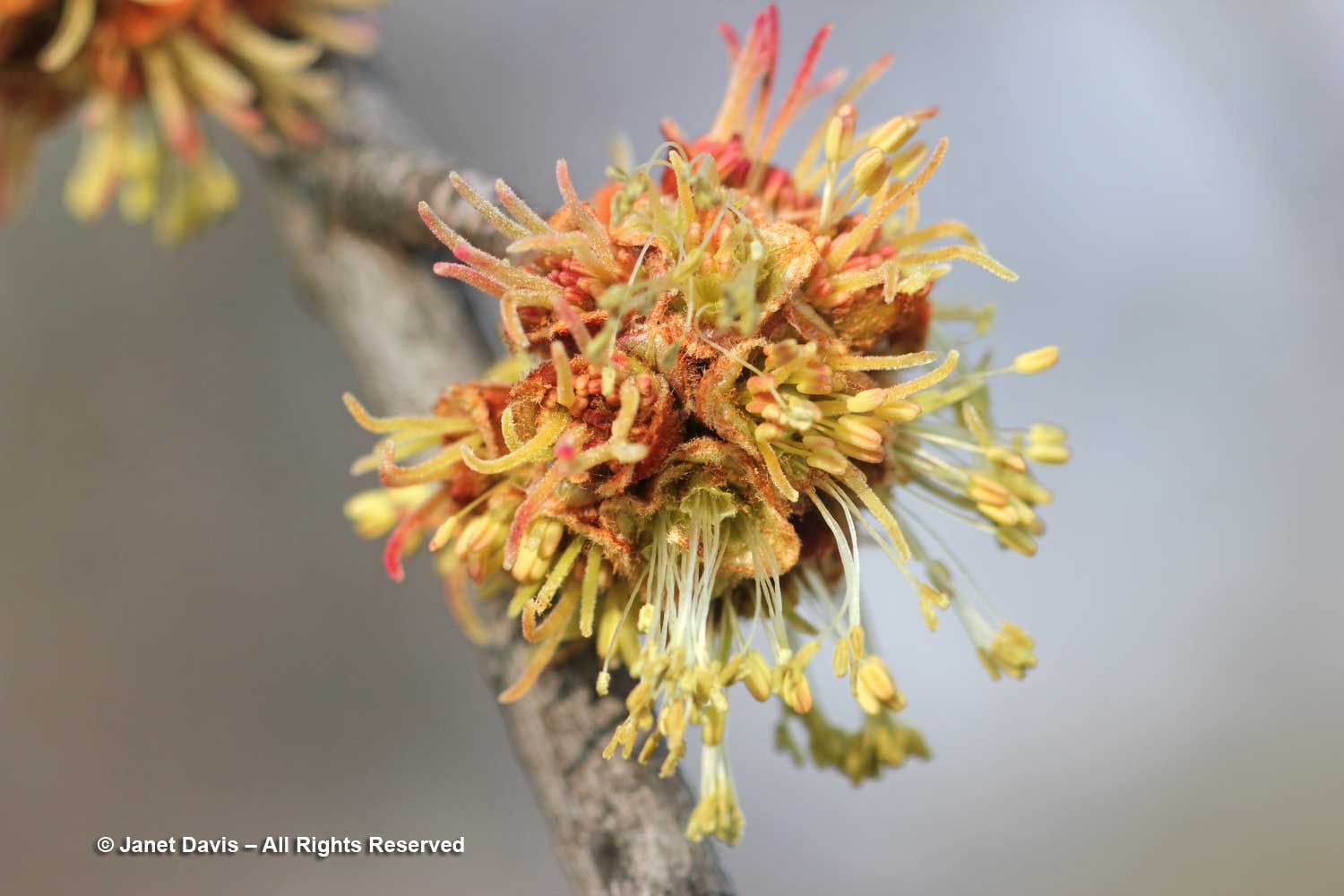
Healthy silver maples (they can be notoriously weak-wooded) reach a considerable size at maturity, up to 90 feet (27 m) or more. Native to a wide swath of the Northeast and Central Plains from New Brunswick and Maine to Minnesota and eastern Oklahoma and Texas, they are generally bottomland trees, preferring moist soil. They derive their common name from the silvery underside of the leaves. In autumn, the foliage turns pale yellow.
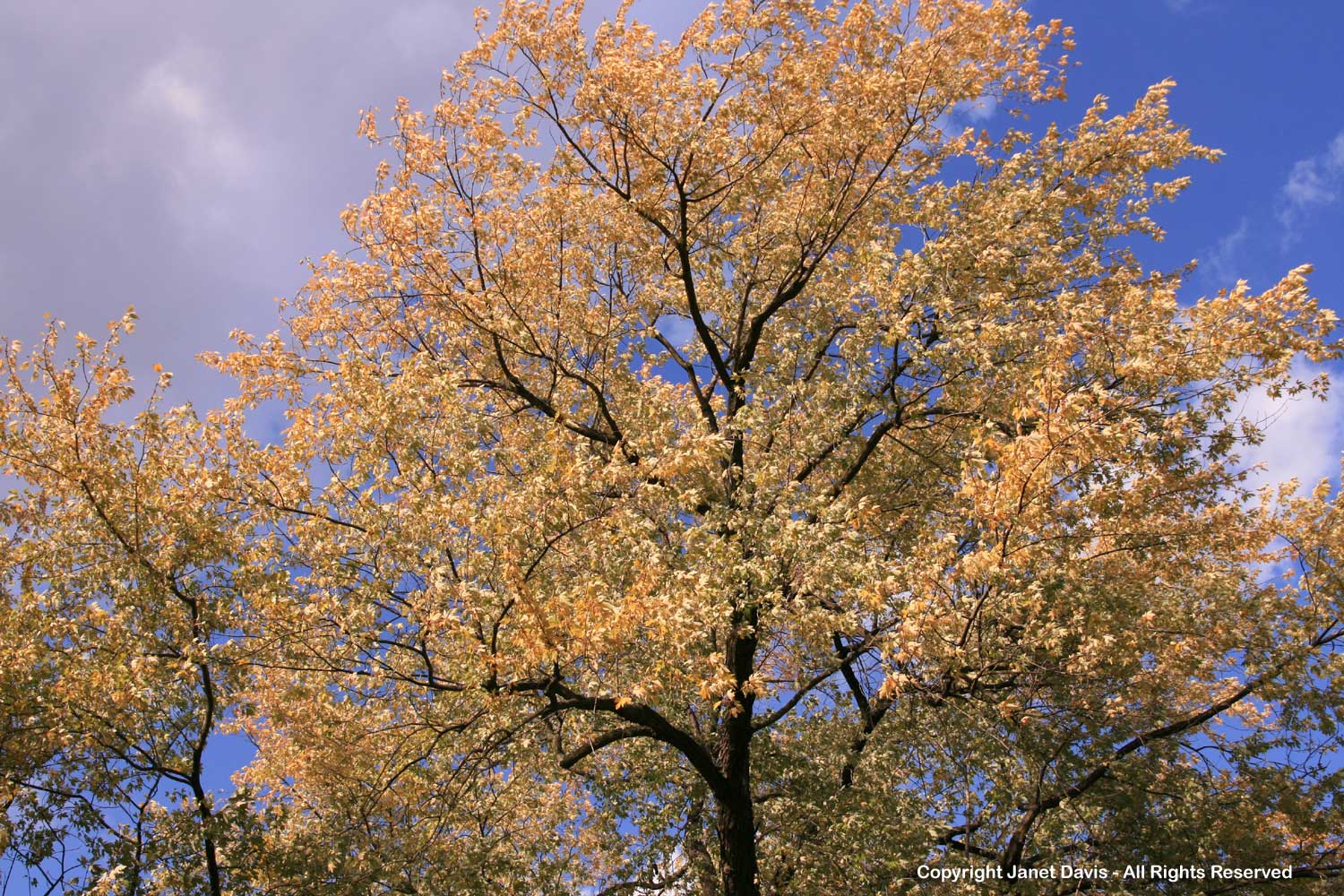
Compared to red maple, silver maple leaves are narrow and very deeply notched.
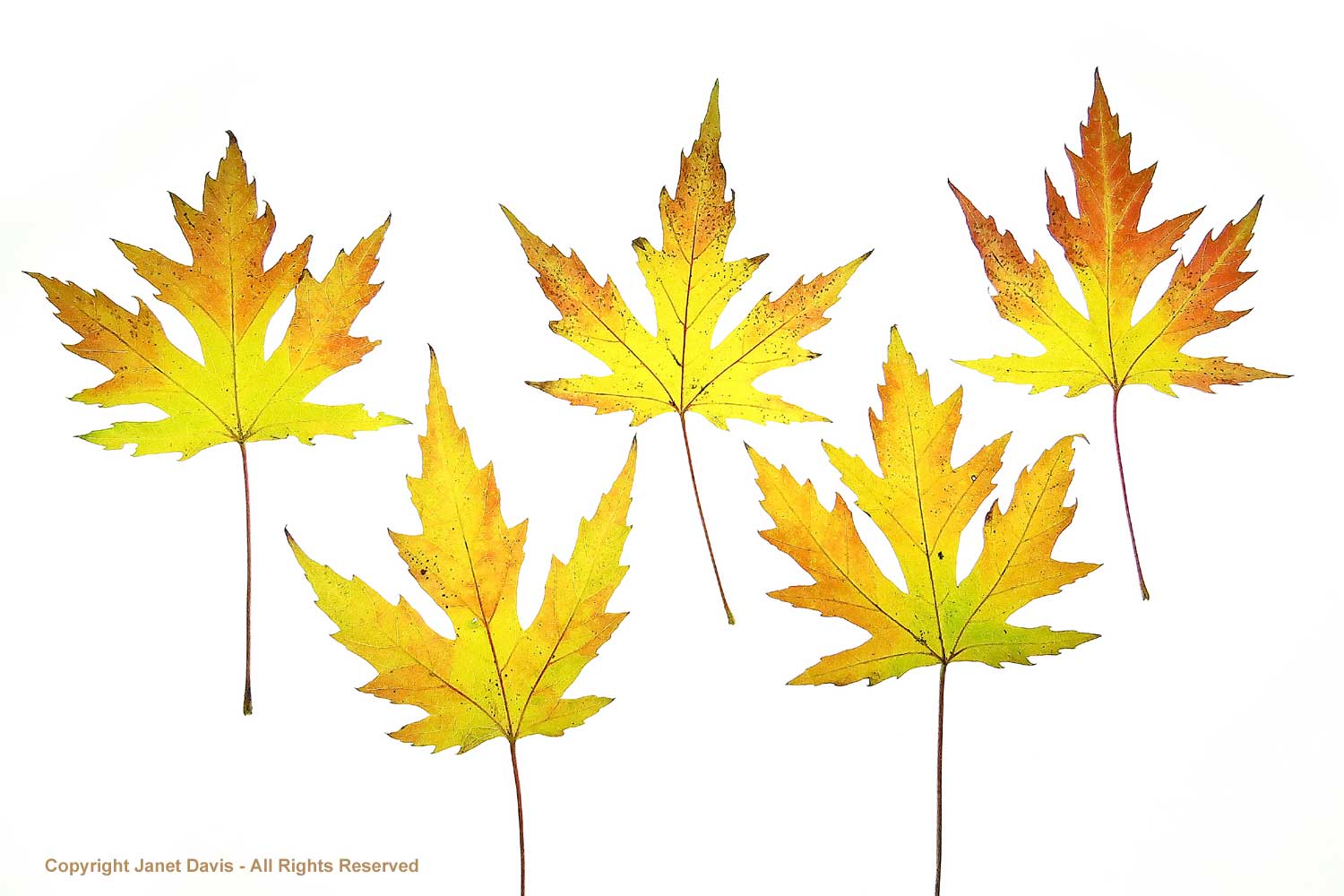
There is an attractive, naturally-occurring hybrid of red and silver maples called Freeman maple (Acer x freemanii). Named in 1969 for Oliver Myles Freeman (1891-1979) of the U.S. National Arboretum……

…… who made the first controlled cross of the species in 1933, using red maple as the female parent, it blends the best traits of both species: the form and rich fall colour of red maple with the fast growth and cultural adaptability of silver maple.
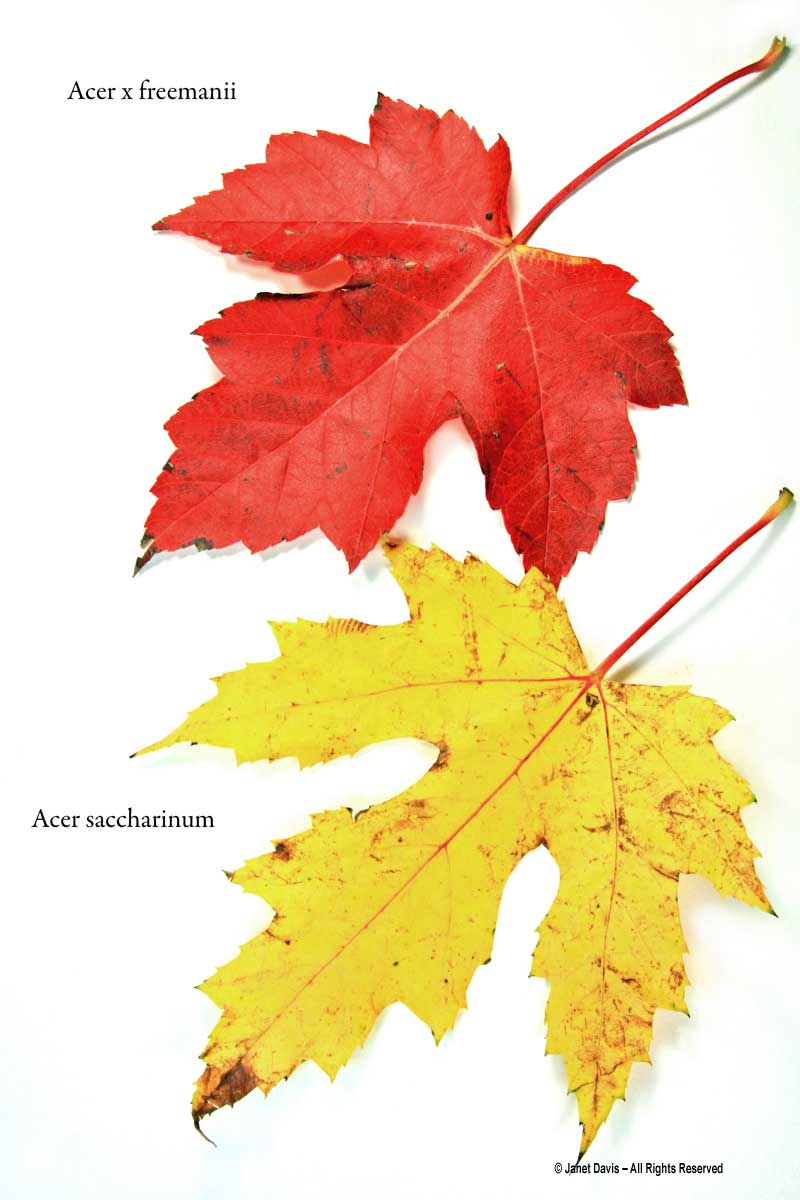
Growing 40-60 feet (12-18 m) tall with a 20-40 feet (6-12 m) spread, it has become a popular street tree in Toronto. There are also many specimens at Mount Pleasant Cemetery, below.
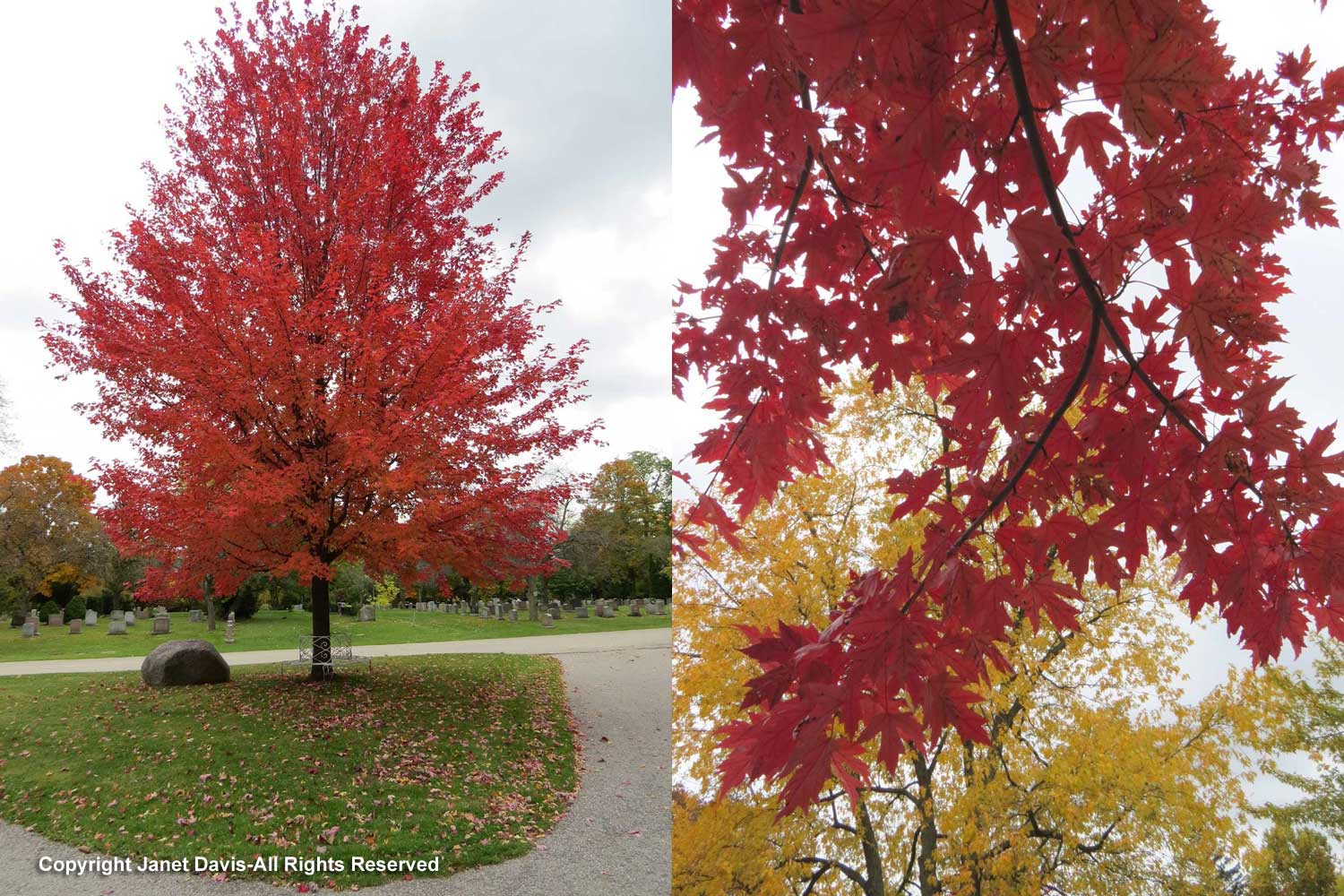
When I created my “leaf dancers” blog in November 2020 (see Pigments of my Imagination), I gathered small Freeman maple leaves from the boulevard tree across the street to fashion the skirts of my Maple Maypole dancers. I like to think Oliver Freeman would be amused to see them.
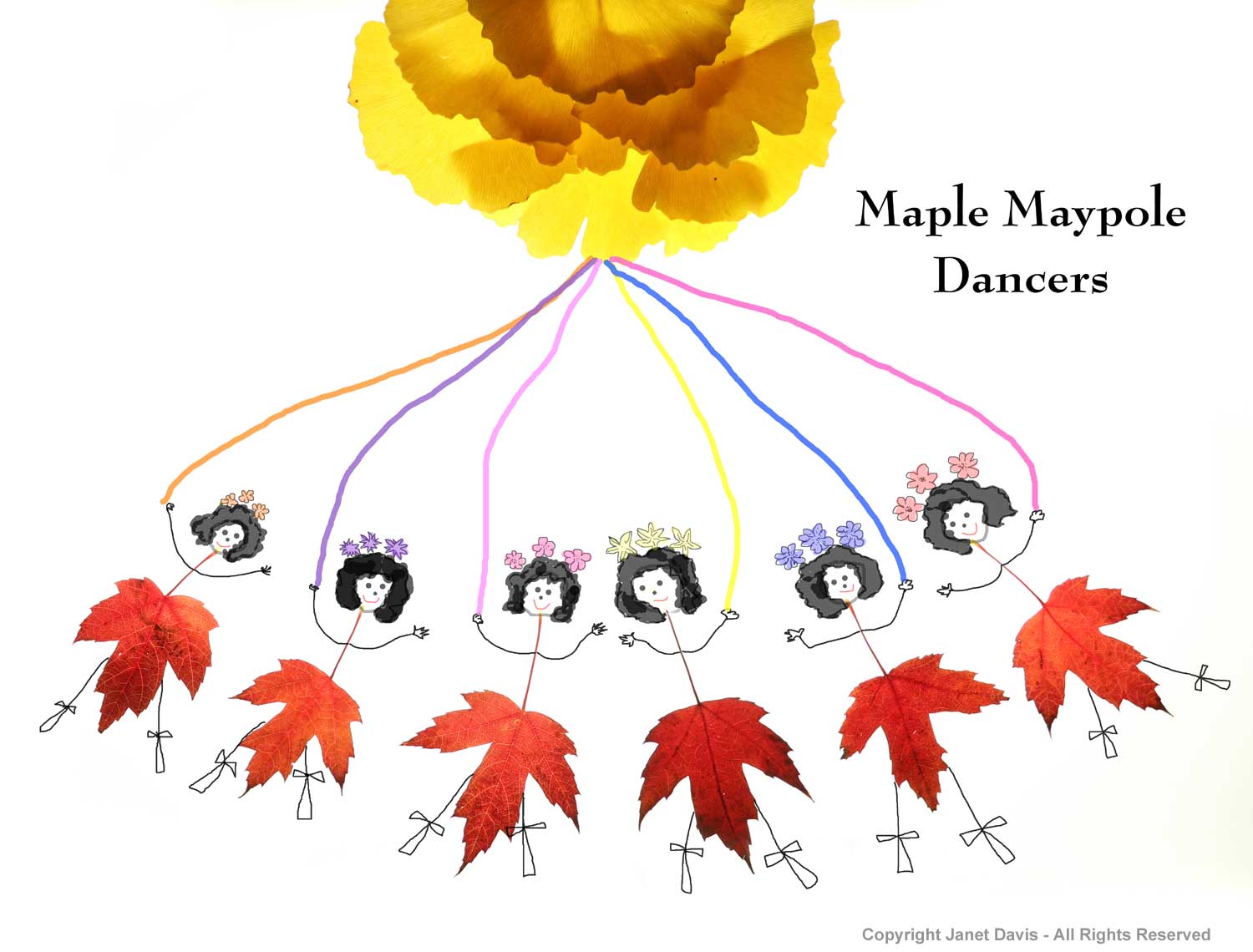
Finally, a little maple that grows in the shady understory of northeastern forests, including the mixed woods near our cottage on Lake Muskoka: striped maple (Acer pensylvanicum). It’s also called “moose maple” because it is sometimes the winter food of moose and white-tailed deer; squirrels and chipmunks forage on its twigs; and many birds consume the seeds. Though occasionally seen as a small, single-trunked tree, it is usually found in nature as a multi-stemmed shrub, seldom exceeding 20 feet (6 m). Taxonomically, it is the only non-Asian species in the Acer section Macrantha, or “snakebark maples”; all the other 18-21 species, e.g. A. davidii, A. rufinerve, A. tomentosum, occur in China, eastern Russia, Korea, Japan or Myanmar. The photo below shows its dainty samaras.
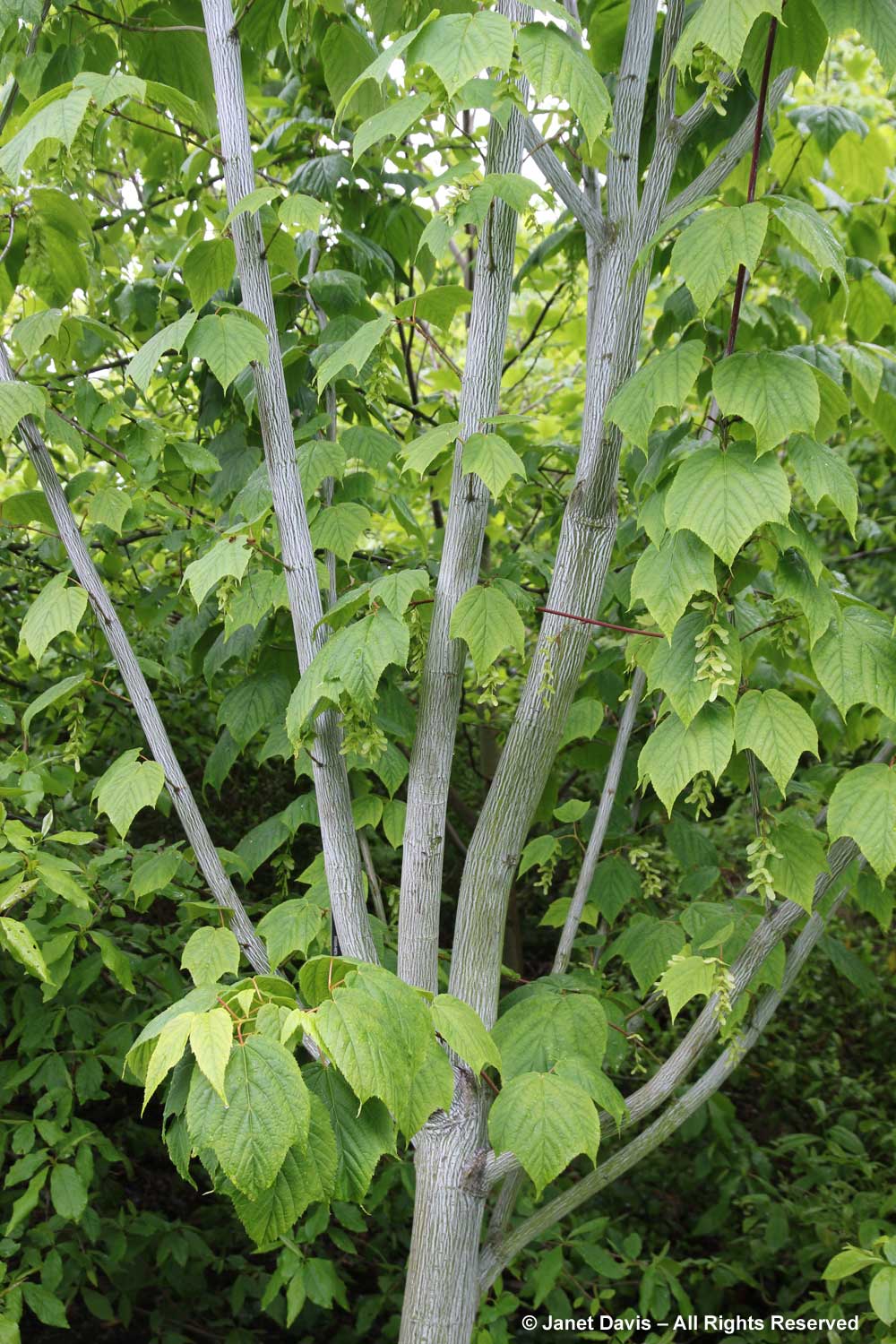
Its leaves have three shallow lobes and the greenish flowers are held in arching racemes. If you look very closely, you can see an early instar of gypsy moth or LDD moth (Lymantria dispar dispar) on the lower right of the leaf. In May, I still thought we’d survive the onslaught of this destructive pest; by mid-summer, it was clear we had not, as you can read in my 2021 blog.
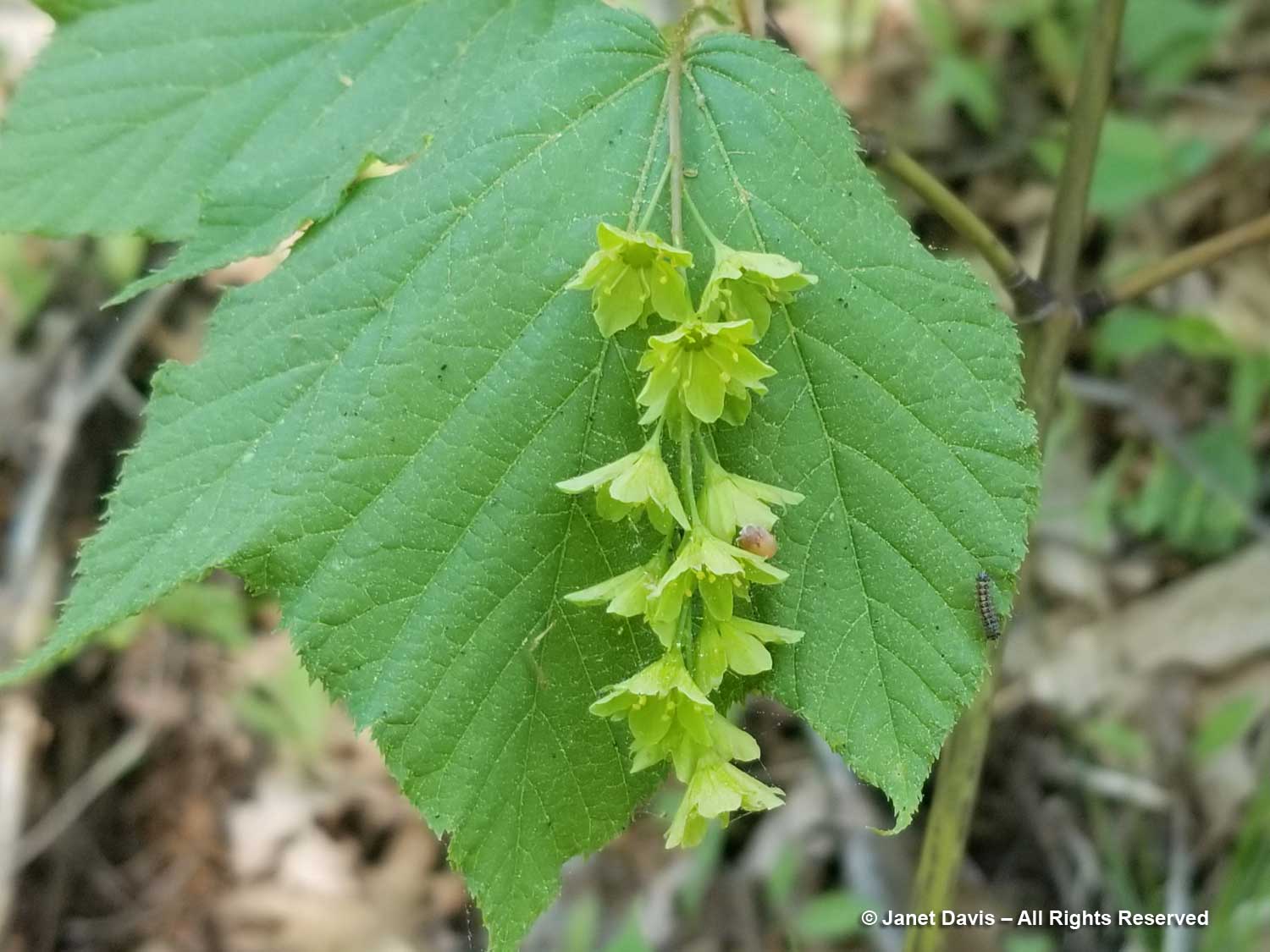
Though there are other maple trees in North America, including mountain maple (A. spicatum), Manitoba maple (A. negundo) and black maple (A. nigrum) in the east and central Canada and bigleaf maple (A. macrophyllum), Douglas maple (A. glabrum subsp. douglasii) and vine maple (A. circinatum) in the west, I’ve included in this stroll the beautiful trees I see each year here in Ontario. Oh, there’s one more maple we see fairly often – and it’s native right across the country. My little granddaughter once confused it with the phrase “make believe”, but it is our true (if slightly stylized) “maple leaf forever”.

********
Want to read about more North American trees? See my recent blogs on tuliptree (Liriodendron tulipifera) and redbuds (Cercis canadensis and its cousins). And here is one on fall colour in Mount Pleasant Cemetery.

